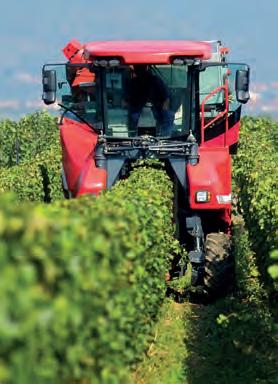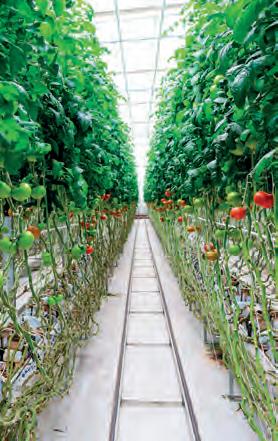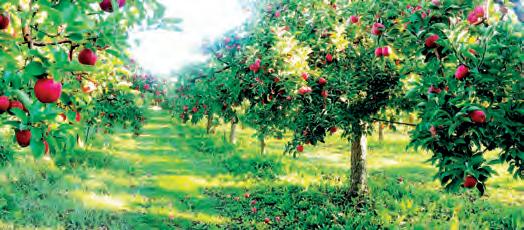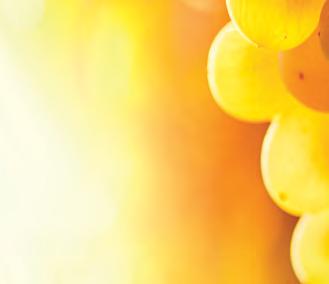

















































































































































































Annual members day featuring recent scientific research, plus tastings of NIAB wine
Members-only website and enewsletter, presenting project updates, cool climate viticulture and wine news, challenges and solutions, regenerative viticulture and new technology

Annual technical webinar on a topic requested by members
National and international members-only tours and visits



















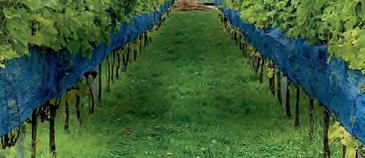
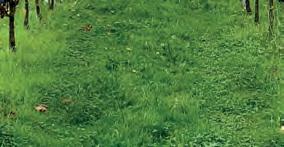














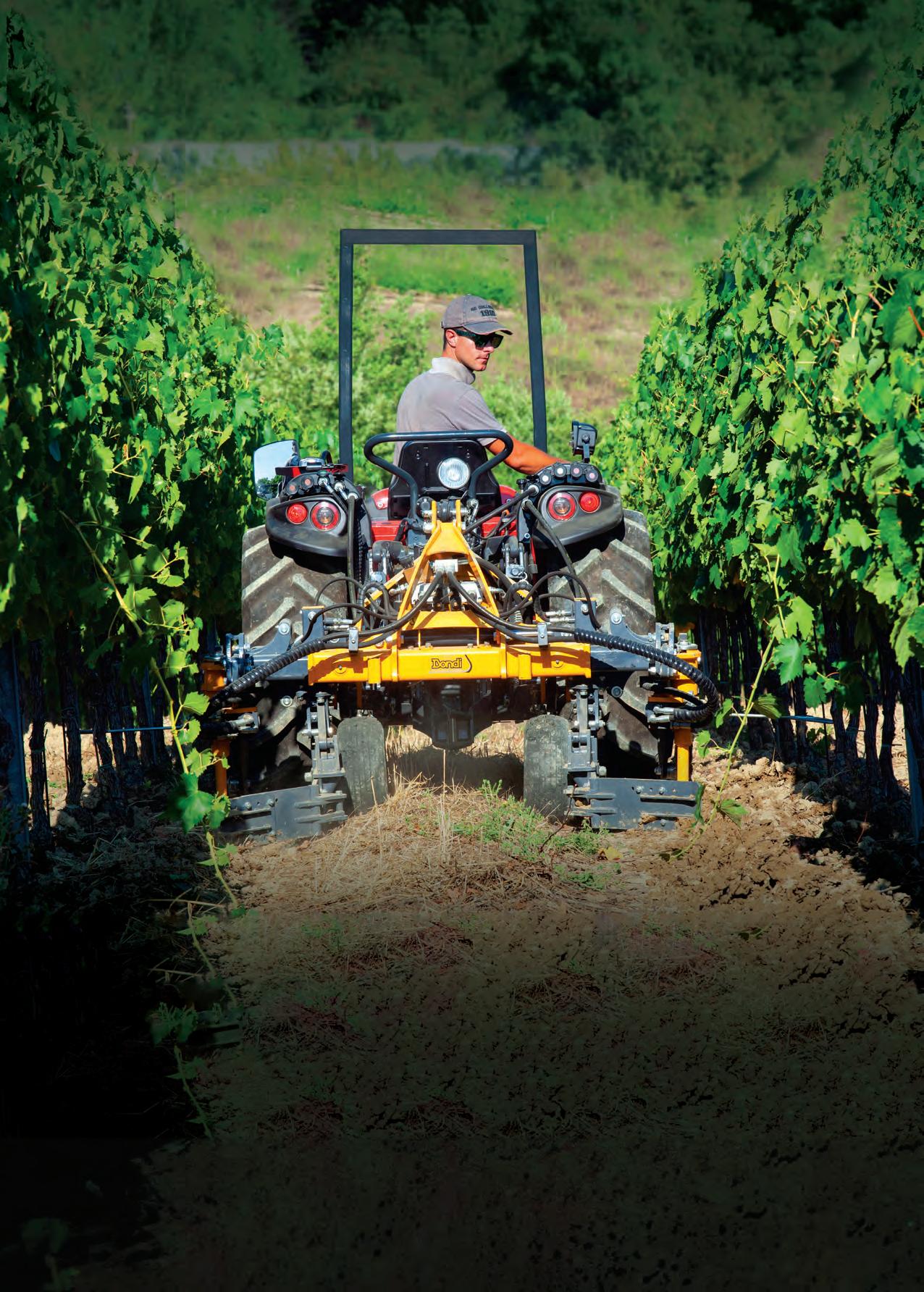
The Fruit & Vine team enjoyed a busy day at Fruit Focus in early July, meeting readers and catching up with clients. You can read more about the event on page 29. Pictured (l-r) are: Marketing executive, Patrick Over; multiplatform journalist, Aleksandra Cupriak; sales executive, William Taylor; Fruit & Vine sales specialist, Samantha Wilson; and sales director, Zohra Mitchell


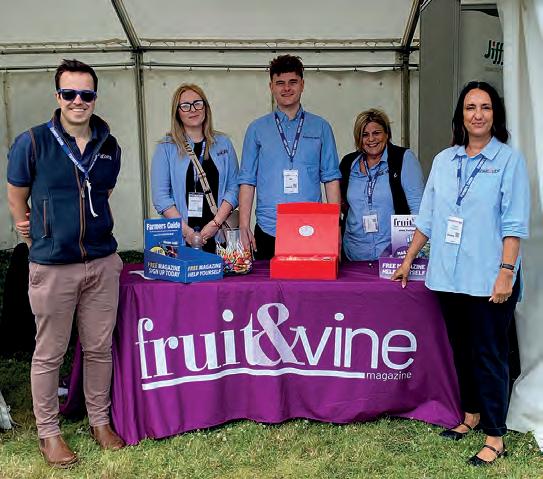




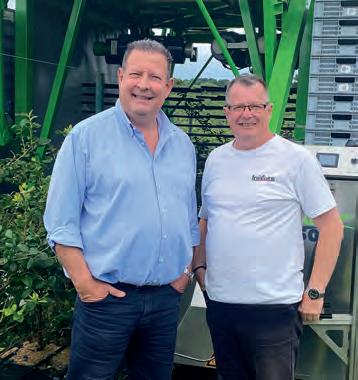


Editor Rachel Hicks attended the Groundswell Festival, where she chatted with VineWorks business director and head of vineyard services, Chris Buckley (left) and viticulturist Patrick Martin. Read VineWorks' latest advice on cover crops on page 36
Machinery editor Neale Byart headed to fruit grower Hall Hunter Partnership in Wokingham, to see their latest machinery purchases in action. The team have recently started using a Harvy 500 blueberry harvester, as well as an Elifab grading and packing machine – read the full report on page 17. Neale is pictured with Hall Hunter managing director, Jim Floor
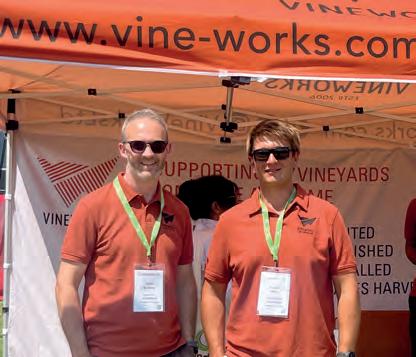


News
Products, research and events you need to know about
Special report
The importance of Great British cider and protecting the industry
Special report
Does your vineyard or orchard need a Babydoll?
Machinery
Hall Hunter brings automation to blueberry production
Machinery
NP Seymour event generates "considerable interest"
Grower pro le
Berry grower is adopting new technology to meet ambitious targets
Show review
Latest technology for growers showcased at Fruit Focus 2024
Agronomy
Challenging season poses disease and insect control questions
Special report
Agronomy
Cover cropping in UK vineyards
Agronomy
Planning for a hassle-free harvest in the vineyard
Grower pro le
Little Wold Vineyard is a true family a air
Technical advice
Measuring and managing acidity in wine
Professional advice
Free business advice helps familyrun vineyard to grow sustainably
Monitoring codling moth numbers remotely and in real time 06 10 13 17 21 25 29 32 36 39 43 50 54 49 35
Technical advice
52 66 Professional advice
Vineyard branding: From roots to reputation
Boost your winery's business power with software solutions
In the know
Ali Capper discusses what the future holds for British apples and pears
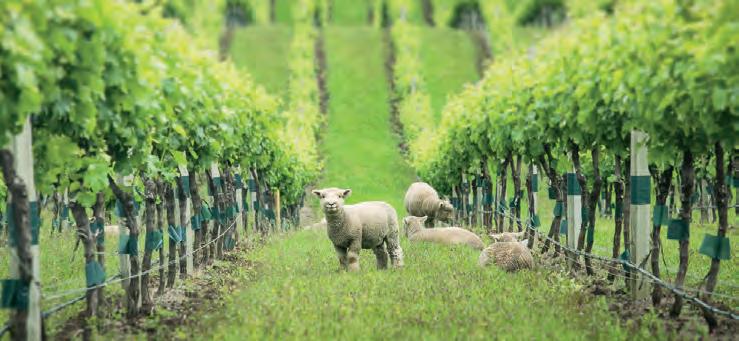


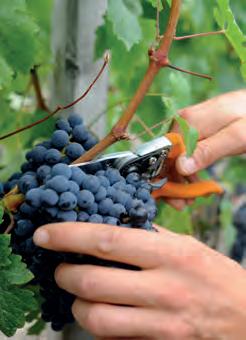








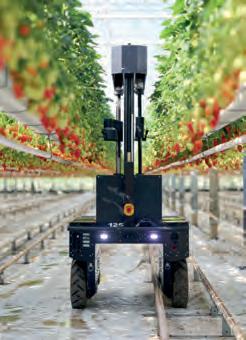



www.fruitandvine.co.uk
Directors


Editorial





Managing director
Julie Goulding julie@fruitandvine.co.uk
Director
Greg Goulding greg@fruitandvine.co.uk
Editor
Rachel Hicks
rachel@fruitandvine.co.uk
Deputy editor
Sarah Kidby hello@fruitandvine.co.uk
Machinery editor Neale Byart
hello@fruitandvine.co.uk
Machinery contributor
David Williams
hello@fruitandvine.co.uk
Multiplatform journalist Aleksandra Cupriak hello@fruitandvine.co.uk
Advertising








Sales director
Zohra Mitchell zohra@fruitandvine.co.uk
Fruit & Vine specialist
Samantha Wilson sam@fruitandvine.co.uk
Senior sales executive
Joanna Blower
hello@fruitandvine.co.uk
Senior sales executive
Jana Moyes
hello@fruitandvine.co.uk
Sales executive
Alex Coe
hello@fruitandvine.co.uk
Sales executive
Rosanna Sweet
hello@fruitandvine.co.uk
Sales executive
William Taylor
hello@fruitandvine.co.uk
Classi ed sales manager
Nicki Procter hello@fruitandvine.co.uk
Marketing



Marketing manager
KM Sharp
hello@fruitandvine.co.uk
Digital marketing executive
Patrick Over hello@fruitandvine.co.uk
Publishing assistant
Kat Morton hello@fruitandvine.co.uk

Design & Production

Production manager
Martyn Smith
hello@fruitandvine.co.uk
As the fresh produce industry, retailers and NGOs continue to explore ways to reduce plastic within fresh produce, British Apples & Pears Limited (BAPL) has published a new report into potential solutions.
The 'BAPL Report into the Current Position of Single-Use Plastic Packaging in the UK Top Fruit Sector' was written by Claire Donovan, a retail expert and experienced food production specialist.
Within the report, Claire points out that currently around 70% of apples and pears are sold in a ow wrapped or bagged format. This format facilitates a range of sizes and counts and allows good visibility of the fruit for customers. As well as ease of transport, packaging also confers protection from a hygiene perspective which, Claire points out, is a concern for customers.
Loose sales account for the remainder of sales, and whilst the results of customer research suggests that they wish to buy more loose fresh produce, WRAP’s recent research suggests that only around 23% of customers actually shop loose apples, as opposed to 76% of bananas being bought loose.
Within the report, Claire explains that unfortunately, for many reasons, UK plastics recycling has not been as successful as hoped. In 2021, 2.5 million tonnes of plastic waste was generated across UK households and just 44% of that was recycled.
The report stresses the urgent need to create a cross-retailer/
industry taskforce to nd solutions for the sector. This is one of seven asks set out in the report that would support future e orts towards minimising plastic pollution.
Another key ask in the report is the need for the UK government to meet its commitment to consistent home/kerbside collection and recycling infrastructure.
“This is a complex, but important area of focus for UK apple and pear growers,” explains Ali Capper, executive chair of BAPL. “We absolutely want to minimise plastic in the production and sale of British apples and pears, but we must fully consider the implications of proposed changes. We need to be especially mindful of keeping food waste to a minimum. We also need to ensure we’re not just moving environmental challenges from one part of the supply chain to another.
“This report is an important contribution to discussions, but most critical is that government, growers, NGOs and retailers come together now to work out the best possible solutions. That way the full implications and bene ts of all approaches can be properly considered.”
You can read the full report on the BAPL website: www. britishapplesandpears.co.uk

Kubota Corporation and French start-up UV Boosting have announced a partnership to jointly promote innovation with sustainable solutions for the viticulture industry.
UV Boosting has developed a patented solution for stimulating a plant’s natural defences, through the use of UV-C light ashes. This allows growers to reduce their reliance on fungicides and minimise damage caused by pathogens and other abiotic stresses such as spring frost or drought. UV Boosting’s UV-C light ash technology is crop agnostic and the existing implement portfolio can be easily extended into other crops.
Kubota plans to tackle global challenges, such as environmental regulations, climate impacts, and labour shortages, by expanding community-focused operations and o ering integrated solutions and technological advancements for customers.
Daria Batukhtina, strategic business development manager at Kubota Innovation Center Europe, commented: “Increasing regulatory restrictions and environmental concerns are enabling a need for alternatives to minimise chemical inputs in speciality crops. This pilot program with several growers and dealers is a part of Kubota’s strategy to create an eco-system which allows innovation to evolve, through partnerships with external businesses

such as AgTech start-ups, agricultural producers, research institutes and universities.”
The pilot programme is taking place in Brescia, Italy, and Anjou, France. The participating dealers will manage and support UV Boosting’s technology, and collate customer feedback. The distribution network already recognises an increasing demand for new environmentally friendly solutions that enables plants to self-protect, through UV light stimulation.
Herve Gerard-Biard, vice president of business development, Kubota Holding Europe BV said: “With this partnership, Kubota is extending its scope into alternative crop protection solutions and accelerating its innovation strategy with the objective of creating new business opportunities.”
According to experts and backed by scienti c evidence, Kubota and UV Boosting say, UV light solutions secure the yield for organic, biodynamic or conventional wine growers. Growers will apply four to seven treatments during the season to evaluate the technology impact on yield results, in addition to the overall e ectiveness on plant health.
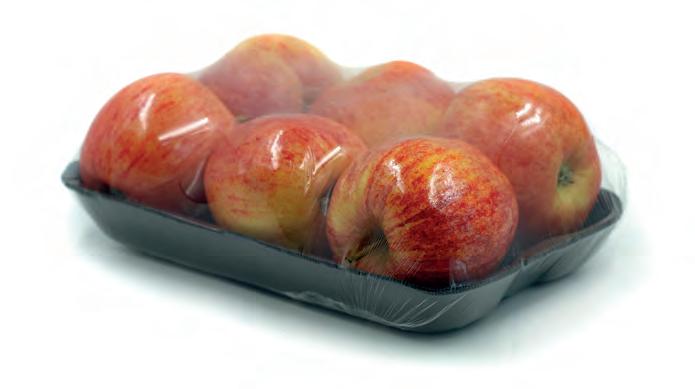
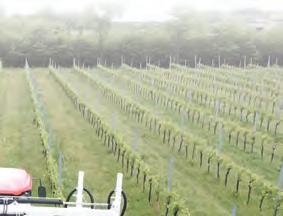






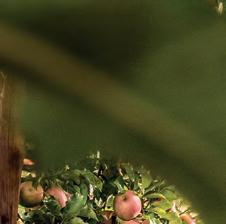




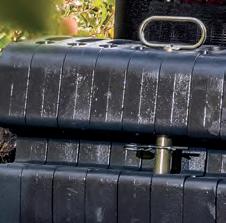





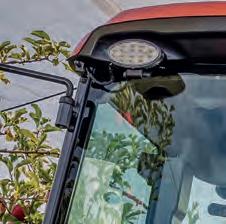






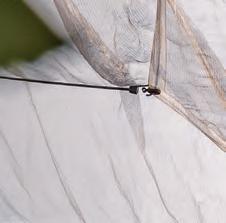

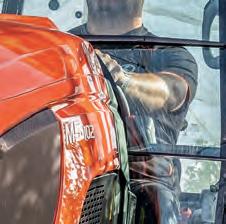







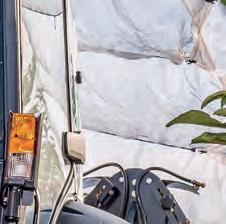
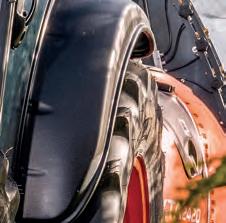

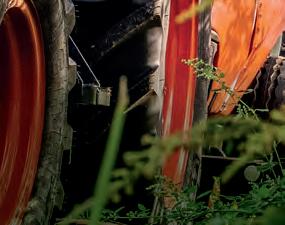











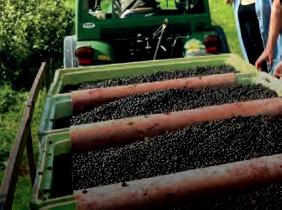


the rst time this year, and early yields and quality have been very promising.


Jo Hilditch, chairperson at the Blackcurrant Foundation, commented: “The berries are the biggest I've ever seen, high in sugar and ready to go. However, climate change is a serious issue, and the weather earlier this year made it very di cult and sometimes impossible to get our cuttings in the ground.”
Representing 36 growers across the UK, the Blackcurrant Foundation reports that the nation’s blackcurrant crop is thriving, with an anticipated yield of over 11,600 tonnes this year.
British blackcurrant growers once again faced challenging weather patterns this year. One site in Kent recorded an exceptionally wet winter, with 1,109.6mm of rain by the end of May. The warm winter brought insu cient winter chill for older blackcurrant varieties across most regions except Scotland. However, the groundwork for the 2024 crop was laid in July 2023, when favourable weather allowed
the bushes to produce extension growth, which owered this year and underpins the current harvest. Additionally new climate-resilient varieties like Ben Lui and Ben Macdui are being harvested in quantity for
Berry producer-marketer, BerryWorld says it was delighted to see its growers sweep numerous awards at the prestigious National Cherry & Soft Fruit Show in July.
The award-winning berries were supplied by BerryWorld's esteemed growers: Edward Vinson, Withers Farm, and Tasker Partnership. The growers clinched top honours in several key categories, including:
• Best exhibit of strawberry –Eves Joy – from Edward Vinson
• Best exhibit of raspberry –
BerryWorld Jewel from Edward Vinson
• Best exhibit of everbearer strawberry – Eves Delight 2 from Edward Vinson
• Best supermarket strawberry pack –
1st place: Eves Delight 2 grown by Wye Fruit (Withers Farm)
2nd place: Eves Joy grown by Tasker Partnership
3rd place: Eves Delight 2 grown by Tasker Partnership.
BerryWorld raspberry varieties also scooped further awards:
• Best summer fruiting variety –1st and 2nd place to BerryWorld Jewel and BerryWorld Ruby respectively
• Best UK bred variety – 1st and 3rd place to BerryWorld Jewel and BerryWorld Ruby respectively.
As a sponsor of the event, BerryWorld says it was delighted to discover that winner, Edward Vinson, would be delivering the awardwinning berries to Buckingham Palace for the royal family's enjoyment, underscoring the exceptional quality of the fruit.
Graham Clarkson, breeding director at Edward Vinson and BerryWorld Plus, commented: “These awards validate our breeding
programme's focus on developing varieties that excel in yield,
Simon Hill, senior category buyer at Suntory GB&I, added: “The spring weather was conducive to good growing conditions with plenty of rain, and unlike Europe, we escaped any late frosts, which can damage blossom. Warm weather in late May and early June accelerated the fruit ripening, and we started processing earlier than usual. Recent wet weather has a ected the fruit sugar but has given very good yields and a heavy crop."
Over 90% of British blackcurrants are destined for Ribena, with a small amount nding their way to the supermarket shelves and other products, including frozen formats and other soft and alcoholic drinks.
avour, texture, and shelf life. This recognition drives us to continue innovating.”
This achievement holds particular signi cance as BerryWorld celebrates its 30th anniversary in the berry industry this year.
The company's UK technical director, Stefan Rusev, stated: “These awards are a testament to three decades of dedication to berry innovation and the ongoing commitment by our top-tier growers to deliver superior taste and quality to consumers.”
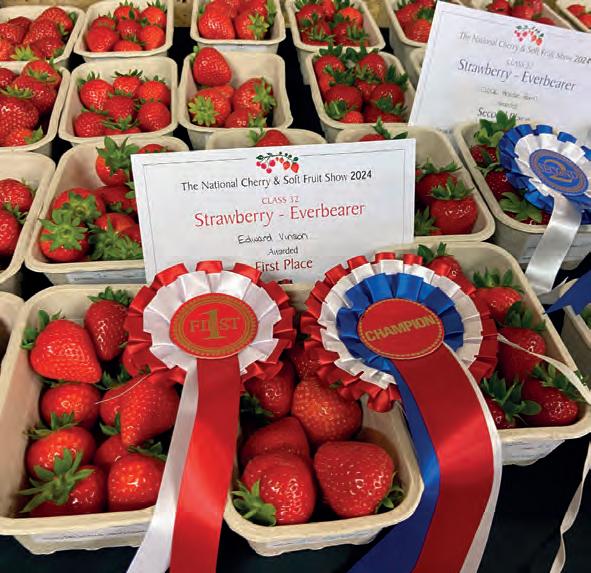
As part of its growth series releases, WineGB has revealed that there are now 1,030 vineyards in the UK – a 9.2% rise since the last annual report.
This is according to new gures from the Food Standards Agency Wine Team. In addition, last year English and Welsh wine sales grew by 10% compared to 2022.
In 2023, 87 new vineyards were registered bringing the total number to over 1,000 for the rst time. Government data also shows that winery numbers have risen from 209 to 221 and that the total area under vine now stands at 4,209 hectares, representing a growth rate of 123% in 10 years.
Production returns supplied to the Food Standards Agency Wine Team con rmed early estimations in the WineGB Harvest Report that 2023 had been a record year. O cial gures for production in 2023 totalled 161,960.84 hectolitres, the equivalent of 21.6 million bottles, up 77% on 2022.
While last year’s volume growth was signi cant, the UK’s marginal climate will continue to deliver vintage variability with the
production ve-year average up from 10.7 million to 12.4m bottles.
WineGB’s data shows that sales of English and Welsh wine continue to grow sustainably and manageably as new plantings come into production. Sales rose 10% last year to reach 8.8m bottles. Over a ve-year time horizon since 2018, sales have consistently risen.
• Sales of sparkling wine have risen 187% since 2018, from 2.2m bottles to 6.2m in 2023

• Sales of still wine have increased by 117% over the same period, from 1.2m to 2.6m bottles. This growth is even more impressive as it is against the wider trend of falling UK and global wine consumption.
Nicola Bates, CEO of WineGB, said: “This is our year of growth and surpassing the 1,000-vineyard-mark is a real milestone for our industry and cements our position as the UK’s fastest growing agricultural sector.
“We are growing sustainably with our production, and securing a 10% rise in sales, which is all the more remarkable with the wider decline in UK wine consumption.
“As consumers start to feel more con dent with the economy, they will likely have more disposable income to discover our wines in pubs, bars, and restaurants. We expect a wider re-boot that will support our future wines reaching new markets and new drinkers.”














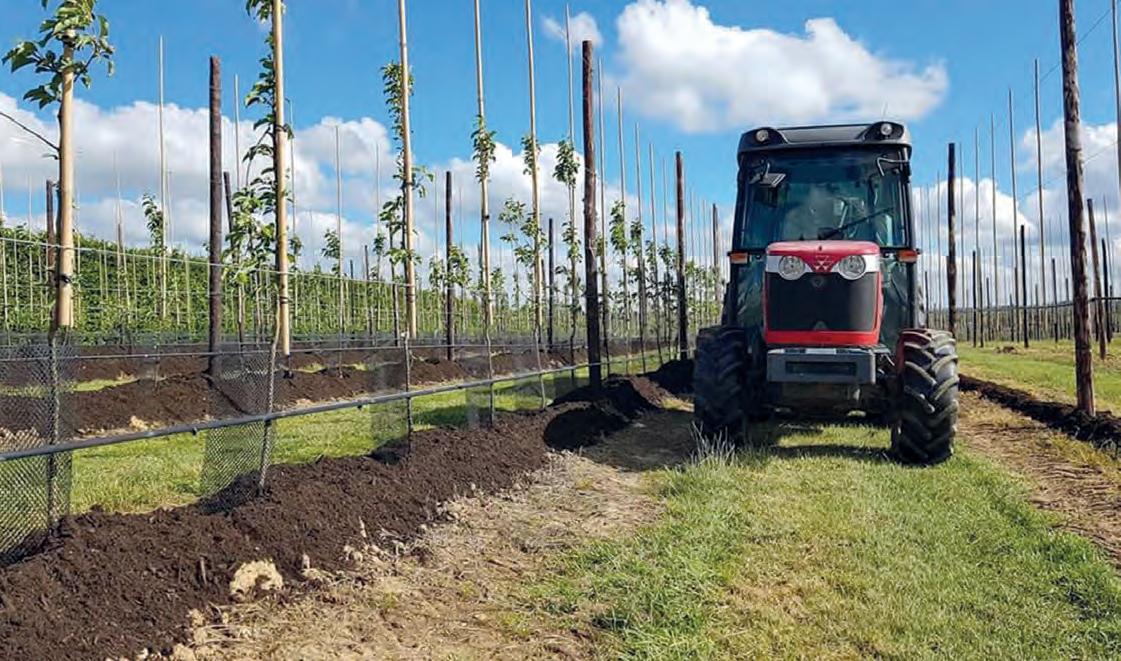

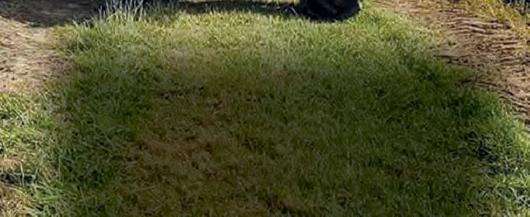
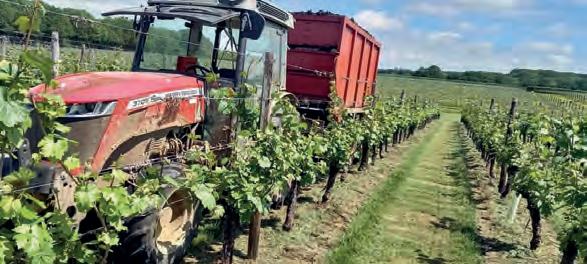











National Association of Cider Makers CEO, Fenella Tyler, highlights the importance of protecting the British cider industry.

Cider apples, unsurprisingly, are grown speci cally for making cider. There are more than 250 varieties grown in the UK and they all have in common features that leave them with only one use: Cider.
Cider apples and cider making are part of Great British culture dating back centuries. The Romans brought apples for alcohol with them 2,000 years ago and cider making was a part of the culture inherited from the Norman invasion over 900 years ago. This is one of our oldest drinks and whilst cider making as an industry has evolved over time, the skill of the cider maker still relies on the traditions developed over centuries.
The cider market in the UK is relatively small. It represents between 5–10% of all alcohol consumed at any point in time, with beer, wines and spirits taking the majority of market share. However, when viewed globally, the UK cider market accounts for more than 30% of global cider consumption.
One major challenge faced by cider makers is scale, as a typical cider maker needs signi cant space to operate. Growing from a small or medium sized business can be challenging when there is a need to access large acreage of apple orchards, space for milling apples, vats to ferment the juice and then mature the cider over time. With a crop that typically harvests over a 12-week period in the autumn, the juice and fermented cider must be stored for use over the next 12 months.
Orchards require long term planning. A cider apple orchard will take around seven years from planting to reach break-even, and nine years to reach full maturity. The trees will then continue cropping well for more than 30 years.

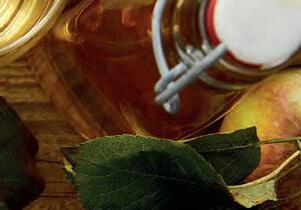


Cider makers therefore o er long-term contracts to encourage farmers to plant orchards, without any guarantee that the market will be buoyant by the time the trees mature. As an example, trees planted in 2002/2003 as the market started to grow, reached maturity just as the market stalled in 2010.
Defra records around 15,500 acres of cider apple trees grown in the UK, and the majority of these are to be found in the west and south-west of England. This is a regionally signi cant crop, but slides down the government priority list when compared to commercially grown crops of national scale.
After Brexit it was hoped that support for farmers would be broadened to include cider apples as a uniquely British approach to cider making and apple growing. Protecting these orchards through a long-term approach to agricultural support is essential for cider making, to ensure that trees thrive during the highs and lows of the cider market.
Excise duty rates are a major catalyst in terms of market success. When duty rates increase, the cider market tends to decline, but a positive approach to excise duty by the government can be the catalyst for market growth. With a new government just in place, cider makers and cider apple growers will be looking for positive signs that the government supports this important British industry. A fair legislative platform for cider can be the springboard for market growth both in the UK and for export, supporting an industry steeped in heritage, and an essential part of the rural economy.
Cider makers and orchards in counties such as Herefordshire, Somerset and Devon bring so much to their local areas. More than 11,500 jobs are created through cider making and the cider market has a category value of over £3 billion. Blossom time and harvesting attract large numbers of tourists, with more than a million people visiting cider makers and orchards across the regions. Orchards are a haven for biodiversity, and after the introduction of best orchard practice for cider apple orchards 25 years ago, the increase in natural features such as ponds, hedgerow and wider margins mean that these orchards support large numbers of pollinating species, birds, amphibians and mammals.
Cider makers have invested in sustainable solutions for many areas of their operations, with examples including reed bed e uent plants and waste-water recycling. Looking to the future, many see opportunities around renewables as large site footprints open up opportunities for solar.
As a centuries-old drink, cider should be celebrated as a great example of British heritage that is recognised and applauded around the world. The importance to rural economies, especially in traditional cider making counties, should be appreciated. Cider making and cider apple growing is a partnership between producers and farmers that is unique to Great Britain and must be protected. With a new government, the time is right for cider to be reevaluated and the support it needs put in place for future generations of cider makers, growers and of course, cider drinkers.


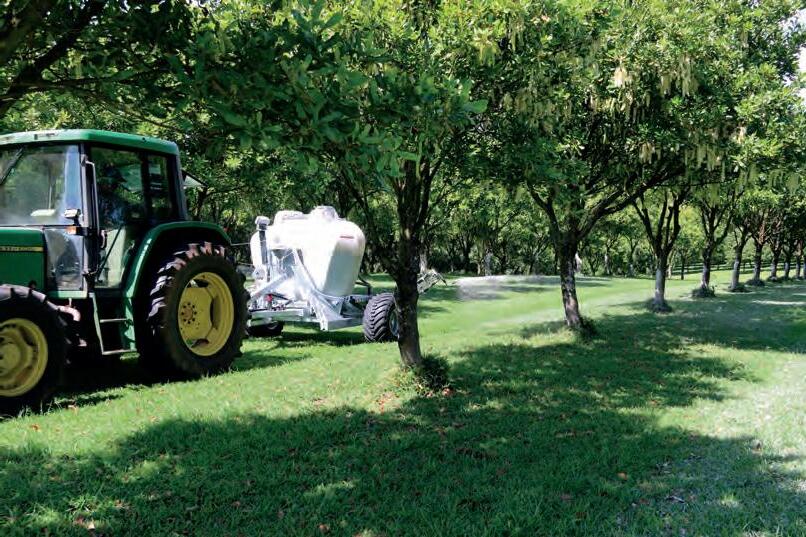
The Tow and Fert is a unique sprayer designed to mix and apply a wide range of nutrients and biostimulants. Our range of equipment gives unparalleled versatility and ease of application for your nutrient management programme.

• Application of fine lime/gypsum powder suspensions, viscous liquids and solutions
• Low pressure suitable for biologicals, compost teas/extracts
• Mixing and application of multiple nutrients in a single pass
• Precise application rates
• Accurate nutrient placement
• Dust free application
The Tow and Fert range comes in 5 sizes with various boom options suited for horticulture and tree crop applications. •

• Unique liquid formulation
• 15.6% increase in grape yield
• Larger, juicer grapes
• Improved Brix levels

The Deutz Fahr 5105D S, pictured with a Voxx Intervine Strimmer.
For more information on the range and to discuss your requiments contact our sales team today.


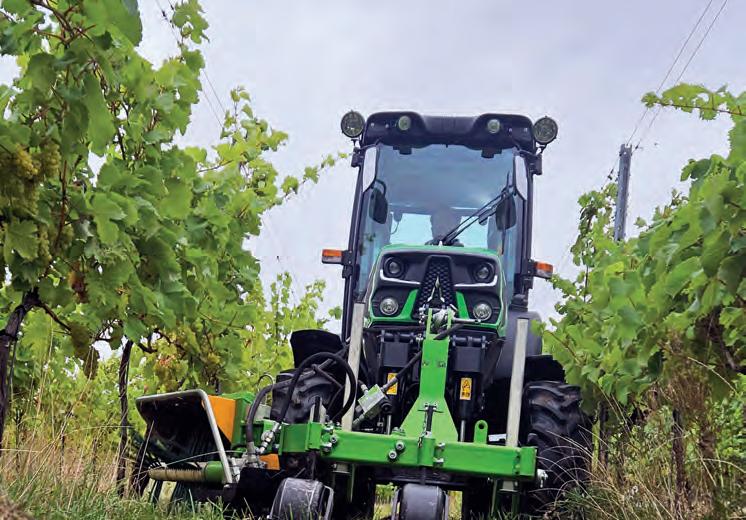














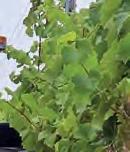
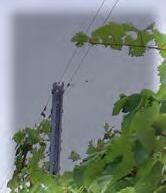












Does your vineyard or orchard need a
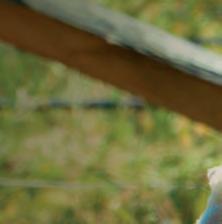
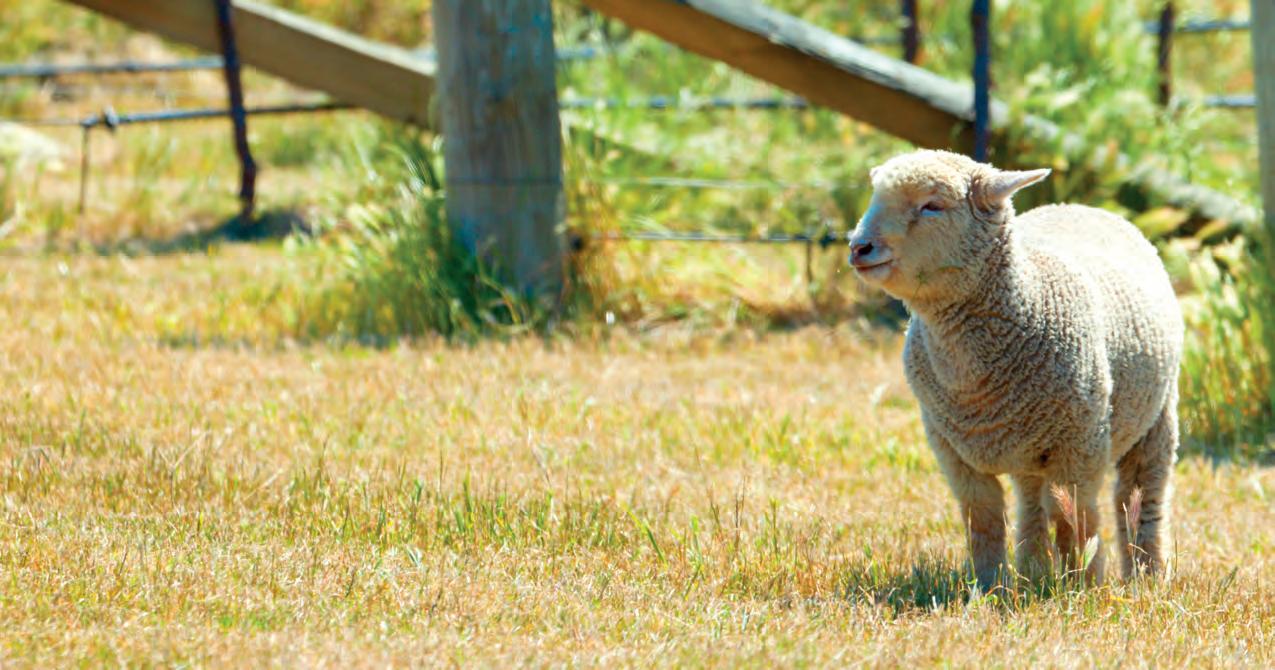





Earning its nickname from its ‘teddy bear-like’ appearance, the Babydoll breed dates back to the 1700s, on the South Down hills of Sussex. There were once 100,000 ewes in England but World War I brought about a sharp decline in numbers and the breed was all but extinct by the end of WW2. This was down to demand for larger cuts of meat, which caused a split within the breed – between the original Olde English Babydoll and the larger, ‘leggier’ Southdown. The traditional breed was reintroduced to the UK 20 years ago, but there are still fewer than 200 in the UK, and 400 in the whole of Europe.
Its miniature stature – measuring just 22 inches tall – may have been its undoing as a meat breed, but it makes the Babydoll ideal for vineyards and orchards, as the sheep are too small to reach the fruit.
Sheep o er a number of advantages in vineyards, especially those moving to regenerative practices, including eating weeds and ‘mowing’ between the vines, saving fuel, labour and herbicide use; as well as distributing free fertiliser. However, to prevent them eating the fruit, sheep are often only grazed from post-harvest to the pre-bud stage.
Heidi Bell, of Babydoll Sheep UK, is one of only eight Babydoll breeders in the UK, and keeper of the largest known UK ock – numbering 47 sheep. Keeping them on her own orchard, she says Babydolls are an e cient eco-mower and have an open, trusting nature that makes them easy to handle – with no need for a sheepdog.
One wine producer in New Zealand, meanwhile, has gone so far as to name a wine brand after this quirky breed. Using sheep to keep the vine rows tidy during the colder months is fairly common practice in New Zealand, but Yealands Wine Group, which makes Babydoll wine, believes it was the rst – and only – vineyard to trial grazing Babydolls when the grapes are ripening.
The sheep are used for weed control and to keep the grass short over winter, reducing the number of passes with a tractor, and adding a

Olde English ‘Babydoll’ Southdown sheep are one of the UK’s rarest sheep breeds – but for some vineyards and orchards around the world, they are making a comeback as an ‘ecomower’. Sarah Kidby reports.

dose of natural fertiliser to the mid-rows, which also improves soil quality.
In the warmer months, sheep are moved to the paddocks and cover crops and wild owers are planted between the vines to help manage the vine rows (and reduce mechanical mowing). Wild owers have the added bene t of attracting bene cial insects for extra pest control. Whilst agreeing that Babydolls are easy to handle, the team said they do have a tendency to misbehave and get through the fences, however.
Saving costs and labour
Stephanie Helm runs a 6ha vineyard and winery called The Vintners Daughter in Canberra, Australia, with her husband Ben Osborne. They decided to bring sheep into the vineyard as they wanted to reduce their herbicide use, but specialised mowing equipment was outside their price range. “Babydolls are perfect for vineyards due to their short necks, thick legs, solid body and gentle nature. Their build makes them unlikely to damage the vines, which means they can be used in the vineyard even during the growing season – and they also remove suckers from vine trunks,” Steph explained.
This has allowed them to cut back on fuel and labour costs. “We generally need to have teams of people debudding a few times a year but the sheep have eliminated the need for this labour. They also can work no matter the weather – this was very useful during a few back-to-back wet years where we weren’t able to drive a tractor into the vineyard without getting bogged. They also contribute to improving vineyard soil health by providing natural fertiliser and reducing the need for heavy machinery in the vineyard. This in turn leads to less soil compaction, improved soil fertility and structure, and healthier grapevine growth.”
With a docile temperament, the sheep haven’t caused any problems with breaking infrastructure like vines, irrigation or trellises, and they seem to have little interest in eating bark. However, Steph advises only using them in established vineyards. Tourism and sta wellbeing have also seen a
boost since the sheep were brought in. “They are very cute and people love seeing them in the vineyard. We know each and every one of them on sight by name, they are very friendly and love a pat – so they’ve been great for our own mental health and happiness too,” she added.
Things to consider
With Babydolls being a rare breed globally, Steph and Ben opted to breed them and their ock has expanded from ve to 50 in four years. Whilst this has brought extra revenue from selling rams and wethers to other studs and vineyards, it’s hard work. For most vineyards, Steph recommends obtaining a ock of wethers to avoid the additional work of breeding. They are also usually particularly docile and friendly.
The only real downside to the Babydolls has been the extra work in terms of husbandry and initial investment in handling infrastructure. “They need daily checks and then all of the usual sheep husbandry tasks – shearing, foot trimming, yearly vaccinations, worm counts and drenches if needed,” Steph said.
Ben Osborne runs The Vintner’s Daughter with Steph Helm
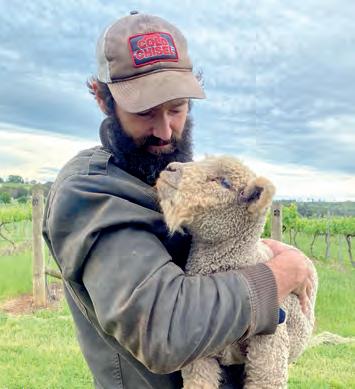

“Vineyard owners will need to ensure they have appropriate infrastructure in place for handling and husbandry, such as sheep yards and races, watering points, mineral blocks and appropriate fencing. Providing some sort of alternative shade or shelter is also important, as vines do not provide adequate protection. Vineyard owners should also plan for supplementary feeding in dry times.”
Additionally, the breed is prone to excessive weight gain, especially the wethers, so you need to keep an eye on this. Getting an expert in for shearing and foot trimming is also advised.
Are you ready for sheep?
Heidi Bell is one of only eight Babydoll breeders in the UK. Image © Babydoll Sheep UK
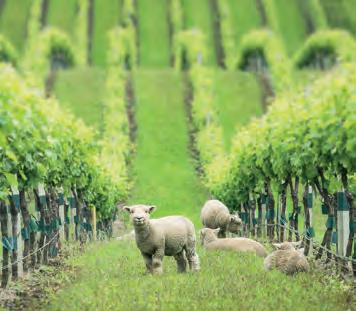
700 breeding ewes in Kent, recommends yearly vaccinations against clostridial disease, worming according to faecal egg counts and veterinary advice, and blow y protection. Annual shearing will also be needed in early summer, so book a shearer in good time.

The three big health threats for sheep are y strike, gut worms and clostridial disease, Kaz con rmed – but there’s no boilerplate health plan that will suit all farms, as it varies depending on the year, stocking density, location, climate and grazing history. Kaz stressed the importance of having a proactive, rather than reactive relationship with your vet.
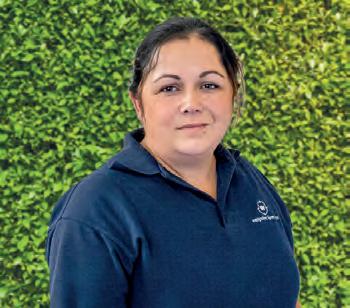
the depending on the year, stocking density, stressed the importance of having a proactive,
Kaz Strycharczyk, a partner at Black Sheep Farm Vets, says the rst thing to ask yourself is: do you need to own the sheep? With lots of people looking for land to graze their sheep on, this could be a great way to dip your toe in, without being fully committed.
As many vineyards and orchards will be new to sheep keeping, there are many things to consider...
Infrastructure: Sheep must be registered with Defra and the Animal and Plant Health Agency; and you’ll need to ll in movement records. There are also strict rules on medicines usage. Sharminda Lockwood, of Westpoint Farm Vets, part of the VetPartners group, added that you’ll need sheep hurdles to pen them for routine management (they may need training to come into the pen), water provision, potentially electric fencing and someone to check the sheep daily. Spring and summer grazing provision will be needed when sheep are not in the vineyard, and you’ll need to register with a local farm vet. It’s also a good idea to sign up for a sheep keeping course if you’re a rst-time keeper.
Health and welfare: Sharminda, who keeps


Spending half an hour with them and getting and heartache in the long run,” he added.
Spending half an hour with them and getting a health plan will “save you a lot of money and heartache in the long run,” he added. Copper toxicity: If copper compounds are being used to protect vines from fungal disease, there’s a risk of chronic copper poisoning in sheep. Copper is a ‘Goldilocks’ trace element, in the sense that there’s a narrow range between too much and not enough, Kaz said. Breed is one factor that a ects copper requirements; for example, Texels are better at absorbing copper than Scottish Blackface, so require less to cause poisoning.
A recent study in France suggested overwintering sheep on copper-treated vines is reasonably safe if care is taken to leave time after harvest before introducing sheep and limiting the grazing season, Sharminda said. However, research into this area is ongoing. Any sickness or mortalities while grazing the vines should be investigated, and avoiding mineral buckets and additional feeds containing copper is sensible.
Your local vet can advise on breed selection, and also work out the amount of copper that’s likely being taken up by the sheep and how this relates to their daily requirements, Kaz noted.
Blood tests are also available to determine

Wine Group introduced Babydolls to its vineyards early on, and named its wine after them
copper status.
Breeding: Lambing can be a severe pinch point in terms of expertise and potential complications, so running a non-breeding (‘dry’) ock – e.g. groups of ewes and wethers (castrated males) – is advised. Should you decide to run a breeding ock, it’s worth attending a lambing course and spending time on a local sheep farm at lambing time for experience. Also, consider the additional costs and management practices – sourcing a ram, where to lamb, grazing requirements, and the plan for the young stock males, Sharminda concluded.









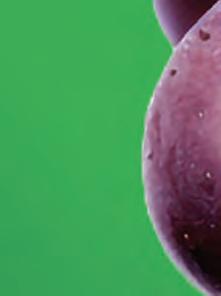




Dedicated to the development of innovative and dynamic integrated pest management solutions compatible with biological control agents. The Russell IPM Group provides growers with safe and sustainable tools for accurate and well-timed monitoring, prevention and suppression of pests. Reducing the need for pesticide intervention.
– Typical fruit damage can range from 5-20% in susceptible crops
– Typically achieves 2 generations per year



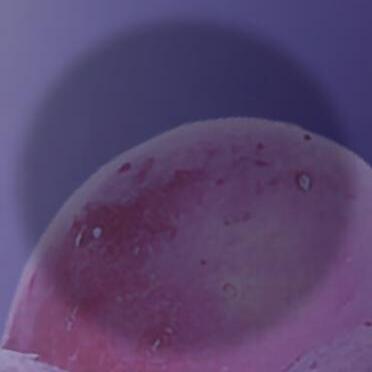
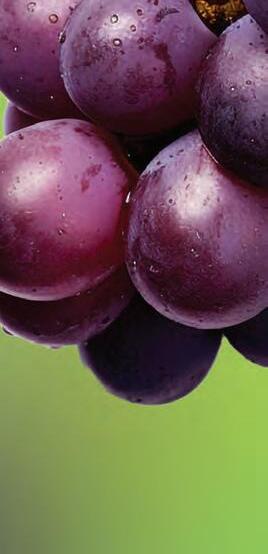
– Larvae feed beneath the calyx of young fruit, leaving a halo-like scar that can cause packed fruit to be downgraded. Older larvae can bore into mature fruit, causing it to drop
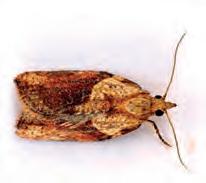
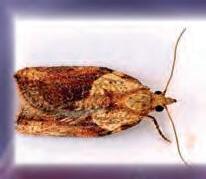


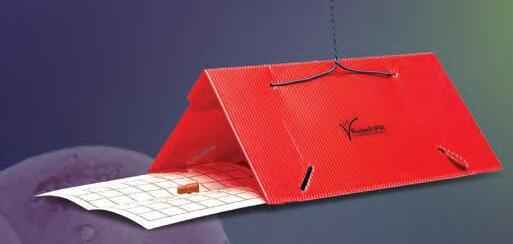
– Can achieve 13 generations per year in favourable conditions






– Female SWD puncture the surface of fruit in order to deposit their eggs. Larvae then hatch and feed on the fleshy pulp within fruits, diminishin



– Capable of 100% crop loss in cherry If left uncontrolled, and over 50% in other susceptible crops

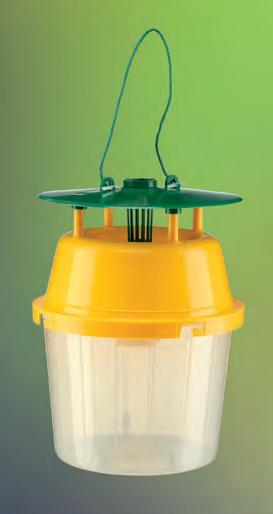








Rare, heritage & modern variety certified organic fruit trees grown in the Welsh Marches
APPLE, PEAR, PLUM, DAMSON, QUINCE, CHERRY AND MEDLAR TREES

Catering for traditional, community & commercial orchards, small holdings and the home garden.
We utilise agroforestry principles for healthy soils, biodiversity, and environmental sustainability, all our trees are Soil Association certified organic.
• Pruning, tuition & courses

• Consultancy & agroforestry design
• Variety & rootstock advice
• Planting and aftercare advice


www.tomtheappleman.co.uk enquiries@tomtheappleman.co.uk
















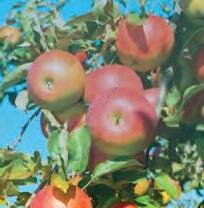




















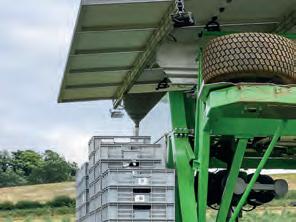
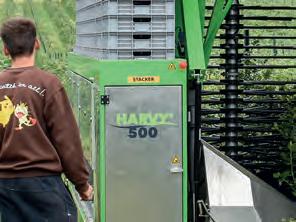



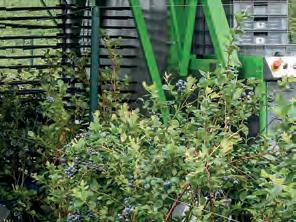
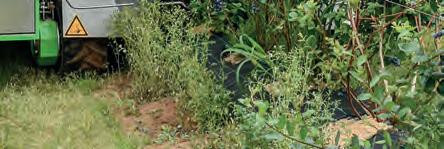
Hall Hunter, one of the leading berry producers in the UK, has a progressive and visionary outlook to fruit production. Machinery editor Neale Byart visited to see the grower's latest machinery in action.
Founded back in 1966 by Mary and Mark Hall on Hearthlands Farm in Wokingham, the company now grows a variety of fruit across four sites in Berkshire and Surrey. The largest of these farms is Tuesley Farm in Surrey – home to Mary and Mark’s son Harry, who now runs Hall Hunter. On this site Hall Hunter grows strawberries, raspberries, blackberries and blueberries, with the latter taking up the most hectarage.
The UK market consumes around 60,000 tonnes of blueberries per year, with around 6,000 tonnes of those grown in the UK. Of these, Hall Hunter will produce around 2,400 tonnes of blueberries in 2024, growing to 4,000 tonnes as the crop matures over the next few years – making them the largest individual grower of blueberries in the country.
The UK market for blueberries is currently growing at around 25% year-on-year as consumers wake up to the fact that not only are they delicious, but they are also considered to be one of the ‘superfoods’ due to their high levels of vitamins,
minerals, bre and antioxidants. The rest of those sold in the UK currently come from Peru, South Africa, Morocco, Portugal, Spain and Eastern Europe.
Until recently, all blueberries at Tuesley farm have been picked by hand, and this tradition is set to continue in the main, for the foreseeable future; but there is a change coming, in the form of the Harvy 500 mechanical blueberry picker from Fine Field Innovative Agri Solutions. However, picking is not the only part of the process that Hall Hunter has looked to streamline through automation. They have also added an automatic grading and packing machine in their packing house and, on the day of Fruit & Vine’s visit, were trialling some autonomous robots to take the berries from the eld to the packing house.
Jim Floor, managing director of Hall Hunter explained: “The Harvy 500 is the only one in the UK. We took delivery last season, but this is really the rst year we have used it in anger.
“There are other similar machines on the



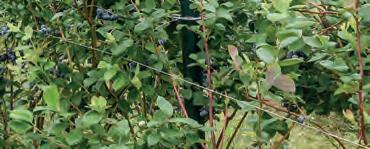

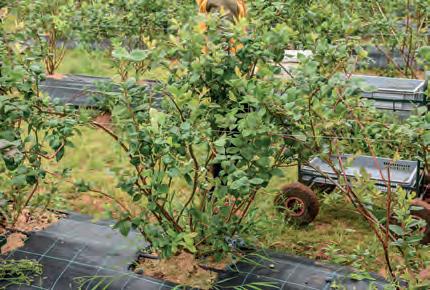
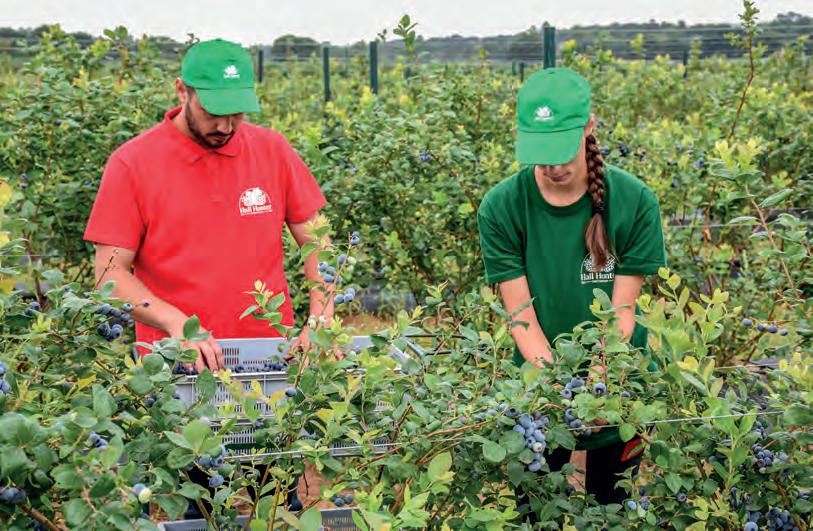
market, as anyone who has watched Clarkson’s Farm will know, but we believe that the Harvy 500 is the best machine available and the guys that designed it are operators of a blueberry farm themselves so, although similar, this one has been speci cally produced with blueberry harvesting in mind.”
Jim points out that developing a machine to pick blueberries is very di cult, speci cally when it comes to matching the dexterity used when picking by hand. Although the machine can work much faster than its human counterparts, the downside is that it will take everything, so you get some unripe berries picked that a hand picker would have left on the plant.
“This is where our new grading machine comes in, as it takes a harvested crate of blueberries, including any unripe berries and the odd leaf, and picks out just those fruits that are in good condition and ready for the market,” Jim said.
“The machine uses a colour monitor to remove the unripe fruit, and a camera that can detect damaged berries with a high degree of accuracy.
“The unripe or damaged berries are rejected, while the approved fruit then goes on to be weighed and packed into a punnet. We probably lose around 10% of the total fruit yield due to being picked when unripe, along with other losses, but with a picking rate of around 500kg an hour, compared to a typical 10kg per hour for the average hand picker, the Harvy 500 is doing the work of around 50 people; so, despite the initial high outlay, the sums do add up.”
On the day of Fruit & Vine’s visit, the machine was in action just up the road at Binton Farm – a new venue for Hall Hunter which is rented and used mainly for blueberries, but which also houses their raspberry nursery.
It has very sandy soil and has been in development since last autumn. Here, there are a mixture of some new beds, which are ready for planting in the autumn, and other elds with plants ranging from one to four years old, transplanted from Tuesley Farm.
One eld has been planted with a variety of
blueberry that has been speci cally developed and grown for machine harvesting, although they won’t be producing fruit in harvestable numbers for two or three years. These plants, a variety called FC 1164, grow in such a way that makes them particularly suitable for machine harvesting. Most importantly, all the berries mature at the same time, so that it only needs harvesting once when all the berries should be ripe, reducing wastage. They also retain the berries on the plant better, to reduce shedding losses, and they have a growth habit which is more upright, allowing the machine to operate tightly against the stem.
There is a signi cant investment in plants, but each should have a lifespan of around 15 years.
To demonstrate the Harvy 500, Hall Hunter were harvesting on standard blueberry plants, which would normally be hand-picked. Despite this, the machine did a very impressive job. The ‘brushes’ rotate and move up and down as the machine moves along the row, replicating the actions of a hand picker.
The machine is loaded with empty crates on both sides, which are automatically rotated as they ll, starting with stacks of empty crates on each side of the machine and nishing with full crates in the same position.
When full, it provides a maximum capacity of 1,000kg. The machine can operate completely unattended for short periods, with probes determining the position of the plants, although it would normally be sta ed by two people.
During these early days, while there is still a little ne tuning to be done, Hall Hunter is using a team of four, with two following up behind hand-picking any berries that were missed.
There was also a certain number of berries lost to the ground and a number of unripe berries, together with a little bit of foliage, ending up in the trays, despite the air stream system that is designed to remove leaves and twigs just before they enter the trays. These are all things that will gradually be improved upon with slight modi cations to the machine, and the development of the crops speci cally designed for machine harvesting. Even so it was an impressive sight watching the machine

at work and seeing how quickly the trays were lling. There is a computer on board that ensures that the four wheels are continuously at the right height, and it is self-levelling, so the machine remains perfectly vertical, regardless of the surface. At the same time, the load-bearing capacity per wheel is measured and regulated, so there are no unwanted forces on the frame and the traction is always perfect. An onboard internet connection allows the machine’s current status – such as harvesting data, e.g. kg per hour, kg per bush and kg per row, as well as the position of the machine in the eld – to be monitored from, and reported to, the machine’s HQ.
After completing the harvesting of one row, a set of four wheels drop down to allow the machine to move sideways to the next row before being retracted and o it goes again.
The whole thing is controlled remotely from a wireless control box by one of the operators and is powered by Li-Ion batteries that run two energye cient electric motors. The batteries are charged from a large array of solar panels on the top, providing quiet, emission-free running.
On cloudy days, a small internal combustion engine generator provides additional power to keep the machine running, should the batteries run low. Of course, unlike manual pickers, the machine could operate 24/7, if required and can work at speeds ranging from 100 metres per hour up to 700 metres per hour.
Despite the initial investment cost, and the fact that even with the re nements Jim is hoping to see there will still be a greater loss of berries on the ground and a higher number of unripe berries picked than with hand picking, the savings in labour costs will be so huge that Jim would like to see four or ve of the machines roaming the farm.
On the day of F&V’s visit, a new kind of automation was being trialled and demonstrated. The Fox Robotics Hugo RT is an autonomous mobile robot designed speci cally for the purpose of transporting soft fruit.
The Hugo RT can be programmed to
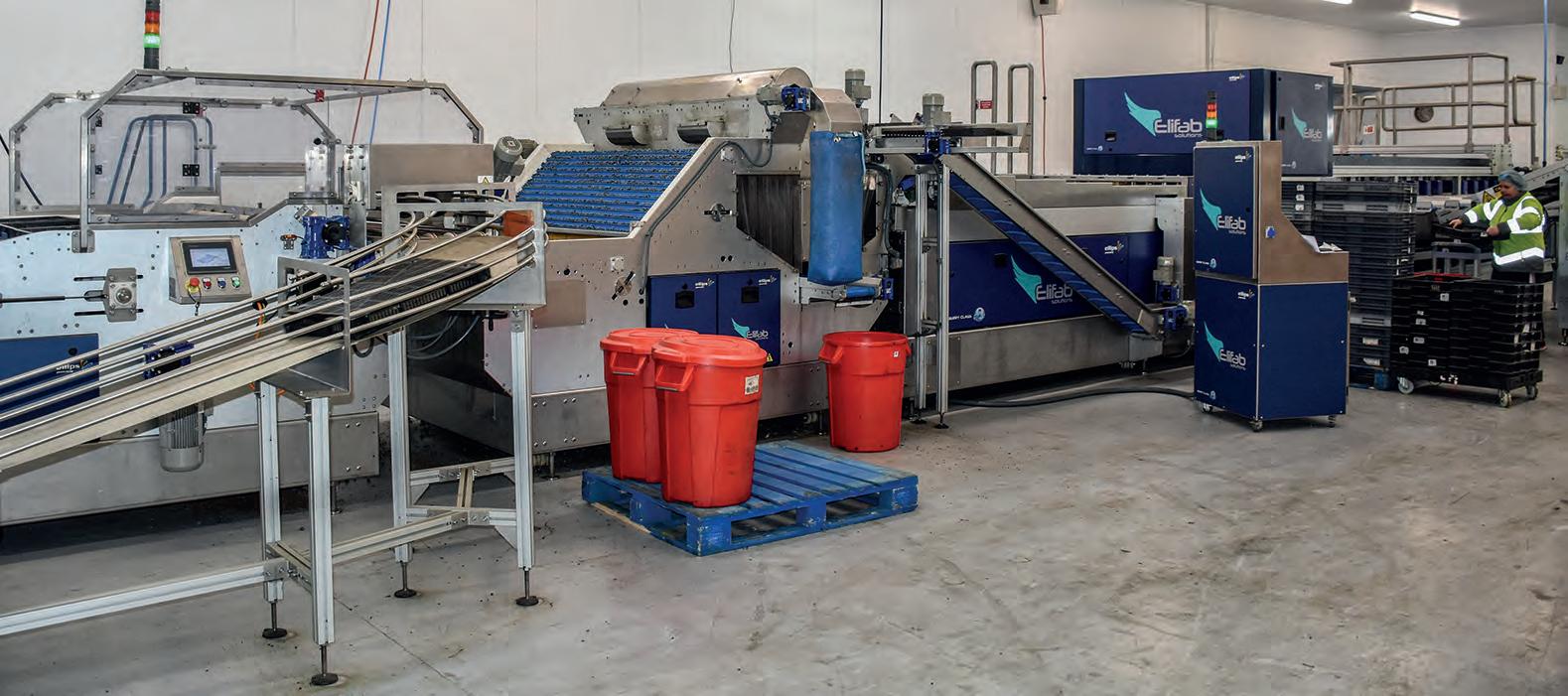
independently travel between the eld and the fruit storage, sorting or packing area using pre-programmed mapping data. It can carry up to 200kg of fruit and tow a trailer behind of up to 500kg. It uses GPS for location planning, and cameras and collision sensors to avoid obstacles.
Its location can be monitored using an app so, with perhaps a eet of them running backwards and forwards, the Harvy 500 operators can see where they are and be ready for o oading empty crates and reloading full ones, keeping the Harvy running almost continuously. The Hugo is powered by two rechargeable batteries and has a top speed of up to 10kph. The RT in its name stands for rough terrain, so it should have no trouble dealing with the typical lumps and bumps found on farm tracks and between the rows of fruit.
Once the berries are delivered from the eld to the packing area, another new autonomous machine is used to grade them and remove those that are unripe or damaged.
The Elifab is a blueberry grading and packing machine that utilises AI technology to sort through the crop at a high rate. The rst stage removes the green unripe berries and any that are obviously damaged. Then a second stage removes any ‘B’ grade fruit that does not meet the requirements for Hall Hunter’s premium customers.
The best berries are then passed into hoppers where the exact required weight is measured before they drop into punnets below. These are then passed through a process that places a cellophane lid on the punnet before they go through a nal check to ensure the weight is correct.
Any found to be underweight are quickly rejected before the punnets that pass get delivered to a nal packing station to be stacked and crated up ready for collection and delivery to the supermarkets. It is really only this nal stage, and the loading of the full crates at the beginning, that requires any human input beyond a skeleton sta for monitoring processes as the berries go through the process.
As already mentioned, Hall Hunter is a visionary grower – but it’s not just through the use of autonomous machines. Elsewhere on the farms, huge investment has been made in a heating system for the polytunnels.
When Hall Hunter took over Tuesley Farm they installed a system that takes residual heat from an on-site 150 million litre reservoir using heat exchangers, as found in ground source or air source heating systems.
The heat is used to warm water that is then pumped via pipework into the polytunnels, where they grow 26ha of strawberries in heated conditions. Despite the fact that in the depths of winter the surface of the reservoir can be frozen over, they can still extract 4-5°C out of the water deep at the bottom using equipment housed in specially-built machine rooms.
The 4–5°C taken from the water is increased via the pump system to 45°C, creating a signi cant rise in temperature beyond the 5°C taken.
Each one of these machine rooms represent a multi-million pound investment, and they have one at each of their three farms; but the payback is that they give a reduction in heating costs and allow the farms to produce early and late fruit for premium markets. In the summer, the reservoirs, which are naturally fed and lled, are used for irrigation.
With demands for less chemicals and more organic methods in farming generally, Hall Hunter has planted the unfarmed areas of the farm, around the perimeters of the poly tunnels for example, with plants and owers speci cally chosen to attract wildlife that help naturally keep pests under control.
Hall Hunter also houses ve million bees, both honey and bumble, to help with pollination, particularly of the blueberries. A bene cial bi-product of this, in addition to the increased pollination and crop sizes, is that the company can o er its own-branded honey.
The company is proud not only of its traditions and heritage, but of also consistently working to implement new technologies to execute the best and most e cient harvests possible.
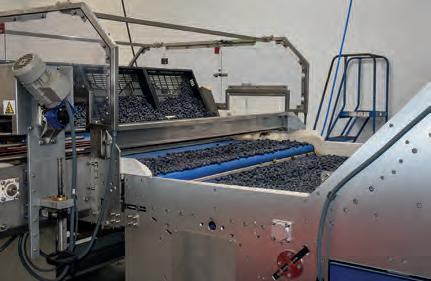
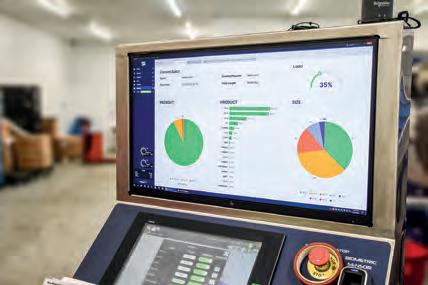
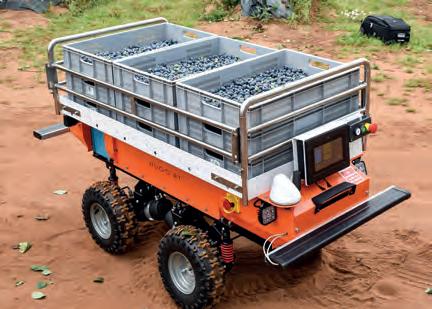
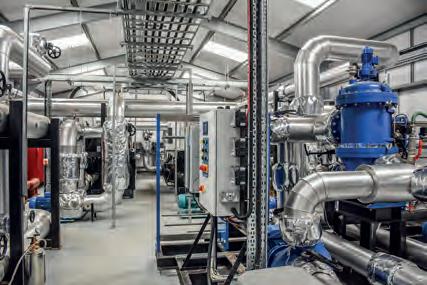



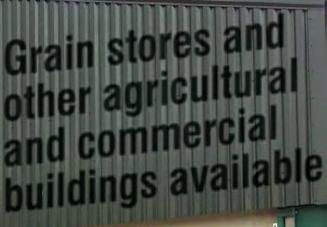















































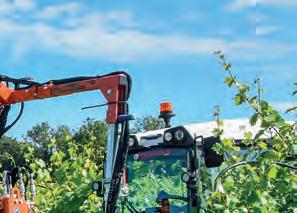
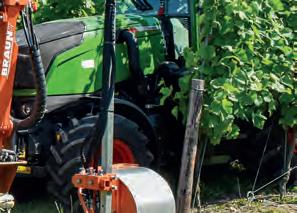
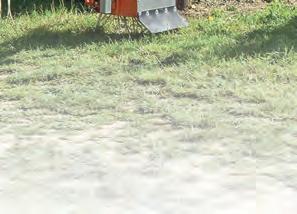
In late July, the NP Seymour team hosted a two-day event where customers could see some of the latest equipment in operation. Neale Byart attended on day two, which highlighted the vineyard machinery available.
NP Seymour, the fruit and viticulture machinery specialist, has been serving fruit and vine growers since 1974. The company hosted its annual two-day event recently, which was held on the family-run fruit farm and vineyards of JL Baxter and Sons in Hunton, Kent.
The event is split, with day one dedicated to machinery for the fruit growing sector, and the second day given over to demonstrating equipment for the viticulture market. Fruit & Vine attended on day two and spent a day among the established vines in the rolling Kent landscape.
The team from NP Seymour were bolstered by representatives from the various companies whose equipment was on display. Amongst these were specialists from Fendt, suppliers of the ve di erent tractor models used on the day, Braun Maschinenbau, the OCLL company, Perfect Van Wamel, Airjet, ERO GmbH and BMV-Italy. As well as the machinery, visitors had an opportunity to see a range of weather and plant health equipment from Metos UK.
“We were so pleased to see growers travel from across England and Wales to view the machinery we o er,” explained NP Seymour sales and marketing director, Claire Seymour. “There is always considerable interest in the Fendt specialist tractors, of which we’ve been a dealer now for 40 years. In similar fashion to last year’s event most visitors mainly wanted to see and compare the mechanical weed control solutions we have from Braun and the various canopy management tools on o er. As labour for hand stripping is still expensive to source, more people are investing in defoliators
and trimmers. We were delighted to be supported by representatives from our suppliers who gave further insight into the current machines on the market and new technology being developed.”
A 104hp Fendt 210V was equipped with a Braun double over-row stem cleaner on the front and an Alpha 2000 mower on the rear, featuring dual nger weeders.
Explaining how the stem cleaner tackles the quadruple issues of labour costs, fuel expense, weather and lack of time by cleaning stems on both sides, two rows at a time, Braun representative Cristina Castagnotto went on to say that further savings in time and fuel costs can be made by adding a mower, to keep the alleyways trimmed, and in turn this can be combined with additional accessories such as the nger weeder, as tted on the day, that removes weeds right up to the plant stem while at the same time levelling the under-vine soil. Other tools, such


interest”
as rotary tillers, can also be simply added by undoing just 2 or 3 bolts and the working width of these tools is easily adjusted. The Alpha 2000 is available in various models with working widths from 1.1–2.50m and each model having adjustment capability of between 300mm and 550mm. The nger weeders are available in two di erent sizes, 540mm and 700mm – and in two di erent levels of material hardness.
Peter Knight from Bury Turfcare designed and built the Airjet ground aerator originally to relieve waterlogged ground on sports facilities such as football pitches and golf courses. It consists of a 25mm diameter metal tine, with four holes in the sides. The tine is pushed into the ground, up to half a meter, using hydraulics and air from a compressor is injected into the ground.
The air can be set to inject numerous times and for varying periods, and will inject on both the in and the out stroke of the tine to inject lots of air to relieve compaction. Originally a single tine machine, the latest version, as demonstrated at the event, has a twin tine set-up allowing it to inject air into the soil near the vine roots on both sides of the alleyway at the same time. The system has quite a heavy air demand, so works best with a towed compressor that can deliver the high volumes
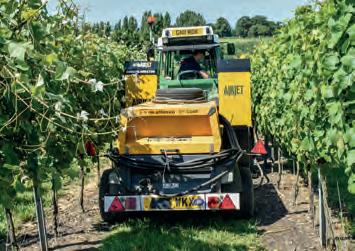
required. The spacing of the injections, and the quantity of air injected, all depends on how bad the compaction is, but typically in a vineyard type environment it would inject around every one to two meters. On the day, the Airjet was being pulled by a Fendt 207F producing 79hp.
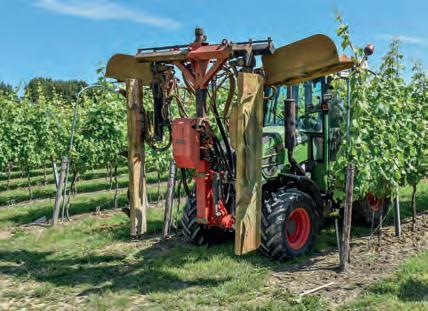
Available in ‘L’ or ‘over the row’ versions, all with single or double sided variants, the ERO Elite trimmer uses 350mm stainless steel blades with either four, ve or six blades on the vertical cutting beam, and either three or four blades on the horizontal cutting bar depending upon the model. Cutting length ranges from 1,000mm up to 1,950mm. The range promises easy set up and comes with a ‘comfort’ joystick for smooth, light-touch action. Each trimmer comes with a double acting lift mast on which other ERO products can be mounted. The model demonstrated was an ‘L’ double sided trimmer attached to a Fendt 210V tractor.
The VITIpulse Combi, attached to a 114hp Fendt 211V, uses a dual system to remove leaves from the lower part of the vine, exposing the developing

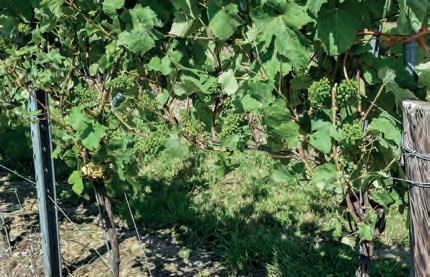

grapes for better spray access and reducing the risk of mould and disease. It uses the two universally accepted methods of defoliating vines – the sucking and plucking method and the air blast concept – combined into a single unit.
Available in a double version to work both sides at once, or a single side version for smaller vineyards or those in hot climates where only the shady side of the vine is worked at any one time, the dual system delivers deeper penetration into the canopy than hand plucking delivers, at a speed that is faster than air blasting alone. Air blasting alone can also cause damage to the grapes with leaf fragments cutting into the fruit. By sucking and plucking rst, damage is much reduced and the window during which air blasting can be used is much greater. It is also claimed that this system is less damaging to the fruit than even hand plucking. The results seen on the day were impressive, with excellent foliage removal and little to no damage to the grapes.

This single sided trimmer has rotating knives, that are claimed to require less maintenance than reciprocating saws, provide less vibration and are less prone to jamming, with either three or four on the vertical cutting bar, one or two on the top horizontal bar and an optional bottom knife. The horizontal bar can be operated vertically to increase the overall length of the vertical bar, if required. Three electrically operated hydraulic rams o er various adjustment options in sidewards, upwards and tilting orientations. The BMV E600 is lightweight, but strongly built and only requires a tractor with between 40 and 60hp to operate. On the day it was mounted on a Fendt 207F with 79HP.
NP Seymour o ers a range of spraying machines with the OCLL APUS 5 being the entry level model. This simple tractor-mounted directional air blast sprayer o ers an economical solution for both horizontal and vertical spraying. Designed
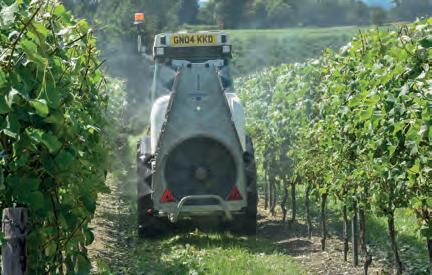
speci cally for compact spaces, tight headlands or sloping ground, the APUS 5 is available with a plastic tank of 300, 400, 500 or 600-litre capacity and two di erent pump sizes depending on tank capacity. The sprayer comes with a two-speed and neutral transmission and a bypass valve to wash the system without diluting the mixture.

David Whato from Metos UK was present on the day demonstrating a couple of products from the weather and frost monitoring range, as well as a new hand-held device for monitoring vine health.
The 3.3 weather station provides rain, temperature, humidity, solar radiation, wind speed and wind direction which, when used in combination with the Metos software and built-in modem, can provide disease monitoring and frost alert functions. For simple, more localised weather monitoring, there was the nMetos Frost – a small standalone unit that crucially uses a wet and dry bulb sensor for more accurate frost detection.
The Dualex is a device for monitoring crop health by simply clipping the unit across the vine leaf. Designed primarily for the viticulture market the Dualex measures nitrogen balance index, chlorophyll, avonoids and anthocyanins which, among other things, tells the story of the uptake of nutrients over time. A built in GPS will record and output data at the end of the day to avoid making notes and speed up the process of taking measurements.
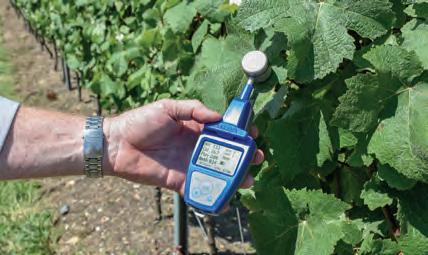

SPECIALISTS IN NEW AND USED FENDT 200 V/F/P TRACTORS AND ESSENTIAL MACHINERY FOR FRUIT AND VINE GROWERS. PLUS SPARE PARTS, SERVICE, REPAIR AND AFTER SALES CARE.




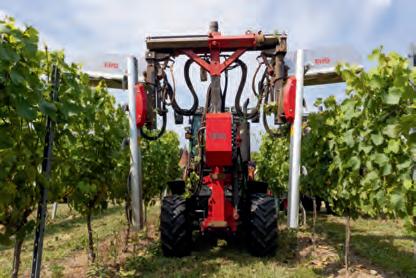
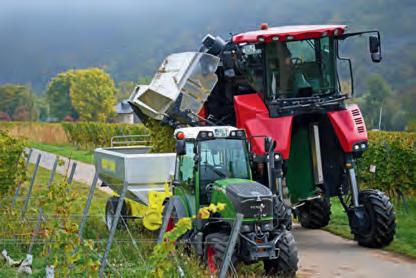

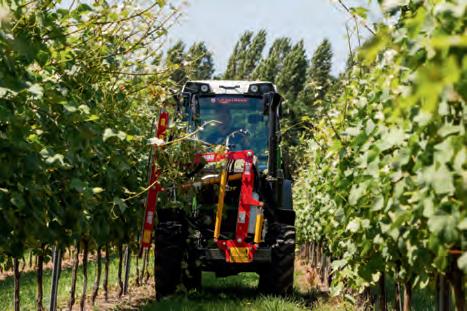


















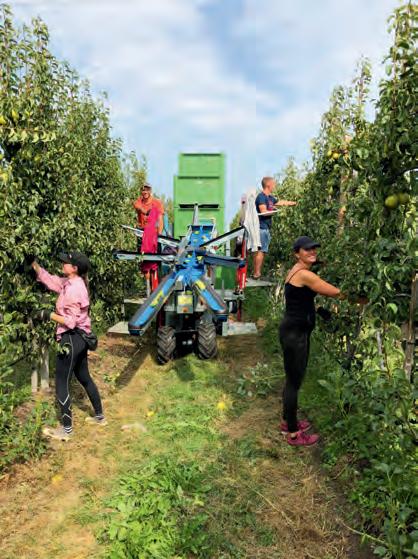































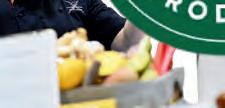



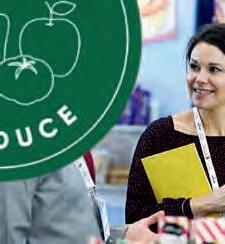











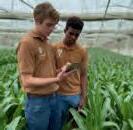
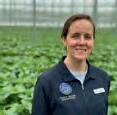



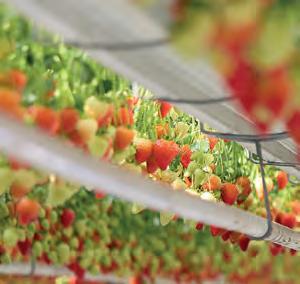

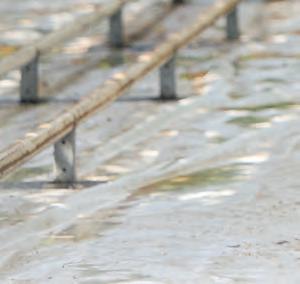



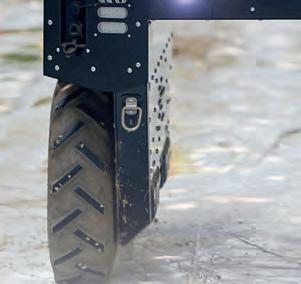


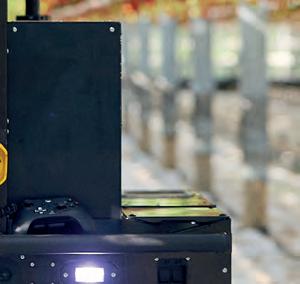


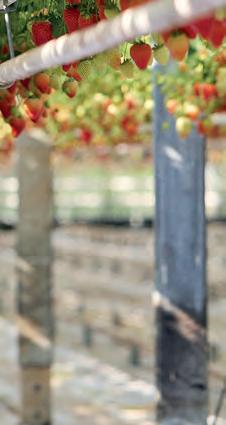

The Summer Berry Company, which produces 7,000 tonnes of fruit in the UK a year, has adopted robotics and green energy solutions to help it meet its sustainability goals – and it’s got big expansion plans in the next few years. Sarah Kidby reports.
Sustainability and decarbonisation are key watchwords for The Summer Berry Company (TSBC), which has invested in various new technologies including a green energy solution to extend the strawberry season, and using robots
for various farm tasks. The business has farms in both the UK and Portugal – with its UK fruit predominantly going to major retailers such as Tesco, M&S, Waitrose, ASDA, Ocado, and Aldi. Around 4–5% of its total sales this year will be to
international markets – Germany, the Middle East and Japan – but this gure is set to rise next year. TSBC grows over 6,000 tonnes of strawberries, 750 tonnes of blueberries and a small amount of blackberries in the UK each year. It is not producing raspberries in the UK in 2024, but o ers year-round supply of raspberries in Portugal. As part of its sustainability strategy, tackling waste fruit is an important focus, and something its environmental, social and governance (ESG) manager is actively working on. It has a partnership with Chichester Food and
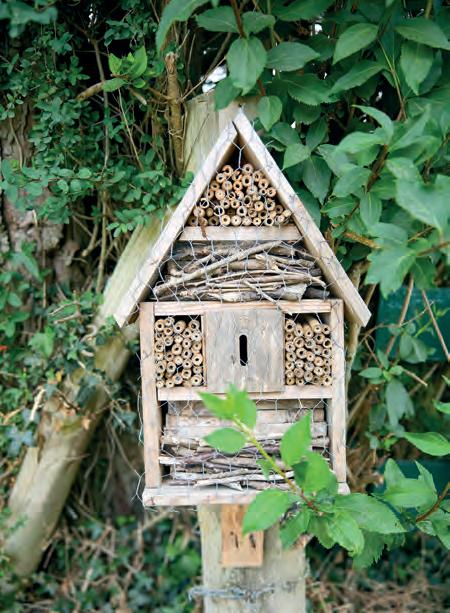
Sustainability is a key focus for TSBC
Nitrogen- xing clover is planted between rows
Labour is sourced directly and via Seasonal Workers Pilot Scheme Operators, on a sixmonth visa
Drink Company, which preserves surplus fruit and turns it into high quality, intensely avoured new products, giving fruit waste a second life.
The business also has an open-door policy to local schools, universities, associations, community groups, etc – all they need to do is get in touch to schedule their visit.
TSBC’s farms date back to the 1960s and are grounded in traditional British farm life. After being acquired by Cibus Fund, a private equity investment fund with headquarters in London, TSBC was formed in 2019 and its current CEO David Sanclement joined in 2020. He began his career in Spain, his home country, before moving to Belgium and Germany, then settling in the UK. His long career in the fresh produce industry includes operations and nance roles for global fruit producers, which has taken him around Europe.
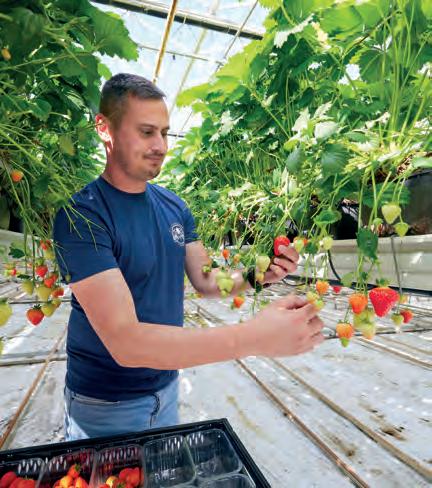

Flavour, aesthetic appearance and shelf-life are the critical attributes for TSBC’s variety selection. “We know that it is these characteristics that make our berries so enjoyable and keep consumers coming back for more,” David explains. “But it is also vital that these characteristics align with the agronomic parameters of yield, harvest speeds and disease tolerances. This enables The Summer Berry Company to achieve its critical objective of growing berries sustainably, ensuring our customers get a product which not only tastes fantastic but is also grown responsibly.”
TSBC recently scooped two Superior Taste awards for its Fandango strawberry and Amalia Rossa raspberry varieties. The judging panel is composed of more than 200 professional taste experts, with a focus on avour, appearance, texture, and aroma. Fandango is a top tier strawberry variety created by Fresh Forward, an expert breeder based in The Netherlands; Amalia Rossa is a premium raspberry variety created by the experienced Italian breeder BerryTech. The Summer Berry Company holds the exclusive rights to sell Amalia Rossa grown in Portugal to British and Irish retailers. With an annual production of more than 1,500 tonnes, it also sells Amalia Rossa grown in Portugal to European markets and the Middle East.
A full-year crop planning is an increasingly critical element to the business, David adds. “We strive to take advantage of our geographical location for our eld crops and our glasshouse production is timed to come on both shoulders of the main UK season. It’s also important to take into account the availability of labour and to ensure our volume pro ling throughout the year does not exceed our labour capacity.”
There are six primary tasks the production team focus heavily on throughout each year. Firstly,
ensuring the correct types of plants and varieties are planted at the correct time of year, in the most suitable locations. Secondly, ensuring all plants are grown optimally at all times, and that the climate conditions are adjusted to suit the time of the year, the stage of growth and the current market situation.
Limiting the impact of pest and disease through varietal selection and timing is also key, as well as: climate control; timely crop management plans; robust monitoring, prediction and identi cation strategies and a clear IPM strategy.
Another priority is precision irrigation and fertigation strategies, ensuring the crops have exactly what they need when they need it, at all stages of their life cycle. And nally, maximising fruit quality, avour and timing; and timely harvesting to ensure the fruit is at its absolute best when it reaches the customer.
Powdery mildew is a key issue for the farms’ strawberries and UVC treatment is used for the most susceptible varieties. They also use a timed pesticide treatment programme in addition to regular and timely crop management. Active climate monitoring and control forms part of the strategy. And for pests, they implement rigorous and timely IPM strategies including regular preventative bio-control applications as well as spot curative treatments. Two bio-applicator machines have been out in the elds this year for timely applications and reduced labour requirement.
The farms do a lot of their agronomy practices in house, ranging from fertigation recipes and spray programmes to prediction modelling and ower mapping. “We strongly believe in investing in our growers and production sta , equipping them with the knowledge and experience to manage the day-to-day complexities and
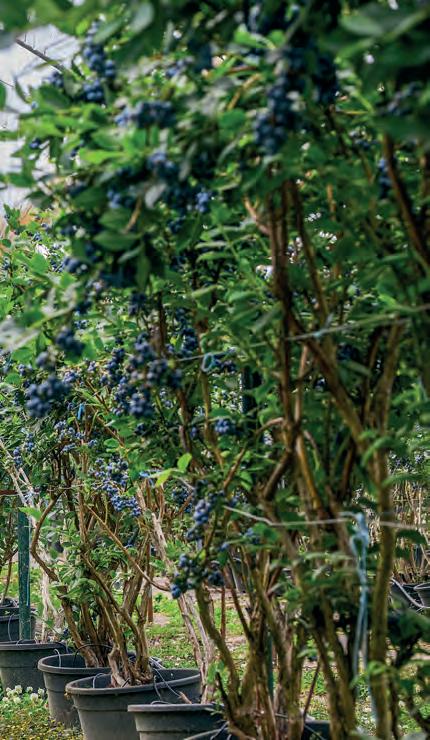
challenges that come with soft fruit farming,” David comments. TSBC also utilises external agronomy services, which provide valuable insights and learning.
For pollination, the farms use a local beekeeper who provides around 150 honeybee hives, each containing about 10,000 bees – and they are introducing native bumblebees throughout the crops as part of TSBC’s biodiversity push.
Weather resilience
As is the case for all growers, the increasingly unpredictable weather creates another set of issues to be managed. “The lack of light this year has been particularly disruptive to our crops and has made pro ling and timing a challenge,” David comments. “Changeable weather conditions year on year make it di cult to really track historical crop speci c performance and to fully understand the incremental gains that we strive to achieve. It’s the same for all areas of horticulture and agriculture and we must remain resilient to the challenges that the weather brings.”
Meanwhile, frost risk is a critical area for the farms’ blueberry crops, due to the very short timeframe for the open owers to be pollinated. “Sprinkler systems are used to cover the owers and bushes with ice – the ice encasement shields the owers from harsher temperatures and the freezing process itself, then releases latent heat which creates a ‘warmer’ microclimate around the ower, preventing frost damage,” David explains. Other crops are planted in sealed tunnels and covered with single/double layers of eece and mulch during frost events. Crops are normally covered during the day of a predicted frost to trap warmer air and residual heat within the crop. Speci c biostimulants are also applied to the crop prior to a frost. “Some products enhance the plants’ natural defence mechanisms to resist frosting damage, whilst others create a
semi-permeable elastic membrane around the plants, providing a physical protective barrier,” he continues.
Whilst labour is a key issue for many growers, TSBC sources its labour directly – these are returnees who have EUSS settled and pre-settled status – and via Seasonal Workers Pilot Scheme Operators which is on a six-month visa. “We have established good working relationships over the years with the Pilot Scheme Operators and have enough labour to pick and pack our crops and complete any other jobs,” David says. “Our strategy is to rehire each year and we have a success rate between 50–65%.”
They also recruit new workers every year and have a training programme for both new workers and returnees, according to their speci c needs. The peak season tends to be from May until September, but there are shoulder seasons in the glasshouse before and after that.
The business also currently has 75 permanent employees working from the UK.
Nearly 100% of the company’s fruit is packaged on site, the only exception being where some customers prefer to pack themselves. “Because of our signi cant packing capacity (1.5M units per week), we are also exploring the possibility of packing for third-party companies during the winter months, when the amount of fruit we produce is lower,” David adds.
Additionally, all the farms’ machinery is bought new – including its tractors, forklifts, and a blueberry grader, to name a few examples.
Among a number of new technologies adopted by TSBC, it has developed a green energy solution (GES) in the glasshouse which will allow it to produce British strawberries all year round, starting this winter. The move will reduce overall spend on energy by around 40%, cut CO2 emissions by 20%, and allow the site to provide extensive additional lighting to the crop in winter.
Additionally, it has partnerships with Tortuga Agtech and Saga Robotics, which has seen the business incorporate robots onto the farms. They do jobs such as harvesting strawberries, providing forecasting on yields and plant health, as well as providing support to its agronomists in ghting pests via UV light application.
“We have a growth plan to increase the production in our current farms in the UK and Portugal but also expand our business to other geographies,” David shares.
Glasshouse production in the UK will increase by 40% until 2028, and in Portugal, its raspberry production will be expanded by working with associated growers, to best serve the markets. There are also expansion plans in South Africa and Morocco, which should be completed by 2025.
“This diversi cation of geographies will allow us to support our strategy of year-round direct supply of premium genetics to premium retailers,” David explains.
And nally, one of the company’s main focuses for the future is further developing its sustainability programme and achieving decarbonisation by 2030.

Farm owner/manager: Chief executive o cer, David Sanclement
Location: Three farms in the south of England, near Chichester, West Sussex, and farms in Portugal
Total size in ha: UK: 156ha of glasshouse and outdoor crops
Fruits grown: Strawberries, blueberries, blackberries, raspberries
Varieties grown (excluding trials):
Strawberries: Karima, Ania, Murano, Favori, Malling Centenary, Fandango, Parlando
Blueberries: Duke, Valor, Top Shelf Blackberries: Sweet Royalla

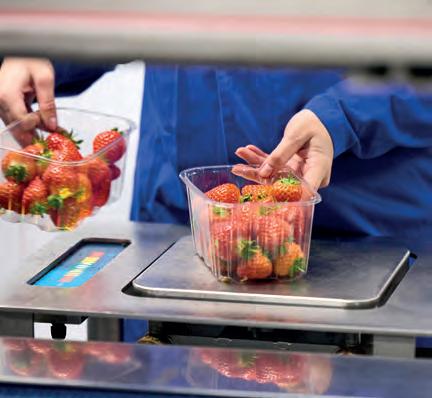



































Around 100 exhibitors and thousands of visitors had a chance to meet, talk about the latest innovations and exchange ideas during Fruit Focus 2024. Multiplatform journalist, Aleksandra Cupriak, attended the event.
The Fruit Focus 2024 event took place at NIAB’s East Malling site on 10th July, featuring exhibitors from around the country and beyond.
During a number of seminars, participants learned about subjects including innovative strawberry cultivation and marketing through breeding, getting crop protection right for the future, and AI vine monitoring solutions.
NP Seymour has specialised in tractors and machinery for fruit and vine growers for over 40 years, and prides itself on ensuring the correct and most suitable equipment is supplied. The range includes tractors, sprayers, mowers, trimmers and defoliators, weeding machinery, frost protection equipment, weather and also winery equipment.
At the event, NP Seymour sales professional, Tim Sillence said that the Fendt 207V Vario Gen3 is currently one of the company’s highlights and receiving a lot of interest.
Speakers covered technical topics including breeding, pollination, integrated pest management, biological control and drone spraying.
During this year’s event, the attendees had a chance to talk to the exhibitors, take part in a range of NFU Fruit Forum seminars and join NIAB research tours.




Hortifeeds was chatting to visitors about its latest foliar spray, Amētros. The company’s regional sales manager, Ben Dalton, said: “Amētros optimises calcium mobility for improved quality and shelf life in all types of soft and top fruit. It can also be used to correct calcium disorders in other crops, such as tip burn in lettuce.”
Mr Dalton added that fruit growers currently face many challenges, with the biggest one being the weather conditions.
“The beginning of this year was cold and wet; it’s been quite a mild summer as well, with really low light levels, which is not good for fruits, particularly strawberries as well as vines. Yields are likely to be down this year due to the environmental conditions,” he added.
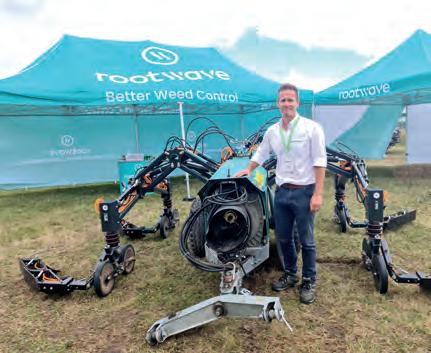
Rootwave recently launced its rst product into the UK market – its electrical deweeding technology that can be used in vineyards and fruit plantations. Head of sales and marketing, Tom Archer, explained that the RootWave robot kills weeds using electricity to ‘boil’ the roots, giving better weed control at a lower cost than chemical herbicides while protecting soil health and helping nature restore its soils, water and biodiversity. Rootwave has recently teamed up with mechanical weeding specialist, Garford to distribute its new machinery.
It was a very successful show for Russell IPM, Russell BioSolutions and Russell IOT. The Russell IPM Group said they had the pleasure of exhibiting their extensive range of specialist traps and lures, novel trapping systems and adjuvants – as well as a leading range of biological fermentation and formulation products including biostimulants, biofertilisers and biopesticides. Scienti c o cer (entomologist), Rachel Turner, commented: “We were particularly excited to showcase and provide talks on our new mobile phone application and software suite powered by arti cial intelligence (AI) systems named TruePest. This innovative tool is designed for the monitoring and identi cation of key economically important insect pests, such as the spotted wing drosophila (Drosophila suzukii) on sticky boards. We received fantastic feedback from growers and distributors, made new connections and discussed our solutions to growers requiring guidance. Thank you to everyone who visited our stand.” Pictured (l-r) are: Group marketing coordinator, Araixchel Garcia Fernandez; technical director, Dr Rihem Moujahed; technical sales manager, Andy Russell; scienti c o cer (entomologist), Rachel Turner; entomology technician, James Pybis; and head of AI, Dr Dhurgham Al-karawi.

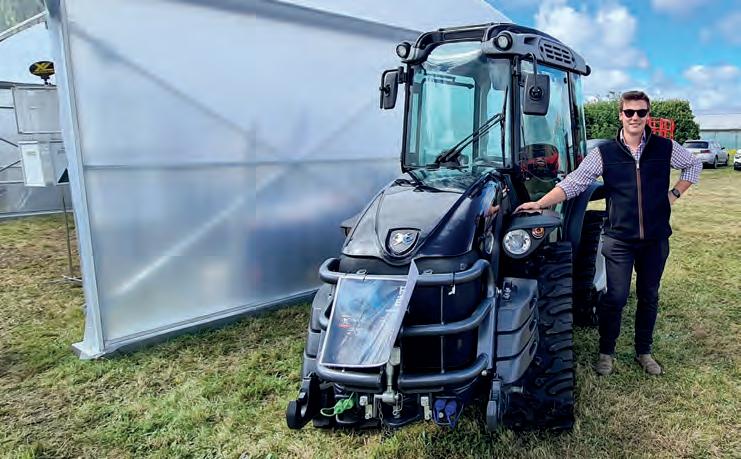
WolkyTolky showcased its drain monitoring system, which gives growers more insight on the ow of incoming water and the outgoing drain that has owed through substrate. The company’s director, Luc Verkoelen, said: “This allows us to detect an irrigation cycle and calculate the drain. In cases of too little incoming water, too little drain or too late drain in the morning, the system can give alarms so you can act quickly.
“This technology allows a plant to grow much more consistently, increasing the yield per plant. Thanks to our technology, growers can make better decisions.”

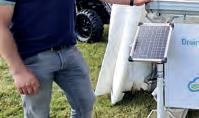












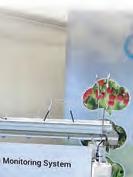







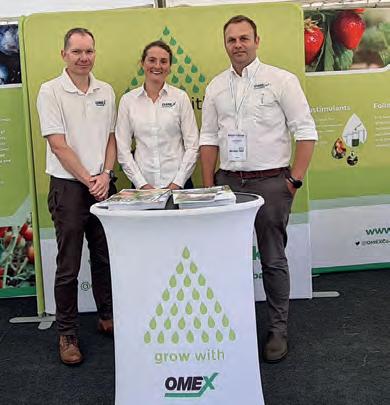

The Omex team showcased the company’s range of new products, including Kelpak, which promotes positive plant health, quality and yield. Dr Neil Holmes and Andrew Zengerink said: “Kelpak contains kelp, which is a sustainably harvested seaweed from South Africa.
“Our combination of products with Kelpak and nutritional products of organic range is really impressive.
“Our products receive very positive feedback from our customers. They appreciate our sustainable approach. They also know that we have the right raw materials, and we get them approved by the right bodies. This means they get good improvement of yields on their farms, and of course they are happy about that.”



Fox Robotics brought to Fruit Focus its autonomous robot for farming and soft fruit logistics – Hugo RT. Fox Robotics’ CEO, Gary Livingstone, said that the robot allows growers to be more productive at transporting the harvest from the picking area back to a common collection point or to the packing house. He added: “The more crops you need to pick, the bigger the bene t is, because you've got more pickers picking the fruits without wasting time transporting them. Our clients are very keen to try this technology on their farms. We’re very happy to be here today. It’s important for farmers to be able to see the products in operation.” Hugo RT is currently used in on-farm trials.
Director Mike Hutchinson said that Hutchinsons and its sister company Produce Packaging were showcasing their latest technologies.
Hutchinsons was demonstrating its new software extension, Omnia EasyPlan, at the event. Mike commented: “EasyPlan is a recommendation system that has been designed to be much more user-friendly for fresh produce growers. Its soil mapping system gives them a far more detailed analysis of soil condition and nutrient levels than any other system on the market.” Produce Packaging displayed its latest top-sealable carton board for soft fruit and salads, which is set to be launched in one of the UK supermarkets very soon.
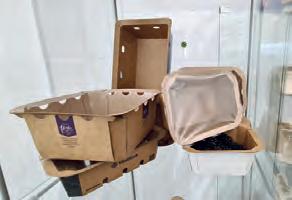


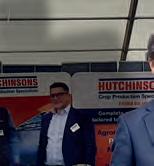


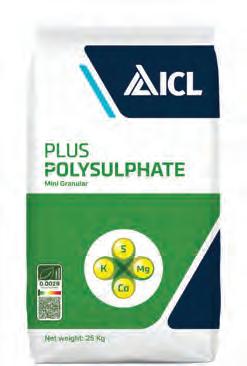
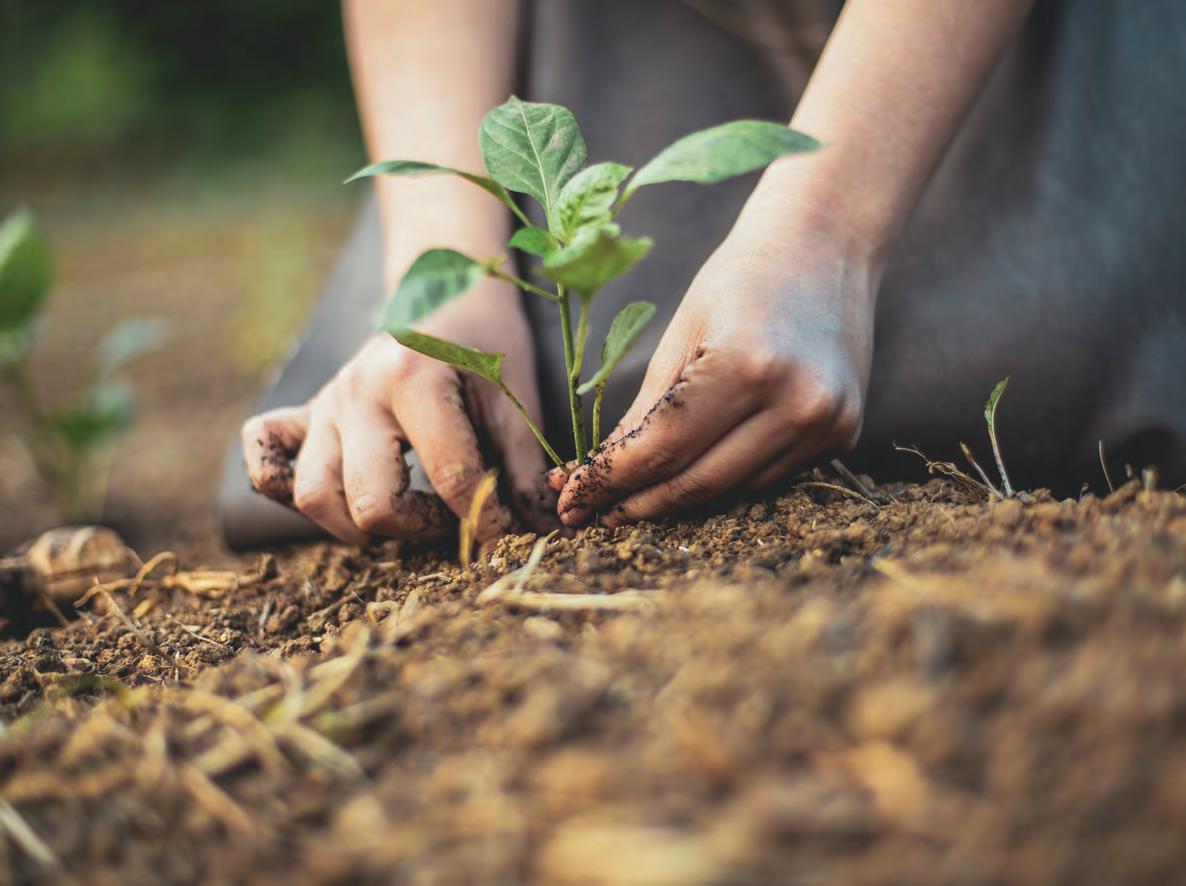


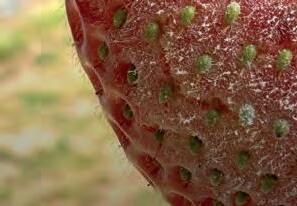


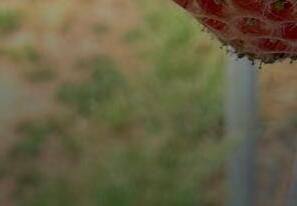



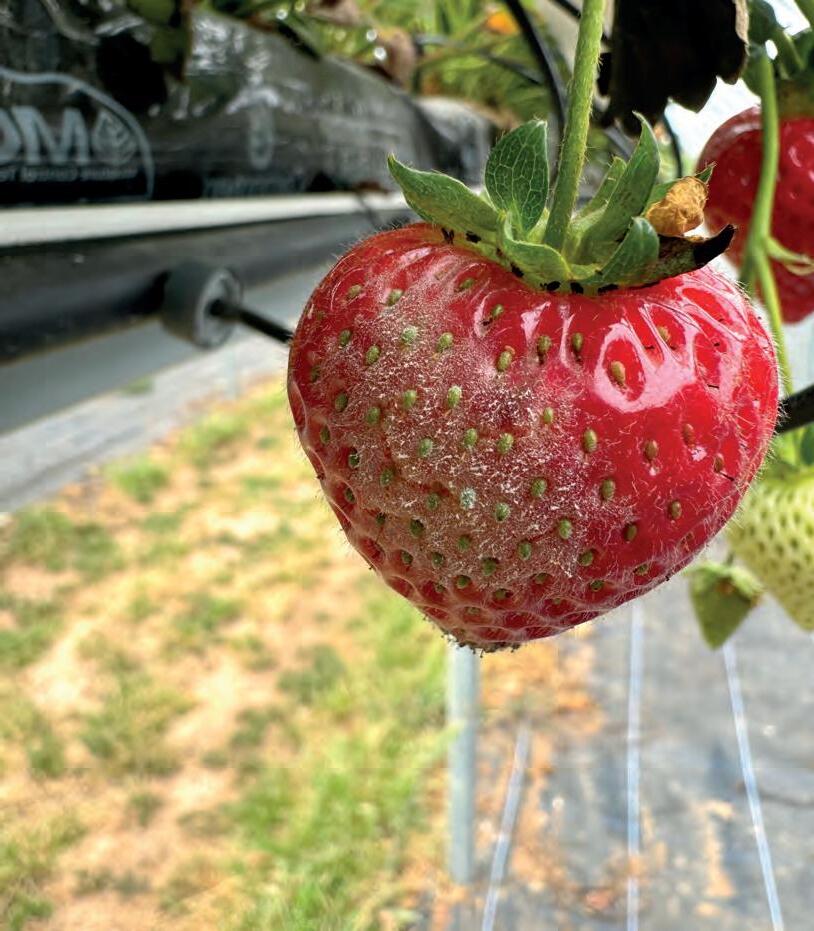
Mild, wet conditions have been favourable to disease in soft fruits throughout 2024, requiring proactive control.
It’s been a challenging season all round for growers. The wettest autumn and winter period on record preceded a di cult spring with belowaverage temperatures and poor sunlight levels hampering growth.
Strawberry growers especially were a ected by these less than favourable conditions with crops typically ripening about 10–12 days later than planned. This helped keep prices rm, which was good news for some, but for those with contracts to honour, making good on the volume shortfall proved expensive.
The mild conditions have also been favourable to disease, although in practice there is always a disease of one form or another that does well whatever the season.
“This year, the main focus of strawberry growers has been powdery mildew, especially in the more susceptible varieties,” says Selchuk Kurtev, better known as ‘Semo’, independent consultant at Zest – Sustainable ICM.
“Botrytis cinerea is present, albeit at lower levels despite the favourable conditions,” he adds.
That both botrytis and powdery mildew have not been a problem for growers, perhaps owes much to the proactive nature of disease control programmes employed by growers and the range of fungicides with good e cacy.
For botrytis, Serenade ASO (Bacillus
amyloliquefaciens QST 713) remains highly e ective and is often used in combination with Teldor (fenhexamid) as part of an integrated programme while Sonata (Bacillus pumilus QST 2808) is a cornerstone of powdery mildew control.
reliance on conventional fungicides. There have been successes with powdery mildew and there is anecdotal evidence that it is useful in reducing the incidence of botrytis and certain soft rots.
“What is unclear, however, is whether the use of UV light as part of an IPM programme for pathogen control interferes with bacillus-based products,” Semo says.
“We need research that considers the e ect of UV light on biofungicides and their ability to control disease. We are also seeing the introduction of non-crop protection products claiming incidental control of disease but with the demise of AHDB Horticulture the industry has lost the resources needed to test the validity of these claims,” he adds.
Another crop production di culty speci c to the 2024 season is the lack of crop uniformity caused by the prevalence of crown rot (Phytophthora cactorum) and red core (Phytophthora fragariae).
“We have seen more crown rot and red core than in previous years, especially in the more susceptible types with Malling Centenary being the variety most widely a ected. E orts to control crown rot have been made more di cult by the decline in e cacy of the CAA fungicide, dimethomorph. The need for new fungicides remains as pressing as ever,” Semo explains.
Positive insect control lessons
With the onset of summer and warmer temperatures, spider mite populations have emerged. For aphids, growers have enjoyed more success despite the threat of rst ights being up to three weeks earlier than the average over the last 30 years.
E orts to achieve control of aphids have, in the main, been reasonably successful with many growers seeing near season-long control from a single application of Batavia (spirotetramat).
The performance of conventional insecticides contrasts that seen with biologicals. As a crop, strawberries follow a detailed integrated pest management programme with a heavy reliance on parasitic wasps and predatory mites.

Semo


We have seen more crown rot and red core (in 2024) than in previous years.




– independent consultant of ZestSustainable ICM

Sonata is especially favoured during cropping for its strong eradicant activity where it ts neatly alongside the contact conventional products.
“It is to the credit of growers that we see such quality produce with so few, if any, exceedances of the maximum residue limits,” Semo says.
UV light research needed
The use of ultraviolet light for pathogen control has created opportunities to further reduce
The poor sunlight levels and cool temperatures of spring, however, meant that attempts to establish colonies of the predatory mite Phytoseiulus persimilis, for red spider mite control fell short of expectations. Fortunately, the spring conditions meant that Western ower thrips (Frankliniella occidentalis) populations have remained at low levels.
“Numbers began to build around mid-June with growers proactively applying Neoseiulus (Amblyseius) cucumeris at regular intervals over a four- to six-week period to manage populations depending on levels,” Semo says.
For raspberry growers where the large raspberry aphid (Amphorophora idaei) and small raspberry aphid (Aphis ideai) are a threat, the feeding blocker, onicamid remains an e ective form of control.
“Where spider mite is a concern, which is especially the case in large canopy cultivars or more susceptible varieties and organic crops, then biological controls often perform well. Unfortunately, this has not been the case this season as the unfavourable start to the summer hampered the establishment of P. persimilis
“As with strawberry crops, crown rot is a threat as is cane blight on raspberries (Leptosphaeria coniothyrium) and we have already seen a greater incidence of these diseases than is the case in a typical year,” he says.
The need to tackle several species of insect pest at once has highlighted some of the crop protection challenges facing growers. Achieving the desired control without negatively a ecting populations of bene cials has resulted in greater use of contact insecticides with a physical mode of action, such as Flipper (fatty acids C7-C20).
“Flipper has been useful this year, especially for spider mite control in conventional strawberry crops and also aphid control in over-wintered 60-day crops or over-wintered everbearer,” Semo notes.
Since its introduction in 2019, Bayer has gone to great lengths to highlight that the e ective integration of Flipper relies on proper application. First among these is achieving good coverage of the target pest.
“In modern varieties with dense canopies and vegetative growth this can be challenge, but with the correct water volume, typically 1,400–1,500 litres per ha, and the inclusion of the nonacidifying water conditioner, X-Fusion to support spreadability and adhesion, it has delivered good control,” Richard Phillips, Bayer campaign manager for roots and horticulture crops, says.
The second principle supporting performance is application timing. This applies to population size, its morphological state and the growth stage of the crop.
“All forms of biological crop protection products have been shown to work best when application is
made before pest numbers begin to build and not at a level typically associated with the timing of a conventional product,” Richard adds.
“The physiological stage of the pest is also important. It should be after active feeding when the pest can be expected to have a soft cuticle,” he adds.
Flipper, as with contact-acting insecticides in general, is best applied when the pest is stationary and not actively circulating within the crop. It has been found that conditions at application – high light levels, high temperatures, high evapotranspiration rates – can negatively in uence e cacy. For this reason, it is best to avoid making applications after 9am and, ideally, when temperatures are 15–18ºC.
The nal tenet of good performance is inclusion rate and water quality. Flipper should be applied at a minimum inclusion rate of 1% and mixed with X-Fusion, even with rainwater, as it has been found to support e cacy through improved coverage across the plant surface and the pest.
“We have seen that X-Fusion is more than a water conditioner but also brings bene cial adjuvant properties, so should be included at a rate of 0.2% of spray volume,” Richard says.
The use of biological measures, especially of bene cial predators, has increased steadily over the past 30 years as the industry has come to understand their contribution and their capabilities. As an industry, users are yet to reach the same depth of understanding when it comes to biological insecticides. Perhaps because they

come from a can, but it is often the case that growers expect to use these products as they would a conventional insecticide and to see the same results.
“The reality is that these products perform at 50–60% of a conventional insecticide so require more attentive crop management to ensure optimum timing and repeat applications to achieve control,” Richard concludes.









The HOTBOX HEATWAVE is a made-to-measure bench heating system which encourages germination, propagation and growth by delivering constant, uniform heat to the base of seed trays and plant pots


OPTIMUM GROWING
TEMPERATURE FROM 6 to 38°C
Precise thermostatic control EASY TO INSTALL
Just plug in and plant up ENERGY EFFICIENT
Inexpensive to run DURABLE CONSTRUCTION
Reliability built-in
IDEAL FOR ALL GROWING BUSINESSES








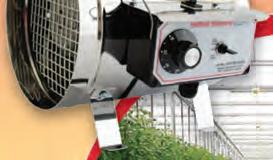






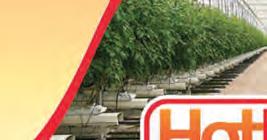


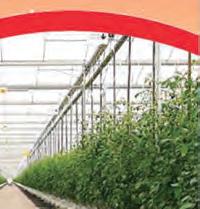



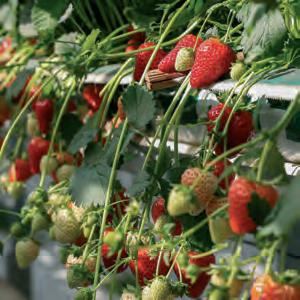


•
•
•
•
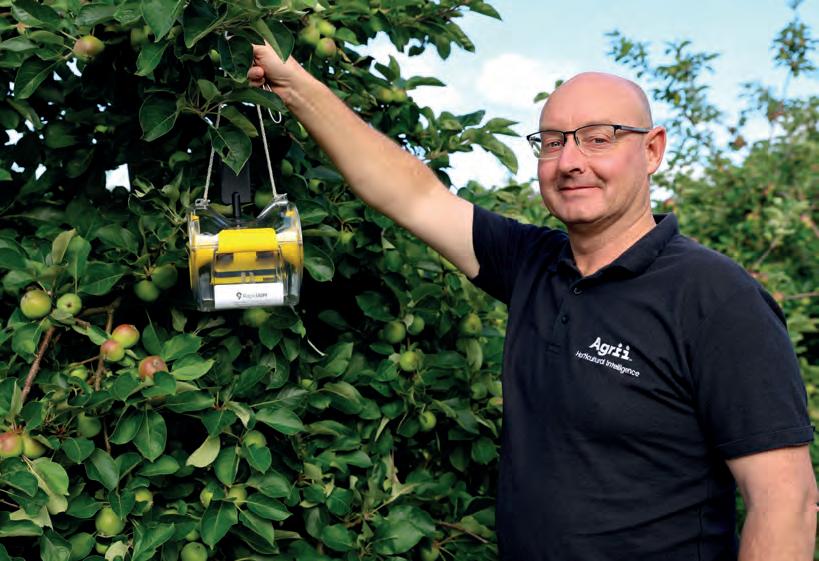
Apple growers will soon be able to monitor codling moth numbers remotely and in real-time with the introduction of RapidAim, a pheromone-based detection system.
The system will improve crop protection by enabling more targeted use of insecticides which is considered especially important to supporting the performance of biologicals as these often require precise timing to optimise e cacy.
The system is being brought to the UK by UPL but will be available exclusively through Agrii. Following its assessment in orchards across Kent and East Sussex during 2023 and 2024, it will be available nationally from 2025 after a formal launch to growers this autumn.
RapidAim di ers from the pheromone-traps growers are likely to be more familiar with as it is not a trap, but a monitoring station arranged as a connected network. Data on moth numbers is collected as the insect passes through the device. The data is then transmitted to the user’s account every 30 minutes. The account holder will be able to view the data via a dashboard on a smart device such as a smartphone or tablet. The grower will have oversight across their own network of devices with the data enabling them to ne-tune insecticide timings for optimal performance.
RapidAim o ers a more accurate and reliable form of monitoring codling moth populations, says Don Pendergrast, Agrii technical manager for non-combinable crops.
“Unlike other systems, RapidAim does not
rely on images captured on a semi-regular basis during the day. Nor does it require data-hungry services such as the 4G mobile phone network. Instead, it uses an algorithm to identify the pest being monitored before relaying the information via the narrow-band mobile network. This supports excellent connectivity and means RapidAim does not su er the connectivity issues often experienced in rural areas,” Mr Pendergrast says.
The RapidAim stations should be arranged on a grid system and located on the outer boundary of the orchard with one device for every 3ha of trees.
In 2023, the rst year of trials, RapidAim units were situated in orchards across Kent with the trial expanded in 2024 to include Sussex.
There are now more than 60 units in place with some of the leading commercial growers in the region, comments Brendan Rhodes, Agrii fruit agronomist who has overseen the eld trials of the past two seasons.
“We have spent the past two seasons assessing and validating its capabilities with a network of growers across Kent and Sussex. Those users who trialled it reported that the data presented was consistent with the pest numbers they were seeing in orchards and, perhaps reassuringly, more accurate than indicated by pheromone traps,” Mr Rhodes says.
As part of the evaluation process, the RapidAim units were matched with Delta Traps located as per industry standards.
“The results have been highly encouraging. It quickly gained the trust of the growers involved who recognised the value of real-time data in supporting crop protection strategies,” Mr Rhodes adds.
For Stuart Jackson, UPL head of technical services, the introduction of RapidAim represents a decision support system t for the digital era.
“RapidAim is not a direct form of control, but a risk-management tool. It enables control measures to be highly targeted while enabling growers to demonstrate the justi ed use of insecticide products,” Mr Jackson says.
“It can also be used as a validation tool. Postapplication populations can be monitored to determine if further applications are required or if the activity so far has been su cient,” he adds.
About RapidAim
RapidAim uses technology initially developed by the Commonwealth Scienti c and Industrial Research Organisation (CSIRO), Australia’s national science agency, to improve targeted control of fruit y. Following its commercial success, the model was adapted for codling moth at the request of growers. It has since been adopted in the major apple growing regions of the world, including New Zealand and Washington State in the USA.
The codling moth algorithm is now a wellde ned capability. An algorithm for vine moth is being trialled with Agrii this season, and an algorithm for diamond backed moth is expected for assessment in 2025.
Users can monitor pest data in real time via a smart device or a desktop computer with the data being displayed set to the user’s preferences










VineWorks business director, Chris Buckley, discusses the importance of soil health and the bene ts cover crops can bring to the vineyard.
As autumn approaches, harvest may or may not be complete and your vines will soon go into dormancy. It will soon be time to re ect and put plans in place on enhancing the upcoming season. Vineyard management is a complex task, with no single formula for success. Each vineyard is unique, necessitating tailored strategies to maximise vine productivity. While climate plays a crucial role, soil health is arguably the most signi cant factor in your vineyard's success.
The role of soil management
In recent decades, soil management has primarily focused on physical and chemical aspects. However, the biological component, known as the ‘soil food web’, is equally vital. This web comprises everything from mammals to bacteria, each playing a crucial role. A few grammes of soil can contain upwards of billions of microorganisms. Around roots though, there can be approximately 2,000 to 5,000 times more microorganisms than in the surrounding soil! Living roots in the soil are crucial. This dense microbial activity is essential for nutrient cycling, soil structure, and overall plant health. In addition to supporting biology in the soil, living roots can – depending on the plants – reduce soil erosion, improve soil structure and water in ltration, reduce compaction, scavenge or x nitrogen, increase organic matter, suppress weeds, and build soil fertility.
Why plant cover crops
Living roots in the soil means using a cover crop or


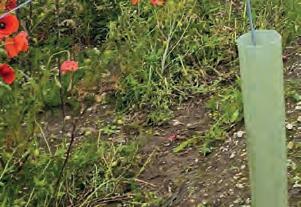
permanent grass cover in the vineyard alleyways. Permanent grass cover tends to represent less biodiversity, but is often the easiest option to manage. Using cover crop mixes, and in some cases rotating them, can o er greater biodiversity and a range of additional bene ts beyond that o ered by grass. There is no one-size- ts-all approach. Experimenting with di erent cover crops is important to nd the best t for your speci c site, soil conditions, and vine requirements, and these will change year to year. Di erent species of cover crops – within the families of brassicas, legumes and grasses – can o er varying bene ts, so it is a case of ongoing experimentation to assess what works best and when in your vineyard.
Bare soil eventually depletes organic matter, leading to the decline of bene cial fungi and the rise of anaerobic bacteria. Grapevines thrive in soils with a high fungal presence, a balanced carbon:nitrogen ratio, and good aeration. Cover crops contribute carbon and organic matter, with deep-rooting varieties facilitating water in ltration and air space, reducing evaporation, and lowering disease risk.
In summary, the bene ts of cover crops include:
• Hosts bene cial insects
• Provides organic matter
• Prevents erosion
• Improves soil structure
• Enhances drainage
• Aids water retention
• Increases nutrient cycling
• Improves soil aeration
• Promotes mycorrhizal fungi
• Boosts biological activity.

Each vineyard is unique, necessitating tailored strategies to maximise vine productivity.











Soil organisms, including fungi and bacteria, decompose plant tissue into nutritious food for your vines. A natural and diverse diet leads to healthier plants with stronger immune systems, compared to those reliant on chemical supplements.



The UK’s natural ripening season is relatively short, so maximising your terroir's potential is essential. A healthy, diverse cover crop unlocks a broader range of nutrients for your plants. Robust ground cover also allows access with heavy machinery in challenging conditions.
Depending on your goals and chosen varieties, sow your cover crop in either spring or autumn into well-prepared soil using a combo power harrow-seed drill. Since this is an infrequent operation, hiring a seed drill from local contractors may be more cost-e ective. Consult with your agronomist and local seed supplier to select the right mix for your needs, and let nature do the groundwork.
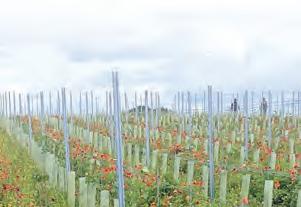






and supporting
vineyards




With over 4.5 million vines planted, 300 vineyards established and thousands of tonnes of grapes hand-harvested, our expertise comes from experience. www.vine-works.com




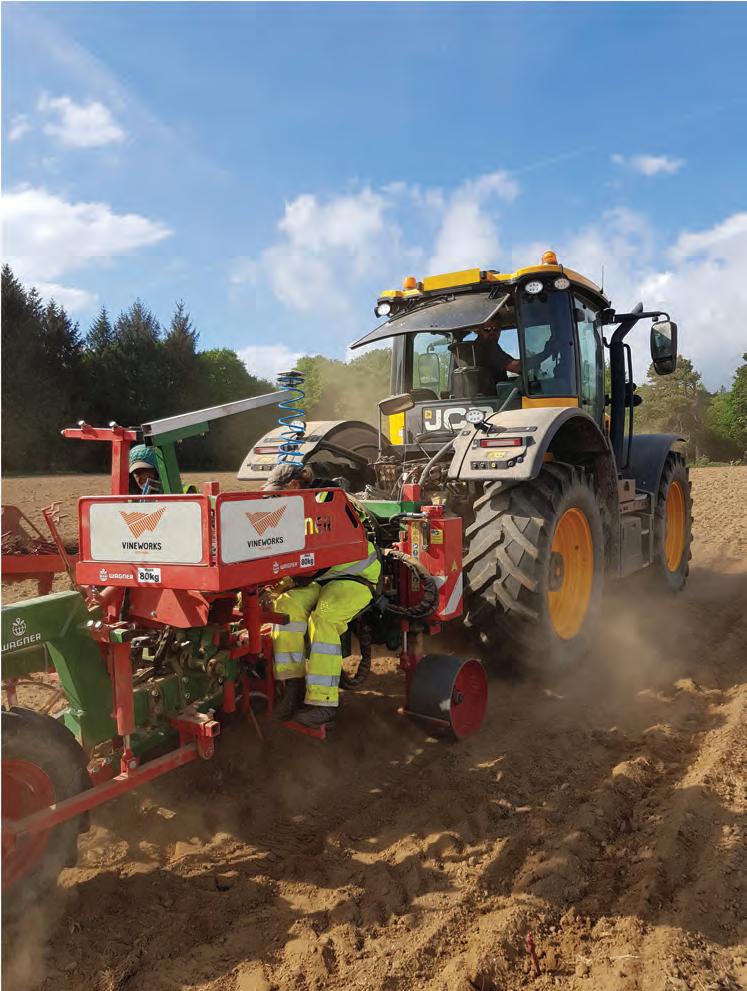


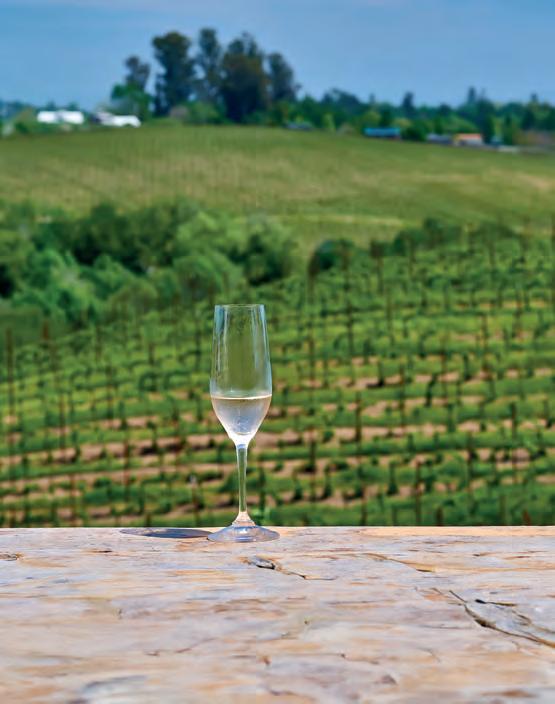





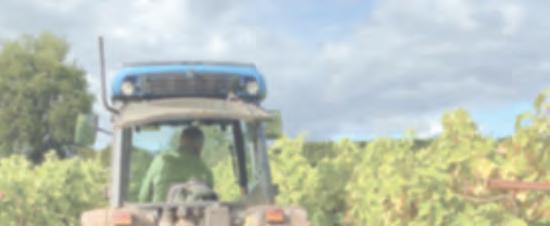
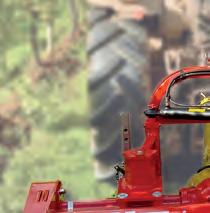




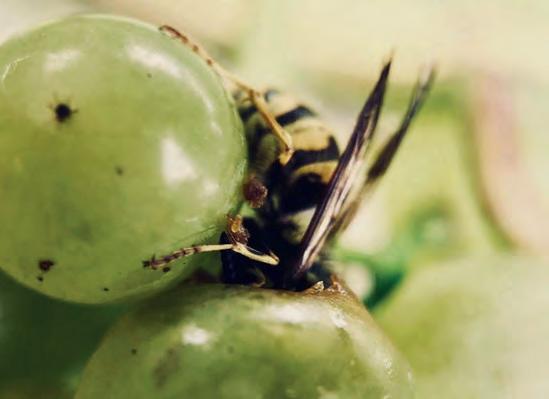









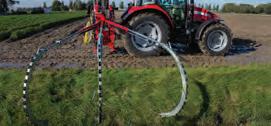







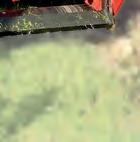

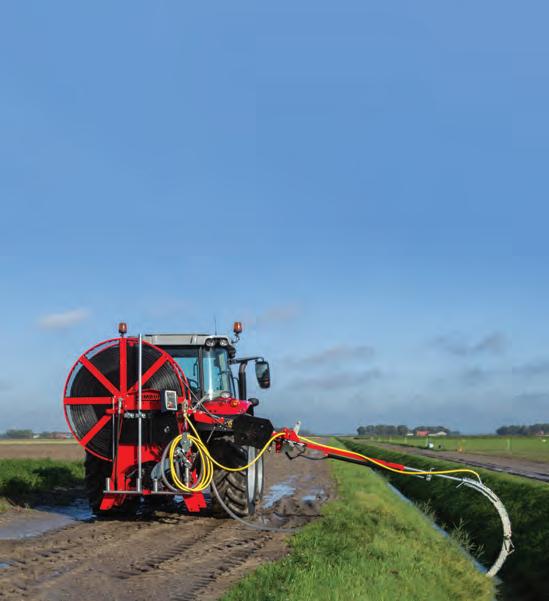




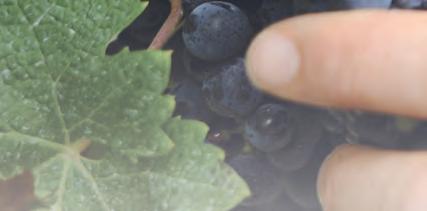


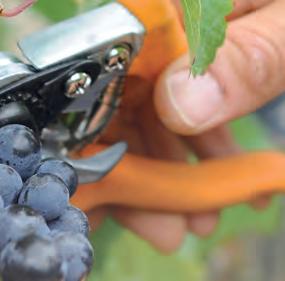


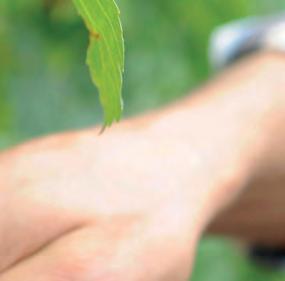




As the start of the grape harvest approaches, Fruit & Vine gets some expert advice about how to make it run smoothly and make the most of this season’s crop.
With a narrow window of opportunity in which grapes need to be picked to achieve the desired quality, careful planning is essential for any vineyard manager. Throw in the added complexities associated with the weather, pests, late-season diseases, winery capacity, labour and transport, and there is plenty to consider before picking begins.
For early cultivars such as Siegerebbe, Solaris and Rondo, picking typically starts in the rst half of September on the earliest sites, while for late-maturing varieties like Chardonnay, Seyval and Pinot Noir (late), it may well be going on into late October or early November, depending on the weather during ripening.
Labour availability remains a big issue, especially when the timing of grape harvests competes with other seasonal demands, so if not done already, prioritise organising labour and logistics, says East Anglia-based Hutchinsons agronomist, Will Robinson.
Pickers, whether a hired gang of paid workers or local volunteers, should be booked early, with individual responsibilities planned out, he says.
“It’s important to build a good team of pickers and keep them happy and motivated, recognising that local volunteers may well expect wine and lunch.”
It is known that enthusiastic sta give ‘discretionary e ort’ over and above doing the bare minimum, so productivity can bene t.
Other practicalities to consider include:
• Check winery capacity, estimated delivery dates, and how they want to receive grapes (e.g. 25kg baskets or 250kg Dolav boxes)
• Organise containers/bins/baskets/buckets/crates
• Identify where pallets need to be, check turning circles, access and other logistics, such as where to put fresh containers for pickers
• Ensure everything is in place for sta wellbeing (toilets, food, etc), transport, tools, etc
• Plan health and safety requirements, including risk assessments and any training required –ensure foreign language versions of guidance are available if needed.
Botrytis
When preparing for harvest, if there are any bunches su ering from botrytis, Will advises growers to assess how much of the a ected bunches to salvage. Considerations include what percentage of botrytis to allow in picked bunches; how long it will take to remove the a ected area from the bunch; and how much infected juice will remain on the bunch if traveling a long distance.
“Zero botrytis is the main aim throughout the

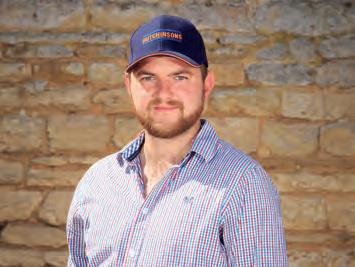
season, but as the harvest goes on, and the sugars continue to rise, some infection is usually seen.”
Haulage to the winery may also need to be considered when deciding on botrytis thresholds, as grapes in transit for longer periods, for example in unrefrigerated overnight freight, may be more at risk of quality issues.
Deciding when to start harvest is perhaps the biggest decision growers make in terms of wine quality, says Hutchinsons agronomist, Rob Saunders.
“With grapes being such a perishable commodity, there is little room for delay once crops hit the quality ‘sweet spot’ for Brix and acidity levels.
“Good communication with your winery is essential for hitting the optimum harvest timing

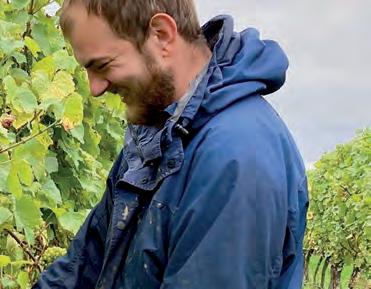
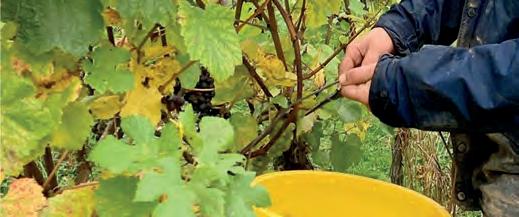
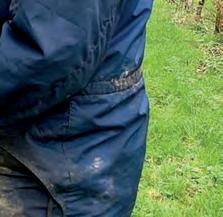

and ensuring the daily pressing capacity is there when you need it. Be realistic about the volume of grapes expected and when they will be ready, and keep the winemaker informed if things change.”
For growers with newly established vines approaching their rst harvest, Rob cautions against leaving ripe bunches hanging on vines too long in an attempt to hold on for the higher potential alcohol levels needed for still wines. Doing so risks diminishing the life expectancy of young vines, by diminishing the carbohydrate reserves that would otherwise be laid down for the winter dormancy period, ready to be called upon for strong early growth next spring, he says.
“In exceptional years, such as 2022, the weather may allow growers to achieve potential alcohol levels of 13–14%, but generally in the UK, unless conditions are very favourable, the aim should be to ‘pick for sparkling’ in the rst harvest, targeting lower potential alcohol levels of 10–11%.”
In unsettled autumns, botrytis is an inherent risk when holding out for rising Brix and falling acidity, so it is important to maintain disease control right up to harvest, although always adhere to harvest intervals on any products used, adds Rob.
He also points out that keeping vines wellnourished right through to the end of the season will in uence grape quality. Indeed, potassium (applied in potassium sulphate form) is particularly useful for supporting Brix development, while some research shows molybdenum has a role in the mobilisation and accumulation of sugars in grapes.

Results from tissue testing of leaf blades collected at veraison can be useful for identifying potential de ciencies that need rectifying. “Alternatively, you could look back at previous soil tests to see which nutrients might still be lacking.
“There is a range of nutritional products available for late-season use, so talk to your agronomist about the most appropriate options.”
In the run-up to harvest, growers should continue to manage canopies well to maintain the optimum leaf-to-bunch ratio of 15:1, to ensure leaves can keep feeding the maturing bunches, while also allowing adequate exposure to sunlight for ripening, he adds.
Quality control before picking
To help speed up picking work rates, Rob recommends going through the vineyard before harvest to remove underripe bunches, or those that have succumbed to botrytis or mildew, and carry out some leaf stripping to expose healthy bunches.
Doing so can bene t juice quality by reducing the risk of diseased grapes tainting the wine, while also allowing pickers to focus on picking healthy bunches, without having to worry about grading or quality control. “It is of course, reliant on having the labour available before the main harvest period begins."
Trimming vegetative cover in alleyways and removing tall weeds, such as thistles, can also make life easier for picking teams and improve work rates.
Given the wet season so far, managing botrytis bunch rot risk is understandably at the forefront of many growers’ minds, and must be guarded against right up to harvest – especially if August and September weather is unsettled.
Risk varies according to cultivar, being greatest in those with tight bunches where the pressure is more likely to build up to the point where berries pressing on each other give rise to splits, allowing infection to take hold, says Rob.
“A range of control options are available, but the most appropriate depends on the estimated picking date, and what has been used so far.”
Many traditional botryticides have a 21–28
day harvest interval, however there are various biological alternatives that o er application windows much closer to harvest, such as Vintec, Amylo-X, or Serenade.
The main fungicides include products based on fenhexamid, pyrimethanil, and cyprodinil + udioxonil. Each of these can be used twice each in any one season, and rotating the active ingredients is important to reduce the possibility of repeated use allowing any resistant strains to become dominant.
Beyond that, Rob says the short harvest interval options are the generally slightly less e ective biological controls, such as cerevisane, and those based on naturally occurring microbes, such as bacillus or a ureobasdium products.
“Bacillus products are a preventative option that work by colonising the same niches as botrytis pathogens would inhabit. Bacteria then produce anti-fungal compounds to prevent botrytis infection. With little or no harvest interval, they can be used right up to picking, but their e ectiveness is dependent on achieving good spray coverage and colonisation of the target area (i.e. the bunches).”
While botrytis is the focus in the run-up to harvest, mildew risk should not be overlooked, Rob notes. Experience has found that foliar nutrition products such as Zynergy (containing copper, zinc and sulphur) and phosphites, such as Phorce, can increase the vine’s natural defence mechanisms, markedly reducing downy mildew risk.
Of the conventional fungicides, proquinazid o ers the strongest and most persistent powdery mildew activity, so will provide useful and sustained protection in the run up to harvest, but there are harvest interval implications based on product choice, he says.
Do not overlook spotted wing drosophila (SWD), and the sour-rot complex that usually follows, he adds. “SWD has already been seen in higher numbers in other fruit crops this season –hardly surprising as they bene t from the humidity that’s characterised so much of the year so far.”
Wasps are a perennial problem as grapes ripen, especially in early maturing varieties like Solaris and Siegerrebe, and are very hard to control. Locating and destroying nests is theoretically the best approach, but is usually much easier said than done. Precision monitoring with multiple traps may help.
Finally, it is worth noting post-harvest foliar nutrition can be worthwhile to help ensure next year’s canes and buds are as healthy as possible, says Will Robinson.
“The post-harvest period is a key time when vines absorb nutrients and build carbohydrate reserves for winter and next spring, so there can be bene ts from applying some foliar nutrients and trace elements, if there is opportunity before leaf fall.”
There are ve main nutrients to consider, including potassium, phosphorus, boron, magnesium and copper.
“It is best to avoid applying nitrates postharvest, or trying to prolong the ripening period in young vines; but in more mature vineyards, there could be merit in applying products such as Maxicrop or Megafol to help keep leaves green and functioning,” concludes Will.












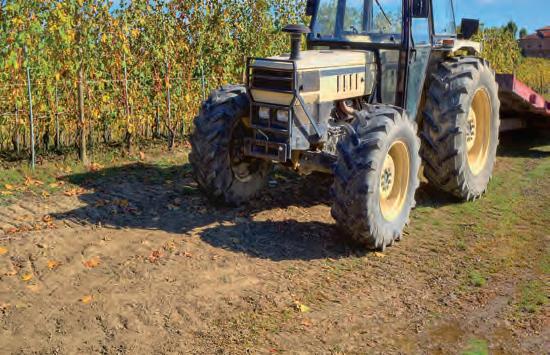

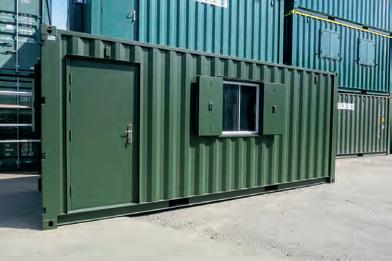





































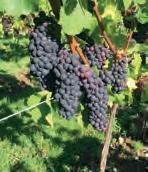




















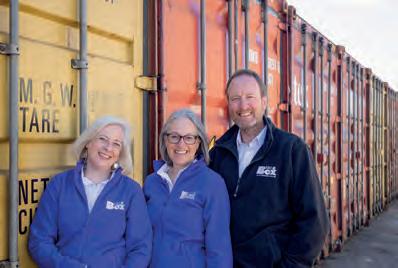









•
•
ADVICE: All advice and organisation of soil & site preparation works.
• GRAPEVINE SUPPLY: All vines sourced through one partner nursery, proven vine establishment over many years.
• VARIETIES, CLONES, ROOTSTOCKS: All combinations created to suit your vineyard site and target wine styles.
• PLANTING: Planted by GPS guided machine, accurate to within 8mm.
• TRELLIS MATERIALS: We supply everything, sourced direct from the factory to ensure lowest possible prices!



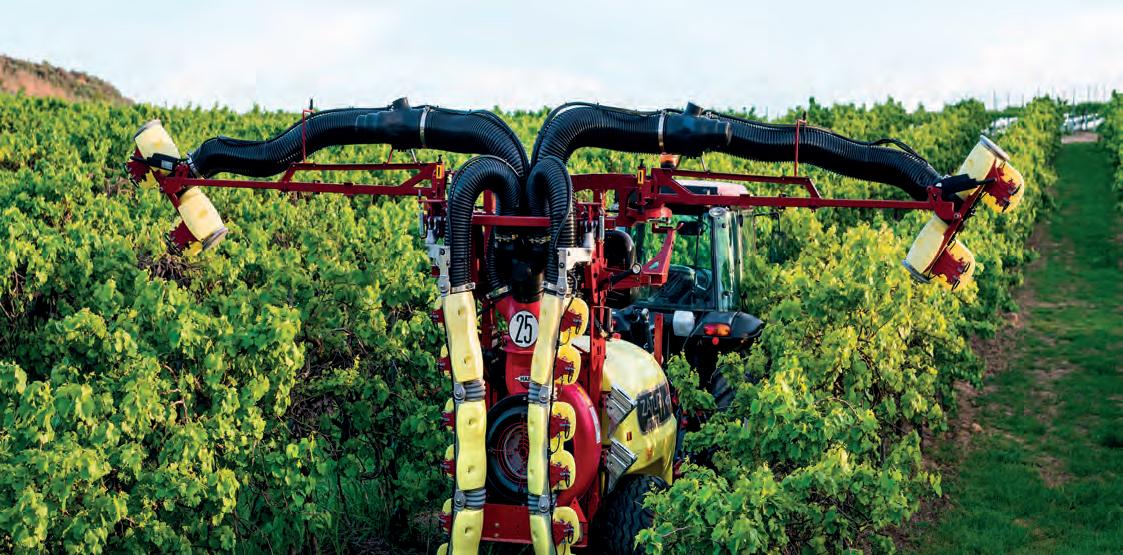
Orchard, vine or forestry, HARDI have a mistblower to meet all your spraying needs. Benefit from the expertise gained from HARDI’s many years of worldwide experience in spraying. Everything from tank design to the latest electronic control systems is reflected in our mistblowers.

Peter Wiles - Southern Territory Manager: 07901 856734 Martyn Sleight - Northern Territory Manager: 07785 707746 sales@hardi-uk.com | www.hardi.co.uk
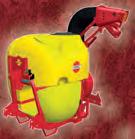

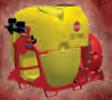


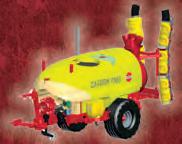


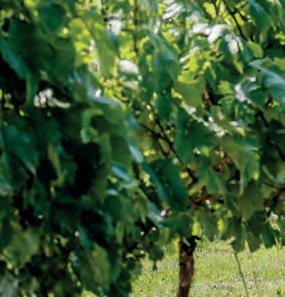



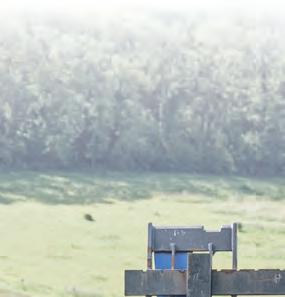

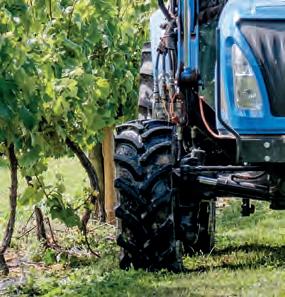
Fruit & Vine editor, Rachel Hicks spoke with Ellie Wilson, the latest generation of the Wilson family to work at Little Wold Vineyard in Yorkshire, to nd out more about the history of the farming family and their latest diversi cations.
Market Place Farm has been in the Wilson family for over 70 years, and has evolved from being a mixed arable and livestock enterprise, to renewable energy, to diversifying into winemaking and weddings.
Ellie Wilson assists with both the vineyard and winery at Little Wold Vineyard, and has also helped out on the hospitality side in the past; so, despite being one of the youngest members of the family team to join the business, she is certainly is wellplaced to discuss the ups, downs and everything inbetween.
“I’m the fourth generation Wilson to work on this farm; my father, Tom Wilson, and his sister, Alice Maltby, run the business with their father and my grandfather, Henry Wilson,” explains Ellie. “We recognise the unique working dynamic this creates, but we also embrace having our work so closely tied to our family; it’s the way this farm has always worked.”
Ellie and her aunt, Alice, both had plans to pursue careers away from the vineyard, with Ellie having undertaken a Master’s degree in creative





Due to lack of local specialist machinery, Tom Wilson has built or adapted his own, such as repurposing a combine side knife
writing and publishing, while Alice trained originally to be a teacher. But they were both, possibly inevitably, drawn back to the family farming business. Now Ellie uses her skills to assist with the vineyard blog, while Alice realised she had more to give in helping the business diversify into weddings and events.
“However, my father, Tom, has always worked in agriculture; from his early childhood to now, he has always had a love for hard work and being out in the elds. Before Little Wold Vineyard (LWV) was established, Tom worked for several major farms in Yorkshire and North Lincolnshire, and has always been respected for
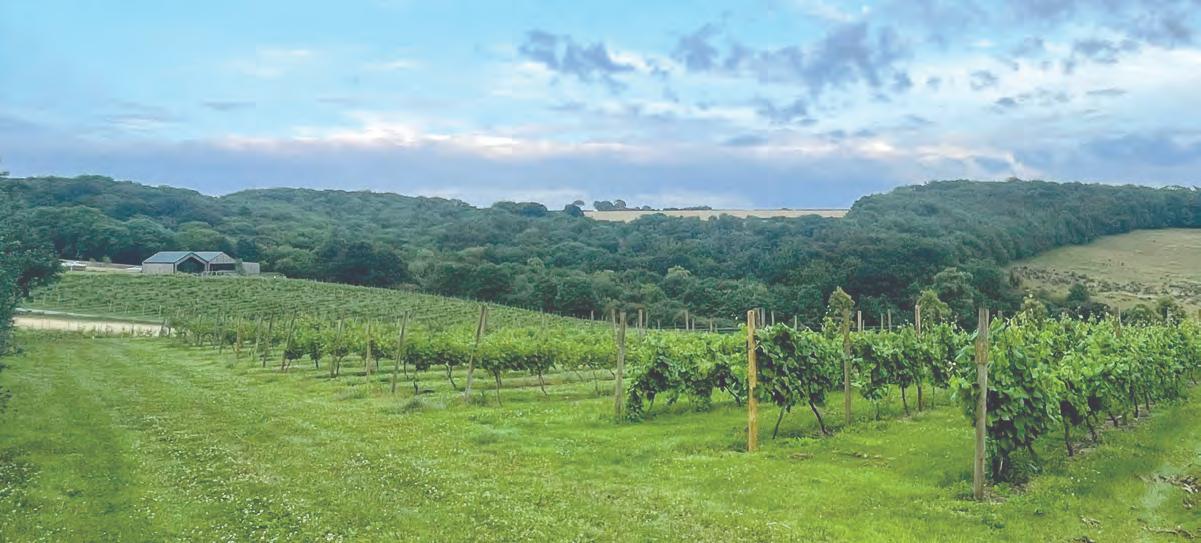
The elevation helps keep the vines from frost most years, although there are one or two frost pockets as the contour of the hillside dips
Varieties have been chosen based on their suitability for the site, but this year's growing season has been a particular challenge


While yields are high, sugars generally are lower due to the limited sunlight, so the wines produced are on the drier end of the spectrum
his dedication. He now manages the vineyard aspect of LWV, bringing all of his prior knowledge and understanding of the land he grew up on to help us keep the vines in good health.”
There had been many attempts by the Wilson family to branch out and diversify over the years before LWV was born, from Christmas trees to sustainable willow projects – so it would be fair to say that they have never been afraid of stepping into the unknown.
Ellie’s grandfather, Henry, came up with the idea for diversifying the farm into a vineyard in the early 2010s whilst away visiting family in South Africa. He did some research on his return home and was delighted to nd Stewart Smith, a vine expert, was located just a few miles down the road in Malton.
Stewart visited Henry’s proposed site and gave the thumbs up to the project. Soil samples were taken and a range of vine varieties were matched to the site. These included some familiar varieties such as Chardonnay and Pinot Noir, along with some more typically ‘English’ varieties such as Rondo, Madeline Angevine and Solaris.
“Having spent his entire life working on the farm and being in need of a ‘retirement project’, he felt that a vineyard would be the perfect solution. It’s probably important to note here that Henry, unsurprisingly, is no longer in retirement,” smiles Ellie.
By the turn of the 21st century, the farm could no longer compete with larger estates, and much of the land was sold for building. What remained was converted into meadow/grassland.
“This is actually where one of our wines, Poppy Hill, gets its name from, as during this time many of the elds grew this wild ower, creating beautiful landscapes,” Ellie explains.
“The earliest vines were planted in 2012. If you ask Henry about the location of these vines, he’ll tell you that he planted them somewhere that people were less likely to notice them – on the o -chance his idea did not work.
“As it happens, the retirement project was a success, and we now have vines in most of our elds surrounding South Cave. Our youngest vines were planted in 2022, using a piece of equipment Tom built from scratch with the help of some friends, which he hoped would make the process slightly more bearable.
“Prior to this invention, the vines had been hand-planted, which was ne when Henry was trialling the idea of a vineyard, but not ideal for Tom and the thousands of vines he needed to plant.”
Tom’s vine-planting aid attaches to the back of the tractor and allows someone to be carried along, placing the plant into the trench dug out for them.
The rst ve years gave very little income from such a large investment (both in money and time) but all the hard work is starting to pay o , says Ellie. “We’ve improved massively from our earlier years, as you’d expect. For example, in 2017 the total yield was 6t; in 2021 we produced 13.5t, and this jumped to 19t in 2022.
“Despite the poor weather in 2023, we had our most successful harvest last year, bringing in around 32t. We had predicted around 40t, but due to the summer being wetter than anticipated, we experienced more disease in our Madeline and Phoenix varieties, which is where we lost around 8t of produce.” While the 2023 yield was LWV’s largest to date, the quality of the grapes was well below what they usually aim for at harvest. The lack of sun meant the grapes were struggling to ripen, and they were waiting until mid-to-late September to start picking in the hopes that this extra time would allow the grapes to develop the sugars they needed. Waiting like this also left the vineyard more susceptible to disease and pests, such as wasps.
However, points out Ellie, this year’s growing season has been a particular challenge. “The inconsistency in weather has made it di cult for Tom to keep on top of spraying, and has left the team worried about disease making its way onto the vines.”
Harvest usually occurs around the middleto-end of September, although this year LWV is anticipating it to start as late as October.
LWV typically su ers from the three most common diseases – downy mildew, powdery mildew, and botrytis. While LWV’s viticulturist, Cameron spots the signs for these, Tom’s agricultural history and quali cations means it’s primarily up to him to spray the vines regularly.
“This works quite well for us, as while Tom is spraying Cam is often working in another vineyard, where he can track any signs of disease and let Tom know,” explains Ellie. “Tom uses Karma to control and stem our mildew problems, although unfortunately once mildew has set in to the vines it can be di cult to contain it. This has been especially di cult for us this year with persistent rain meaning spraying has been almost impossible to do consistently or in a way that would be e ective.
“As for pests, deer tend to be our worst problem at LWV. Our relative isolation and the woodlands that border us mean we are a prime spot for deer to come to as a food source. We have tried our best to humanely resolve this, by installing fencing that makes it di cult for them to access the vines, although this isn’t always the right solution for us, especially for the vines that surround our tasting room, which is often visited by members of the public and used for weddings and other events.”
Canopy management and harvest
The vineyard is mostly maintained all by hand. The canopy is managed through tucking in, which the team do a few times in the early stages of shoot and leaf growth, but later they trim back the growth – often by hand, but sometimes mechanically.
LWV owns two smaller tractors – a John Deere and a New Holland, both of which are second hand – along with a fan-assisted sprayer. “Our sprayer is a speci c model which comes from Poland, and is more suitable for soft fruits and greenhouse use. The problem is that all of our parts have to come from the original makers in Poland, which means when we need to replace something it can take some time to get to us – impacting the consistency of the spraying we do,” says Ellie.
As for other technical equipment on the vineyard, much of it is built using pieces Tom and Henry would have used for more common agriculture practices. Purchasing a de-lea ng machine was not a possibility for Tom, and so he repurposed a combine side knife, which he uses to trim o excess growth in the vineyard.
“As with our planting machine, these less-than orthodox methods of mechanising may not sound ideal, but for us it’s really been our only option,” shares Ellie. “Our sources are limited compared to our southern vineyard counterparts, and as a UK vineyard in general it is di cult compared to the
(l-r) Henry Wilson, Tom Wilson and Alice Maltby
European vineyards.”
LWV uses the gentle pruning method, which means they prune according to the individual vine. “This is a less straightforward process than the cordon method, as we assess the vine before determining which canes we will keep and spare before removing the rest of the plant. While it’s a longer method to do, we feel it produces better results,” comments Ellie.
Grapes are handpicked across all the vineyards, with members of the events and hospitality teams all chipping in, along with local pickers brought in through a volunteer programme, which runs from early spring through to the end of harvest. “This group of individuals has kept LWV running,” shares Ellie. “They’re willing to go above and beyond anything we would expect of them; it’s safe to say that without their help, we could not complete harvest.”
LWV produces all of its still wines, although this has not always been the case.
“We originally started by sending the grapes to Half Penny Green, who are well-known contract winemakers, and they still make our sparkling wine, using the traditional double ferment method,” says Ellie.
“But in 2021 and 2022, Tom built the winery, with the help of myself and Cam, allowing us to make our own still wines for the rst time in 2022. We haven’t sold on any of our grapes before –although we have been asked if we would be willing to in previous years, we’ve always wanted to keep what we produce for our own wine.”
LWV o ers ve still wines in total – three white wines, Chalk Hill, Barley Hill and James’ View; a rosé, called Poppy Hill; and a red, called Three Cocked Hat. “All of our wines have names that


Location: South Cave, East Yorkshire
Total vineyard size: Total farm area is 75.5ha, including vines, meadows, farmyard/winery and tasting room. Of this, around 7ha is under vine.
The family also manages three other vineyards in the Yorkshire and Lincolnshire area – an additional 2.4ha.
Soil type: Loamy chalk, which combined with the steep incline assists in good drainage.
Aspect: The valley the main sites sit on runs north to south, meaning plenty of sun. The site is 215m above sea level, and the elevation along the valleys protects the vines from frosts most years, although there are one or two frost pockets in some of the vines as the contour of the hillside dips naturally.
Varieties grown: Rondo, Divico, Regent, Madeline, Bacchus, Seyval, Solaris, Phoenix, Chardonnay and Pinot Noir, typically on SO4 rootstock.
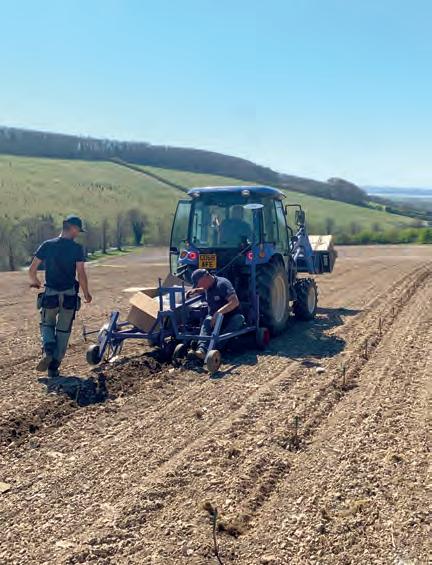

LWV's still wines are produced within the vineyard's own winery, with their sparkling offerings produced by contract winemakers
The vineyard started offering weddings in 2016 – a venture of Alice's and her main reason for returning to the family business

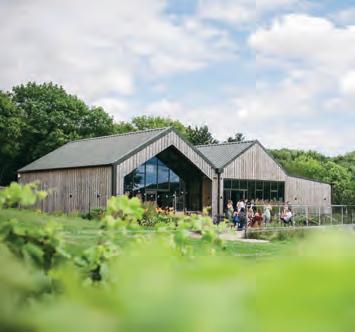
revolve around the farm and its history. We’re very proud of our little farm and all it’s been through, and we hope that in sharing these names we are able to give people a little snippet of the history of
LWV,” says Ellie.
All of the wines lean towards the dry end of the spectrum, due to the reduced level of sun on the vines, meaning the grapes aren’t able to produce the kind of sugars you’d need for sweeter wines.
Winery building and marketing
The winery was a lockdown project, completed by Tom in between looking after the vines, pretty much on his own. “At this point, we had no additional sta in for events or the vineyard, it was a real family e ort to keep the farm running; Alice manned many of the wedding elopements on her own while trying to keep the sales of our wine going, which was how we were to fund both the building of the winery and the extension of the tasting room.
“The job wasn’t easy, and Tom had to work quickly once he, Alice and Henry decided that they wanted to produce their own white wine in 2022. But, like most things Tom does, he completed the job in time, and at a much cheaper cost than we would have expected to pay if we had hired contractors to build the winery. The equipment was sourced second hand for the most part, with the help of Kieron Atkinson from The English Wine Project.”
Around 80–90% of LWV’s wine is sold through their weddings and other events they hold, as well as via online sales and through the ‘cellar door’ which they have open twice a week, on Fridays and Sundays from 11am-4pm.
“Prior to lockdown, we had started looking into wholesale, but we had to withdraw from this to sell ourselves to make maximum pro t; with the extension of our tasting room and events we were o ering as we came out of lockdown, we realised we needed to evaluate how much we needed to keep before we returned to wholesale,” explains Ellie.
“Now, roughly two years on, we are looking to go back into wholesale. We do sell in some local farm shops and restaurants, who we love to work with and support.
“Much of our marketing is social media based, but being a relatively standalone business, o ering events and wine, in our area means word of mouth has also been hugely important for us. We are very lucky to live among people who
believe in supporting local business, who believe in leaving lovely reviews and sharing us with people across the country.”
Diversi cations and sustainability
LWV started running weddings in 2016 – a venture of Alice’s, and her main reason for returning to the farm after a short stint as a teacher.
According to Ellie: “Alice’s business-oriented mind has allowed us to expand into something none of us anticipated. We now do corporate events, tastings, tours and charity events for local businesses. This has worked very well with the vineyard, and the two co-exist now in a way that makes it hard to picture one without the other.”
LWV was recently asked to undergo a carbon neutral investigation, and the results were impressive to say the least. For the size of the farm, the amount of chemicals they use is minimal, and with almost no need to cultivate the land, on top of all the land we leave as wild ower and meadow, the land is as close to carbon neutral as is possible, according to Ellie.
“We did make the conscious decision to remove the foil casing from our sparkling wines a couple of years ago, and have also made an e ort to reuse our cardboard packaging where we can (we have no plastic packaging for our wine) to transport the wine from storage. We are always looking to be more sustainable, and with regenerative viticulture on the rise, I am hoping to work on this as I continue to grow into my role on the vineyard,” she shares.
“I think we can all admit that nance has been one quite di cult challenge for us,” says Ellie. “LWV was a diversi cation plan – a dream to keep the farm running, a farm which had been given up on as a small holding, which could never compete with the big businesses and housing developers buying up the land around it.
“While we joke that it was a retirement plan, it was also the family’s last shot at being more than land sat waiting for building permission. And thankfully, it’s worked, but it has never been smooth sailing. We’re always in need of something, that’s either ridiculously out of budget or only ships to EU countries. So you could say we’re always on the back foot. But we work together to make it all work. And I think we can be proud of that.
“Our location will always be the biggest challenge for us. I think Henry, Tom and Alice always knew we were out on a limb when they pushed forward with LWV, but as we’ve grown we’ve really felt the impact of this. Particularly when it comes to networking with other vineyards, I personally can recount times where people have been surprised that we exist, and have had people assume that we are not ‘serious’ about what we do – presumably because they think a vineyard situated eleven miles from Hull cannot be a good vineyard.
“This kind of adversity and ostracising is not something we alone experience, and I’m sure many northern vineyards have similar experiences to share. This is, I suppose, where being a close-knit family, both in the biological and metaphorical sense, really comes in handy. We are here for one another, and we are excited by what the future holds for Little Wold Vineyard.”



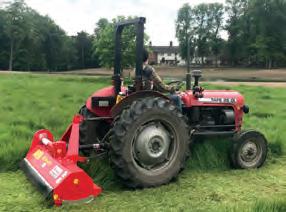




















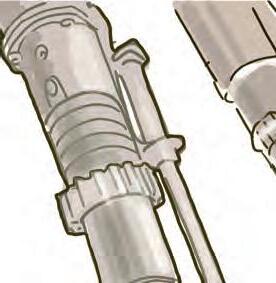
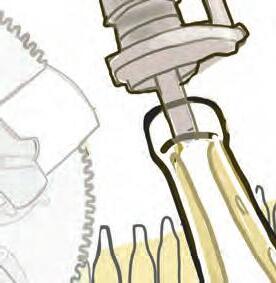


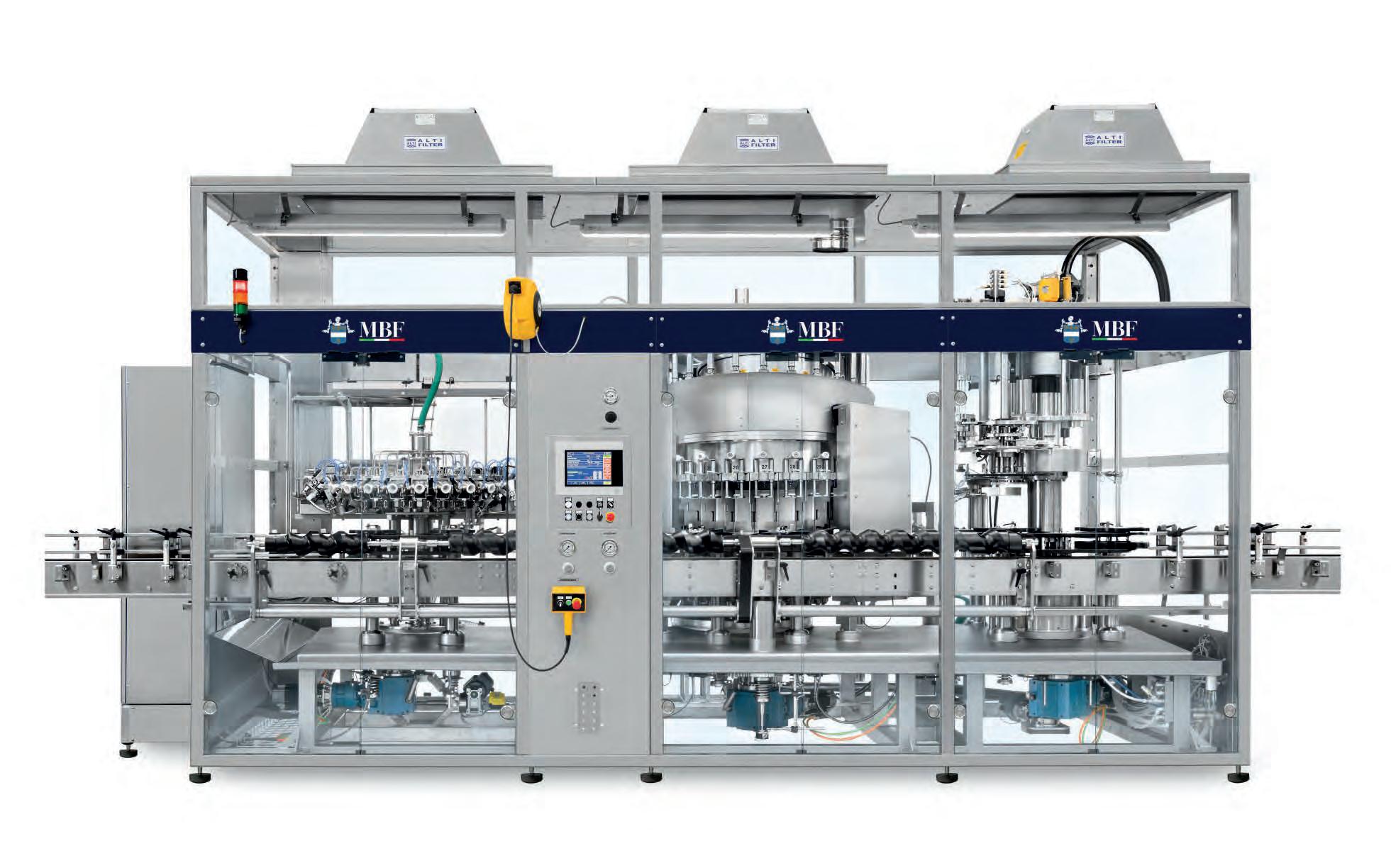
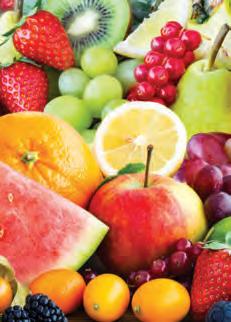


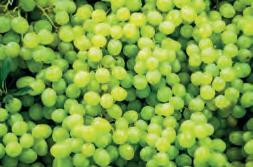
✓
✓




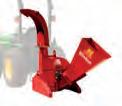


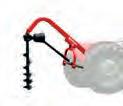










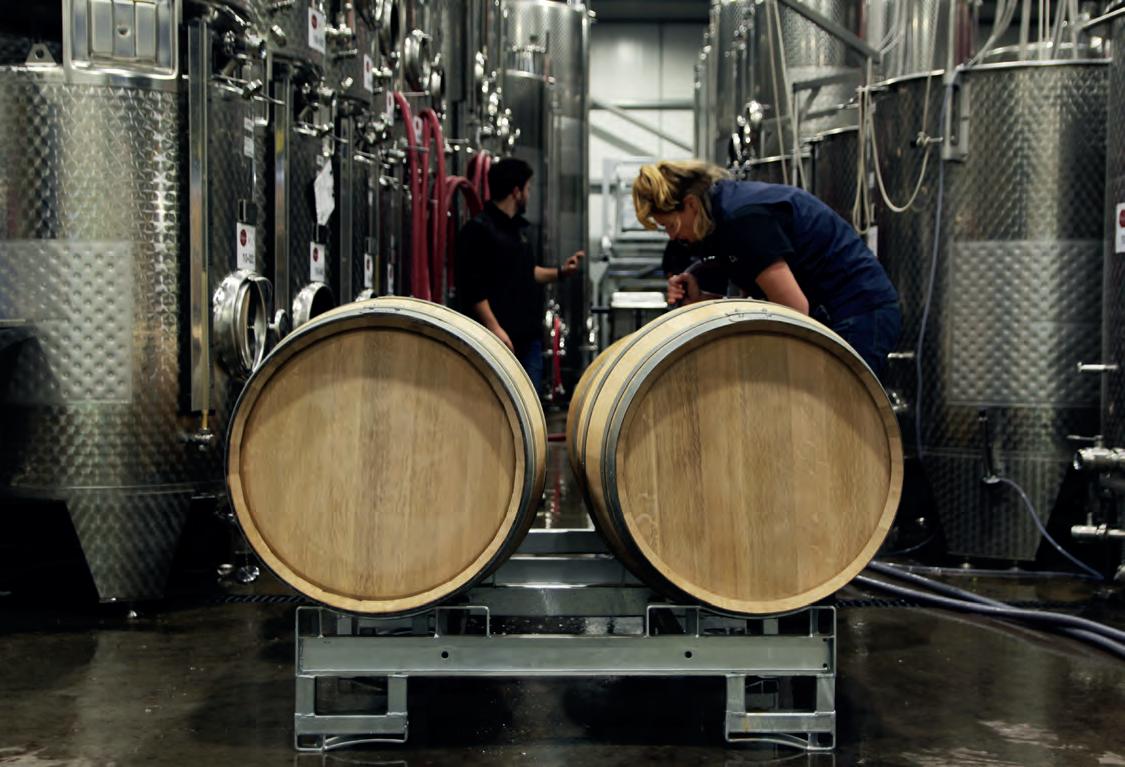
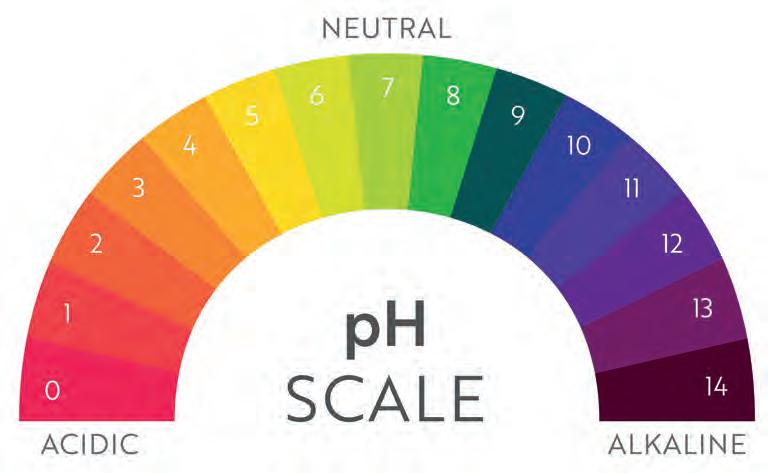
or further a eld, so the above two methods involve the lowering of acidity. However, as Nick points out, even in the UK in the warmest years in the warmest regions, there is the possibility of acidity being too low and the need for this to be increased. “This is simply done by adding a calculated quantity of acid, usually tartaric acid,” says Nick.
“The level of acidity in the grapes is inextricably linked to the ripeness of the grapes. Various viticultural factors will in uence this. As an overarching rule, any practice that increases the level of ripeness will lower the level of acidity. Direct exposure of grape bunches to sunlight is one approach to reducing the level of acidity,” Nick concludes.
In order for the ideal sugar and acidity levels to be reached, heat and sunlight are required. Therefore it’s vital to ensure the vines are planted in an appropriate location – with little or no shading and at not too high an altitude, as this impacts on overall temperatures.
The crispness or tartness of wine is dictated in part by its acidity. Winemakers use the acidity levels along with Brix to make decisions about harvest time and the need for acidity adjustments, in order to achieve wine stability and quality.
“Acidity is one of the structural cornerstones in wine,” says De ned Wine’s head winemaker, Nick Lane. “Wine grapes distinguish themselves from other fruit by potentially having both high acidity levels and high levels of sugar. Managing acidity in wine is a crucial aspect of making quality wines with good balance.”
Nick goes on to explain that the principal acids in wine are tartaric and malic, with lesser amounts of citric.
“In the cool climatic conditions of the grape growing regions of the UK, acidity levels are typically very high. Although these high acidity levels can be a useful structural component and a distinguishing feature, they can also result in wines that are out of balance,” he points out.
So, how do winemakers reduce acidity? “There are two fundamental ways in the winery that this acidity can be managed downwards,” says Nick. “The rst is by using malolactic bacteria that convert malic acid (with two acid functions) into lactic acid (with a single acidic function). This method is favoured by winemakers as it can also result in enhancing other avours and textures in the wine.
“The second method is by removing acidity chemically. The addition of potassium bicarbonate (essentially the same as baking soda) is actually a simple and gentle way of removing a speci c amount of tartaric acid.”
In the cool climatic conditions of the grape growing regions of the UK, acidity levels are typically very high.
Nick Lane Defined Wine

As already mentioned, acidity levels within UKgrown grapes are more likely to be on the higher side, compared to those grown on the continent
The canopy growth itself needs to be managed in order to ensure the grapes receive enough sunlight and heat – particularly important in high vigour varieties or for well-irrigated sites with nutrient-packed soil.
Shaded canopies cause higher pH and lower tartaric acid levels, with lower sugar levels a ecting the balance, therefore grape growers should aim to achieve an open canopy that is balanced between vine growth and fruit load.
Crop thinning is also important. Removing excess or crowded bunches will improve leaf area to fruit weight ratio, resulting in a higher level of quality within the overall yield.
Varieties grown in the UK, particularly in the more northerly or westerly regions, should be suitable for cooler climates. As such, varieties such as the sparkling/Champagne trinity have been the most popular to date and, more recently, Piwi hybrids have become a focus. As with the sparkling varieties, Piwis are usually more vigorous than conventional varieties and have a shorter phenology, so the fruit is quicker to mature during shorter or cooler summers. Similarly, clone and rootstock choice can impact on vine vigour so should also be taken into consideration when planning a vineyard.
The concentrations of malic and tartaric acid increases up until veraison, at which point tartaric acid concentration usually stabilises.
However, at the same time, malic acid concentration begins to reduce as it is metabolised to form sugars inside the grape. The higher the temperature, the faster this process occurs –therefore in the cooler UK climate it’s the malic acid which typically raises the overall acidity.
Determining a harvest date is usually decided between the grower and winemaker after assessing grape samples and considering the likely temperatures during the day and overnight over subsequent weeks.
If acidity and sugar content is uneven across the vineyard, one strategy could be to harvest small sections at di erent times and blend the juices back together later in the winery to achieve a balanced nish.

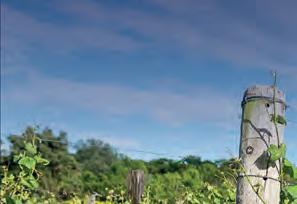


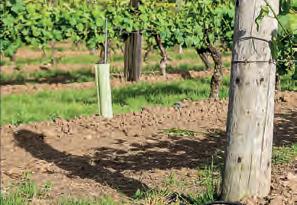









However, discussions with Ceres Rural revealed there were several new options released under the Sustainable Farming Incentive (SFI), which could reward the sustainable practices the business had already implemented, whilst also de-risking the provision of new ecological areas. The business’ commitment to applying integrated pest management practices also strongly aligned with the principles of the SFI.


New Hall Wine Estate in Purleigh, Crouch Valley, Essex, has a central focus on sustainable innovation and maximising vine health and prosperity, whilst enhancing the ecology and biodiversity of the surrounding habitat.
Established in 1969, New Hall Wine Estate hosts some of England’s longest established vines, making soil and ecological health essential to the success of the business. Still family-owned and run to this day, currently managed by the third generation, they now have 120 acres under vine and an impressive newly built winery on site. In 2024, they achieved eight awards for their Bacchus, Pinot Noir, Sparkling Rosé, Barons Lane Red, Rosé and Signature wines.
The family-run vineyard was seeking to enhance the biodiversity bene ts achievable on all aspects of the land, including the land between the vines and previously unutilised grass margins, to provide both ecological and economic bene ts to the business.
It is for this reason that vineyard owner, Chris
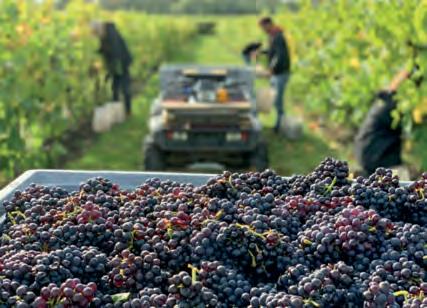
Trembath, opted for a review of agri-environmental schemes using Defra’s Future Farm Resilience Fund (FFRF). This provided him with access to free business support and advice from o cial FFRF provider and independent farming consultancy, Ceres Rural.
The rst step was for Ceres Rural to visit the vineyard to review the viticultural parcels and ecological areas the business may wish to enhance, followed by a discussion regarding the relevant grant funding available, both now and in the future.
The 60ha vineyard was already involved in a small-scale Countryside Stewardship management agreement, including wild ower mixes, cover cropping, and regenerative farming practices.
The vineyard now plans to establish new SFI areas, such as winter cover cropping between vines, to support soil health, improve pest management and advance temperature regulation to prevent frost damage to vines during the cooler months.
Chris noted: “These schemes have allowed us to receive nancial support for the ecologically bene cial practices we were already delivering, but critically they’ll help us to secure wider funding to deliver our broader environmental goals.”
Beth Speakman, the Ceres Rural consultant who provided the support, shared: “The new environmental areas will not only protect the vines by improving the soil health and boosting the surrounding habitats, but also help to de-risk the business against future environmental and market instability.”
The FFRF report provided to the business also highlighted the Countryside Stewardship Capital Options available to the business to facilitate the completion of maintenance works. These included RP15: Concrete Yard Renewal and RP4: Livestock and Machinery Hardcore Tracks. Both will help transform the vineyard and prevent soil compaction by providing more suitable access routes between the vines. Ceres Rural has helped the business receive con rmation of a successful capital application, meaning works are due to commence later this year.
Chris concluded: “The capital funding allows us to improve our infrastructure and operate more e ciently, whilst also o ering public good in protecting the surrounding hedges, ditches and wider water networks.”
Running until March 2025, farmers can access one-to-one, free-of-charge advice and direction from the Defra initiative, helping them to identify changes now BPS support is removed and ELMS is introduced.
The Ceres Rural packages allow farmers to choose from a range of items, depending on their needs and level of detail required – gold, silver and bronze options are available.
Farm resilience reports, carbon audits, benchmarking updates, business plans, budgets and follow-up business reviews are accessible, with Ceres Rural consultants involved in the collection of data and delivery of results. Over 1,150 reports have been produced by Ceres Rural so far, with many more to be delivered in the next six months.
To register your interest in receiving free farm business advice, email futurefarming@ceresrural. co.uk, visit www.ceresrural.co.uk/service/free-business-advice/ or call 01223 679679.
Sign up for some FREE advice with the
Through Defra’s Future Farming Resilience Fund, Ceres Rural can offer free farm business advice to help you navigate through this period of change in our industry.
Via a range of different packages, we can guide you through the main opportunities and challenges to consider, and help you identify how to adapt your business to maximise its resilience in the new era.




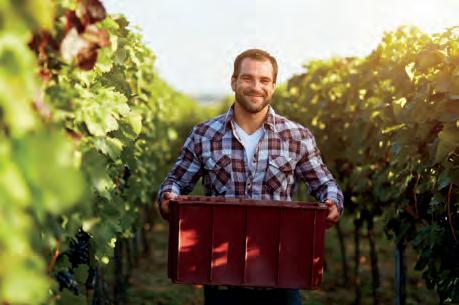
Register your interest to learn more about how we can help you. No conditions, no catches, just expert advice from qualified farming consultants. What’s not to like? Use the information below to start your journey.

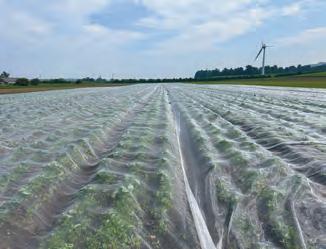


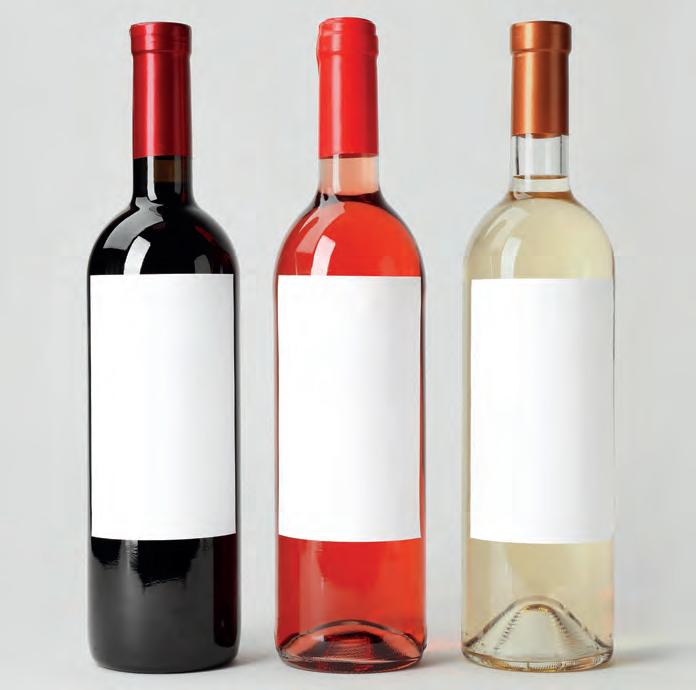


Kent-based branding agency and Silver Patron to WineGB, Oak Creative delves into the importance of brand communication, focusing on how it in uences label design and guides customer decisions.
In the world of wine, a vineyard’s brand is much more than just a name or logo. It is the story it tells and the experience it promises.
As vineyards grow their vines they must also nurture their brand. Oak Creative, rst of all introduces us to their core principles of branding – which are relevant to businesses big or small, whichever stage your vineyard business is at.
A strong brand requires a solid foundation
Your purpose, mission, vision, values, personality, and identity. These elements collectively de ne what makes your brand unique and why it exists beyond just making a pro t. Imagine a vineyard's purpose to produce high-quality wines that re ect the terroir of their speci c region, with a mission to sustain local biodiversity. This foundation sets the stage for everything else your brand communicates.
Every brand has a unique story
This narrative includes your history, challenges, achievements, and future aspirations. It's crucial to communicate this story consistently across all platforms, as it builds an emotional connection with your audience. Picture a vineyard highlighting its family heritage, sustainable farming practices, or innovations in winemaking... These elements weave together a story that resonates with customers and creates a sense of loyalty.
Understanding your customers is paramount
Developing detailed customer personas helps you tailor your brand communication to speak directly to your audience. This includes knowing what drives them, their interests, and their purchasing behaviour to help you create messages that pique their interest. Without this understanding of your audience, it is hard to create messages that lead to meaningful interactions with your brand.
This isn’t as scary as it sounds, but will be hugely bene cial to directing your brand. A brand strategy will align with your long-term business goals and involves selecting the right marketing channels, setting measurable goals, and ensuring that every brand touchpoint consistently re ects your brand's identity. It’s about being strategic in how you present your brand to ensure it supports your business objectives.
These core brand principles can help vineyards build a strong, coherent brand. Every aspect that your customers or potential customers engage with your brand is an opportunity for them to learn even more about your business. This might be an event, an ad, your website, social media, packaging and labelling, a tasting, or customer service. It’s useful to map out these journeys to ensure your brand o ers customers impactful communications at each stage. Not least forgetting the post-purchase stage when there is opportunity to build loyalty and repeat purchases.
Label design is a critical touchpoint that plays a signi cant role in the customer decision-making process, and is often the rst physical interaction a customer has with your product. During the evaluation stage of the purchase process, customers weigh various options before making a decision and an attractive label can signi cantly in uence their choice.
An appealing design that re ects your brand's identity can make a powerful rst impression, inviting customers to pick up the bottle and learn more about it. A well-designed label also tells a story – it can convey your vineyard's history, your values, the di erentiation of your wine and the care taken in its production.
The use of brand identity such as colours, type and imagery shows a professionally designed label and a commitment to quality and consistency. It reassures customers that the same care taken in creating the label extends to the wine inside the bottle – it becomes a promise. Labels must also include mandatory information such as alcohol content, volume, and producer details. Balancing compliance with creativity is key.
In summary, your wine’s label is more than just a design element; it is a strategic tool that plays a vital role in branding. By integrating the ve principles of branding into every aspect of your business and ensuring that your label re ects these principles, you create a cohesive and compelling brand experience. This holistic approach ensures that every bottle of wine is not just a product but a story, a promise, and an invitation to be part of something special.

Oak Creative is a creative partner for ambitious brands in Kent and beyond. We use our creative know-how and brand building expertise to create brands, campaigns, and websites. Having worked with many food and drinks brands over the last 30 years, we saw the need for a reliable and cost e ective e-commerce platform. The creative and tech minded team put together their creative know-how and their online sales expertise to develop FoodE.









Wineries, on a day-to-day basis, are focused on their core purpose for being in business: making an exceptional bottle of wine. To this end, they may have many systems already in place. They have an excellent approach to vineyard management, a sound selection process for raw materials and modern production management systems for producing that great bottle of wine.
However, as the winery grows, winemakers nd that their attention turns from the art of making wine to the business of both selling it and investing in the infrastructure required to ensure their long-term nancial success. It is at this point that many wineries look to invest in an end-to-end business management software solution such as Bevica.
Business management software solutions (also known as enterprise resource planning software systems or ERPs) o er growing businesses the ability to manage all their nancial and operational business systems and processes within one comprehensive software solution. While implementing this kind of software solution can be a substantial investment for growing wineries, the business bene ts achieved will outstrip the time and money spent installing the system. These include:
1. A solid nance and accounting system – At the heart of any great business management system is a complete nance and accounting solution. A system like Bevica can o er wineries all the nancial features and tools they need to manage their business e ectively.
This should include chart of accounts and general ledger as well as budget allocation, cost accounting and cash ow forecasting functionality.
2. Integrated nancial and operational systems – When investing in a business management system, wineries will not only bene t from the system’s nancial feature but also from the numerous operational functions that are included in the system. Inventory management, duty control and warehousing, purchasing and sales as well as CRM come as standard in a business management system like Bevica. In addition, the information and data included within this functionality will automatically feed into nance and reporting teams.
3. Guaranteed tax and duty compliance –Moving to a business management system, like Bevica, will help wineries stay compliant with wine industry regulations and reporting requirements, as well as HMRC duty obligations. A good business management system is set up so that standard transactions (such as sales and purchase documents) as well as warehouse operations all feed into the HMRC records required for all standard and audit reporting requirements. Some systems, such as Bevica, also create W5/W5D duty declarations as needed and automatically generate W1 compliant month end reporting.
4. Seamless connection with multiple routes to market – All wineries sell their products in many di erent ways. Whether it is via a distributor, at the cellar door, at events or online, using a comprehensive software
solution ensures that wineries can track the sales they are making and also ensure the business has a clear picture of how much stock is still in hand for future sales. In addition, the system’s integrated CRM allows the winery to collate information on customers and have a clear picture of who is buying what and when.
5. System scalability to ensure business future proo ng – All businesses want a system that can grow with them. A good business management system such as Bevica has the capability to do this. It has the exibility to accommodate your future needs, with regard to required functionality and number of system users.
6. Long-term system stability and security – Robust security features are a must for any winery that holds proprietary or sensitive business critical data. Moving to a modern business management system will ensure that business data is held on software that o ers data encryption, user access controls, regular data backups and disaster recovery redundancies. In addition, the business will bene t from regular system updates, new features and maintenance which guarantees long-term system stability.
Bevica is the cloud-based business management solution created speci cally for wineries and other businesses in the wider alcoholic drinks industry. Powered by Microsoft Dynamics 365 Business Central and its essential ERP functionality, it has the features and functionality that wineries need to boost their business power:
• A complete nance solution with all the features and tools necessary to manage your business. This includes sales, purchasing and stock functionality that links directly to your GL accounts
• Speciality alcoholic drinks industry features included as standard: comprehensive duty management and warehousing, enhanced inventory control (including lot tracking and management), and specialised item information
• Seamless integration with the wider Microsoft ecosystem, including Microsoft 365 productivity apps and the Power Platform
• Built-in integration with omnichannel sales solutions such as Shopify (covering ecommerce, cellar door and event point of sales)
• Easy scalability for future proo ng – your Bevica system grows as you grow.

The Bevica team has considerable experience of working both in and for the drinks industry. This means that we have an excellent understanding of the industry’s particular wants, needs and business processes and have built a system that meets them. To nd out more about Bevica and discover how it can boost your winery or vineyard’s business power, visit www.bevica.com/your-business/ wineries-vineyards/.
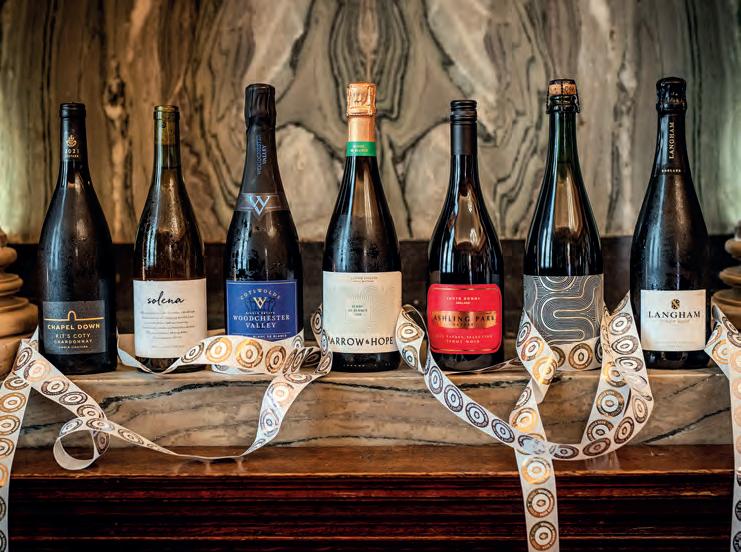
Wines made in 13 different counties were awarded trophies at this year’s WineGB Awards, following the highest number of gold medals ever given.
The trophy winners in their respective style, regional, and producer categories were revealed at a ceremony on 19th July at The Drapers’ Hall in London.
Fresh o its Decanter World Wine Awards triumph, Kent-based Chapel Down secured the top spot this year, winning Supreme Champion, Top Sparkling Wine, Best Prestige Cuvée, and the South East Trophy for its Kit’s Coty Coeur de Cuvée 2016. It didn’t stop there: it also picked up Best Chardonnay, Joint Top Still Wine, and Best Sustainable Wine for its Kit’s Coty Chardonnay 2021.
Fellow Kent-based producers Simpsons’ Wine Estate and Westwell Wine Estate also picked up trophies. Simpsons’ won Best Still Rosé Railway Hill Rosé 2023, while Westwell achieved Best Innovative Sparkling for its Pinot Meunier MV.
Another big winner was Dorset’s Langham Wine Estate, which was awarded four trophies for three di erent wines. Its Corallian Classic Cuvée NV was named Best NV/MV Classic Cuvée, its Pinot Noir 2019 won Best Blanc de Noirs and the Wessex Trophy, while its Blanc de Blancs NV contributed to it being awarded Best Estate Winery.
North Yorkshire received its rst trophy in the form of Dunesforde Vineyard’s Still Pinot Gris 2022, winning Best Single Varietal White and the trophy for the Midlands & North region.
London-based urban winery Vagabond
Wines was another high achiever, picking up Best Innovative Still, Joint Top Still Wine and the Boutique Award for its Solena NV Ortega, comprising 60% from the 2022 vintage and 40% reserve wine from a solera system.
The Blanc de Blancs category had joint victors this year, with the judges unable to choose between Berkshire’s Harrow & Hope Blanc de Blancs 2018 and Gloucestershire’s Woodchester Valley Blanc de Blancs 2018. Woodchester Valley also picked up the West Trophy.
Berkshire’s Winding Wood also picked up two trophies, winning Best Sparkling Rosé and the Thames & Chilterns Trophy for its Brut Rosé 2020.
In hotly contested categories, Ashling Park Estate (West Sussex) won Best Red Pinot Noir for its Selection Pinot Noir 2022; the Best Vintage Classic Cuvée Trophy went to Wiltshire’s Domaine Hugo HUGO 2020; and Wraxall Vineyard (Somerset) was awarded Best Still Bacchus for its Bacchus Reserve 2022.
This year’s new category – Aged Vintage Sparkling – was won by Wiston Estate (West Sussex) for its Library Collection Blanc de Blancs 2010. Wiston also picked up the trophy for Best Contract Winery.
After a record number of new entrants this year, Worcestershire’s Two Beacons Vineyard was crowned Best Newcomer for its Pinot Noir Précoce 2021. Other regional winners were Su olk’s
Hawkswood Vineyard Pinot Rosé 2023 (East Trophy) and Denbighshire’s Vale Vineyard –Gwinllan y Dy ryn Debut Sparkling White Wine 2021 (Wales Trophy).
Susie Barrie MW, co-chair of the judging panel, said: “I can’t recall us ever having such a diverse selection of WineGB trophy winners as we have this year, and I don’t just mean the fact that they come from 13 di erent counties. The range of grape varieties and winemaking styles included on the trophy list is testament to just how curious, ambitious and increasingly accomplished the UK’s winemakers are. With everything from skin contact wines, to those produced from a solera system, to some of the UK’s nest, long-aged traditional method sparklers, these wines really do run the gamut and give a terri c snapshot of what the UK has to o er at the very top level.
“The fact that we had a joint Blanc de Blancs trophy speaks volumes about the potential of this category, but the Classic Cuvée NV/MV, the Classic Cuvée Vintage, and the Sparkling Rosé categories were all equally hard fought over. When it came to the still wines, nding ourselves with ve superb Gold level Chardonnays and an equal number of red Pinot Noirs to choose from was quite something, as was the fact that for the rst time a wine from my home county of North Yorkshire was awarded a trophy.”
On receiving the Supreme Champion trophy at the WineGB awards ceremony, Chapel Down head winemaker, Josh Donaghay-Spire, said: “We’re truly delighted to win such an amazing award. When we planted Kit’s Coty vineyard, we only dreamed of the quality it could produce and revealing this has been one of the joys of being a part of the birth of a brand new wine region. This accolade is a testament to the Kent Downs and the team at Chapel Down who maximise the potential of this amazing terroir through their hard work and dedication.”
For a full list of the winners, head to https:// winegb.co.uk/our-wines/winegb-awardswinners-2024/



CORVUS 4x4 DX1000 diesel UTV, 22 plate, 850hrs, just had full service by dealer, replaced rear brake pads, excellent condition, only selling due to change in farming policy. £17,250+VAT ono. A Atterton Tel 07973 289480 (Wiltshire)

YAMAHA Kodiak 450, 2006, vgc, 6244 mls, 1002.7 hrs, owned since 2012, road reg’d fully serviced & newly refurbished, call for further details, c/w slug pelleter (used for sowing grass seed) & RDS 30 speed & area meter, retirement sale. £2,250+VAT. D Cowton Tel 07712 005508 (County Durham)
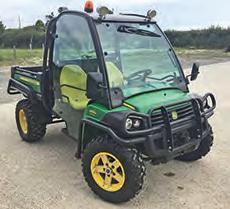
JOHN Deere 855 Gator, 2013, fully glazed cab, p/s, manual tip, manual diff lock, alloys, almost new tyres, LED work lights, beacon, newly fitted primary clutch, tow bar (rear/front), full service 20hrs ago, excellent. £9,500 no VAT. R Lintott Tel 07799 473374/01566 471493 (Cornwall)

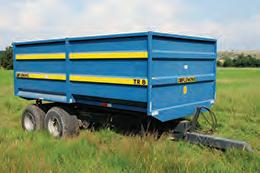
FLEMING 8t grain trailer, with grain chute, excellent condition, stored under cover. £7,900+VAT ono. D Brake Tel 07927 008505 (Wiltshire)

TRIMA bale grab/squeeze, manufactured in 1999, in good condition for age. £800+VAT ono. C Craven Tel 07786 136813 (Norfolk)

TEAGLE Tomahawk 1010 straw blower, manufactured in 2020, with 10cu/m capacity, trailed with horizontal auger & single axle, 5.22m spread width & takes a max bale size of 120 x 90cm.
£14,000+VAT ono. C Craven Tel 07786 136813 (Norfolk)

BALE spike, barely used & as good as new. E Bunting Tel 07889 640199 (Essex)
NEW Holland BR740A baler, immaculate condition, only 17000 bales. £5,750+VAT. A Haste Tel 07740 257282 (Suffolk)
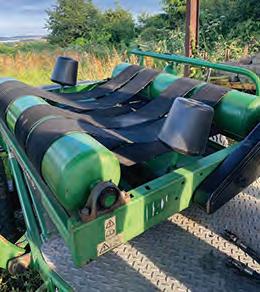
McHALE 991B, 2009, owned from brand new, 15,000 bales, full working order & good condition, used for this year’s harvest, any questions please contact me. Genuine sale due to it now being surplus to requirements. £5,750+VAT. J Smith Tel 07386 607671 (Derbyshire)
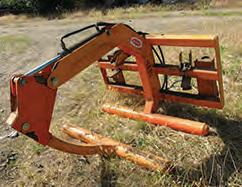
RITCHIE bale squeezer, 1st class order, with pin & cone, brackets & dual purpose adjustable brackets to fit nearly anything. £500 ono no VAT. B Gould Tel 01638 663310/07894 470640 (Suffolk)
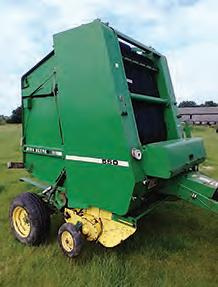
JOHN Deere 550 baler, 1988, string tie only, in working order, but does have its quirks (reflected in the price), but does the job, more than happy to discuss, or show you on viewing, video available on request, selling due to upgrade. £1,800+VAT. T Stiff Tel 07919 478811 (Norfolk)
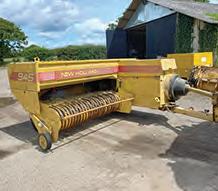
NEW Holland 945 baler, good condition, well maintained, just finished 2000 bales hay, changed for newer model. £3,000+VAT ono. J Robinson Tel 07946 715189 (Essex)
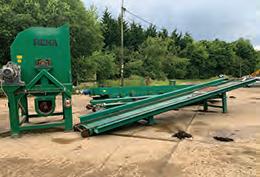
REKA big bale shredder for biomass burner, virtually new condition, c/w professionally removed electronic panel, 20m of big bale conveyor, high output double motor drive, 7m discharge auger. I Leonard Tel 07831 601213 (Norfolk)

TWOSE bale handler/rollers. £500+VAT. L Fincham Tel 07827 013267 (Suffolk)
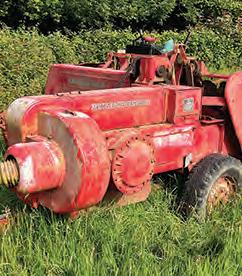
MASSEY Ferguson conventional square baler, good working order, barn stored, farm retirement sale. £950. M Murphy Tel 01892 664663 (East Sussex)
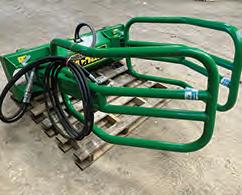
R5 bale handler, 2017, in excellent condition. G Fieldsend Tel 07830 468996 (North Yorkshire)
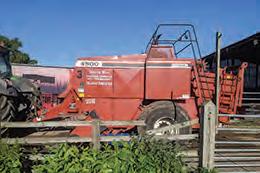
HESSTON 4900, serviced, ready to go, stored under cover. £7,995. R Hopkinson Tel 07976 424263 (Lincolnshire)
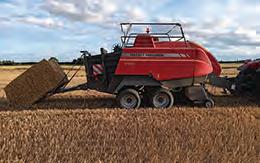
MASSEY Ferguson 2190 baler, 2012, serviced yearly, all good, low bale count. £39,950. R Hopkinson Tel 07976 424263 (Lincolnshire)
NEW Holland conventional 376 & 378 balers (wide bed), both working well last season, c/w manuals & spares. £1,450 & £1,950 no VAT; also 276 for spares. B Dodson Tel 07802 321004/01283 224238 (Leicestershire)

round baler. £5,995+VAT. R Hopkinson Tel 07976 424263 (Lincolnshire)
BOILER PLANT / HEATING / OVENS

KLOVER Pellet Boiler 24, c/w all fittings, flue, etc, 21KW, 8yrs old but only used for 2 winters, all types of wood pellets can be used, more photos & details available. £650 or any reasonable offer considered. M Walgate Tel 07713 400660 (Scottish Borders)
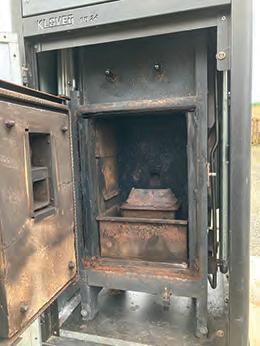
KLOVER pellet boiler 24, c/w all fittings, flue, etc, 21kw, 8yrs old but only used for 2 winters, all types of wood pellets can be used, more photos & details available. £650 or any reasonable offer considered. M Walgate Tel 07713 400660 (Scottish Borders)
BUILDINGS & MATERIALS
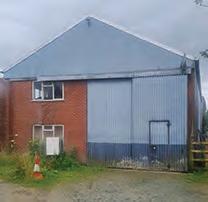
LARGE industrial farm building, buyer to dismantle, good condition. £15,000 ono. L Walker Tel 07786 981905 (Shropshire)
TOILET block towable 2.2m x 3.6m,
1 female 2 male cubicles, 20 years old, stored under cover, tyres both flat so will need to be trailered away, OX15 area. £950. A Mann Tel 07407 159451/07920 142740 (Oxfordshire)

LOG cabin, 3 bedrooms, 2 bathrooms, new fitted kitchen hardly used, rewired & tested, 40x20 splits, welcome to view, used as temporary accommodation whilst house renovation was completed. Open to offers. J Dixon Tel 01359 259034/07823 555210 (Suffolk)

STEEL framed building, approx 16m span x 18m length, 3.7m to eaves, substantial steel sections, c/w steel roof purlins, dismantled ready to be collected, please note no roofing sheets or cladding included in the sale. £8,500 ono. M Whitlock Tel 07745 819890 (Cambridgeshire)
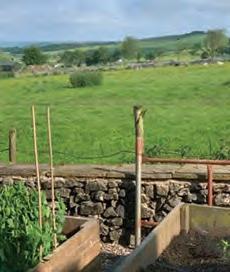
TOP soil & subsoil, 10-15T available in the next 4 weeks, we are digging out a 13m by 9m section of our meadow to build a farm barn, we will be digging a metre down, so there will be approx 10-15T. O Stanton Tel 07494 114088 (Derbyshire)

STORAGE container, used, 15’ x 8’, ex chem store, generally in good order, repair needed to small hole in the roof & floor. £550 ono. J Harris Tel 07711 414074 (Kent)
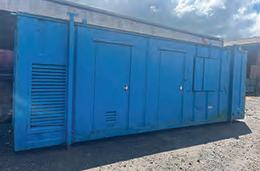
WELFARE cabin, kitchen, office, drying room, all locks secure, c/w window shutters, all wired with consumer units, lights & sockets. £2,995. R Hopkinson Tel 07976 424263 (Lincolnshire)

VIRGINIA Pinelog lodge 28’ x 20’, great condition, 2 bedrooms, 1 bathroom, fully fitted kitchen, much more spacious than a caravan, used whilst renovating house. £20,000 ono. H Whatling Tel 07834 689878 (Nottinghamshire)

CLAAS Lexion 560TT combine harvester, 4534hrs, 04 reg, good condition. £45,000+VAT ono. P Watson Tel 07885 272342 (North Yorkshire)









1997 John Deere 2256, 16’ cut, air con, straw chopper, header trailer, owner driver last 9yrs on small acreage, 2696 drum/3631 eng hrs, vgc. £19,500 ono. T Foss Tel 07711 283234 (Northamptonshire)

CLAAS Dominator Mega 202, 1994, 3300hrs,15’ Contour hdr, dividers & side knife, chop/chaff, grain loss & shaft spd monitors, Griffith Elder weigher, hdr trailer, AC, radio, spares, manual/parts book, ready mid Aug, photos available, gc. £25,000+VAT. M Gemmill Tel 07779 223458 (Essex)

CLAAS Senator 70, 1979, full working order, starts & runs fine, also have header. £3,500. L Hogarth Tel 07889 232373 (North Yorkshire)

MATROT DC135 combine side knife, electric motor, 2009, never been used, shop soiled, c/w bracket & cover. £850+VAT. B Turnham Tel 07896 124031 (Northamptonshire)

AIR compressor, 3 phase, 3hp, 100L, good condition. £100+VAT. S Temple Tel 07789 750553 (Norfolk)
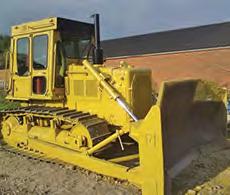
CATERPILLAR D6D, 1984, new u/carriage, engine overhaul inc pistons, liners, injectors & turbo, all hyd seals replaced, inc track adjusters, new track spring, Cat 3 3pt linkage with hyd top link, 10’ carry blade, a/c & fire suppression. £30,000+VAT. G Springell Tel 07831 096485 (Buckinghamshire)

CATERPILLAR 312B, 2003, 10250hrs, tracks & digs, but does need a bit of attention to one of the planetary gears, but will still do a job, sale due to requiring hammer & rotation lines. £10,000+VAT. T Blundell Tel 07845 546945 (Oxfordshire)





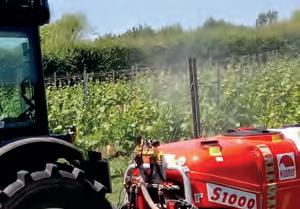
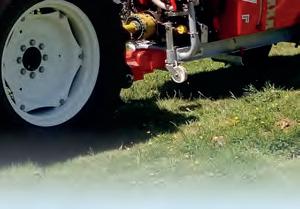
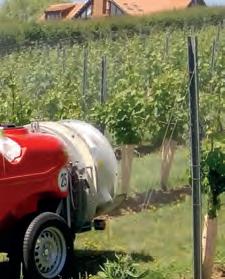
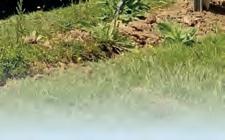



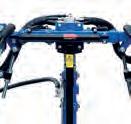
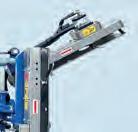
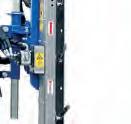



























DABRO 4’ grass slitter, good condition, ideal behind small tractor/quad, etc, south Cambs. £975. L Farrer Tel 07766 084808 (Cambridgeshire)
VORTEX 9’ Topper, good working order, farm retirement sale. Priced to sell £385. M Murphy Tel 01892 664663 (East Sussex)
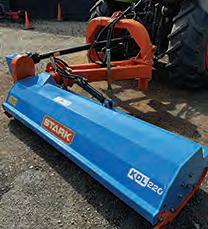
STARK KDL 220 flail verge mower, 2.2m cut, mows behind tractor or at side, 45 degrees down for dykes or 90 degrees up for bank & hedges, in good working order. £2,500+VAT. S March Tel 07860 835995 (Essex)
SCHUDDER (Kuhn) 360 Hark haybob, only been used twice by owner just like new. £3,950 ono. R Brown Tel 01494 837641/07778 041144 (Buckinghamshire)
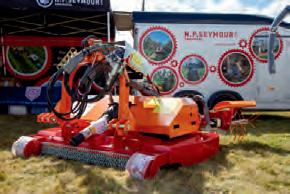


VIKING/STIHL MT6127.0ZL ride on, 2014, full MD eng service, May 2024 £800, deck fully restored with new bearings & pulleys, 2 new drive belts & blade replacement, used as standby, only 100hrs, machine stored hence new bearings, exc cond. £1,500 ono. E Price Tel 07979 924616 (Conwy)

HAYTER Beaver trailed gang mower, runs @2.6m wide & will run on as little as 32hp, south Cambs. £975. L Farrer Tel 07766 084808 (Cambridgeshire)

8-METRE grass harrow, hydraulic fold. £650. C Gowler Tel 07831 746953 (Cambridgeshire)
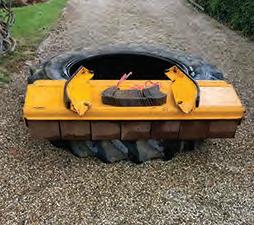
McCONNEL front hood for PA35 hedge cutter, 1988, plus side skids & set of 48 grass flails, none of these items have ever been used so just slight rusting from storage. £120 ono. R Peak Tel 07860 165381 (Essex)

IRRAFRANCE irrigation unit, now surplus to requirements, in good working order, average condition. S Attwood Tel 01795 880441 (Kent)
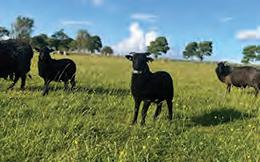
HEBRIDEAN wether lambs (4), April born, hardy sheep, excellent for grass trimming as well as dog training, we can deliver if required at extra cost, all Heptavac’d & wormed. £50. O Stanton Tel 07494 114088 (Derbyshire)
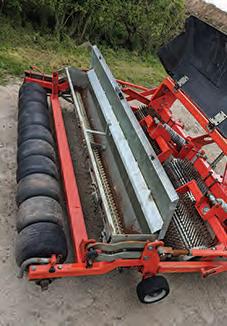
WEIDEMANN grass overseeder, had little use. £2,500+VAT. R Hopkinson Tel 07976 424263 (Lincolnshire)
HAYBOB needs TLC. £150. K Pugh Tel 07977 912970/01694 771258 (Shropshire)
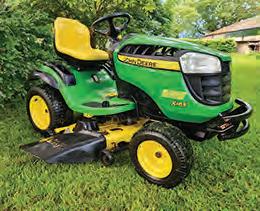
JOHN Deere X165 ride on mower, 48” cutting deck with side discharge & EdgeCut Technology, mulch plate available as well, 4 stroke petrol engine, headlights, hydrostatic forward & reverse with cruise control, 9.1L tank, 370hrs, excellent. £3,250 ono. L Northern - NO PHONE OR POSTCODE Tel 07519 634008 (Hertfordshire)

McCONNEL 9 topper, 2.75m working width, in working condition, upgrading due to increased scale of farming operations. £2,400+VAT. G Oliver Tel 07999 465109 (Suffolk)

WESSEX CHT 150 hedge trimmer, vgc, always stored under cover. £4,500 ono no VAT. T Marshall Tel 07825 224804 (Hampshire)
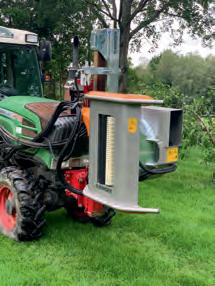
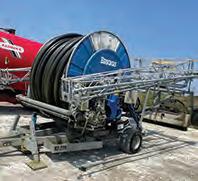
BRIGGS 82-220 irrigation unit, 30m boom, in good working order, 2009. POA. S Attwood Tel 01795 880441 (Kent)
OLD irrigators with 250m of good polythene pipe. £300 each. S Leggate Tel 07779 59210 (Lincolnshire)

WRIGHT Rain 110/500 irrigation unit, surplus to requirements, good working order, average condition. S Attwood Tel 01795880441 (Kent)
SMALL cider business (to be relocated), potential for expansion, logo/branding, goodwill/customer base, full range of picking, pressing & bottling equipment, 7000L matured cider + containers, chance to buy traditional apples from organic orchard. S Younger Tel 07963 414468 (Shropshire)
ANGLO Nubian goats (3), registered, two 2023 nannies & one unrelated billy, all are tame & friendly. E Bunting Tel 07889 640199 (Essex)
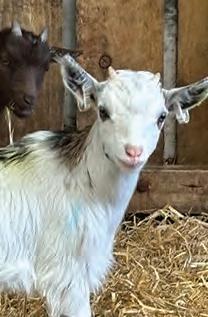
FANTASTIC selection of 2024 Pygmy kids available, nannies & wethers, herd vaccs, wormed & good trimmed, very strong stock & used to being handled. E Bunting Tel 07889 640199 (Essex)

HEBRIDEAN pedigree rams - Bolt & Rex, gorgeous boys looking for new home, can sell singularly or as pair, born on farm spring 2023, hardy, good natured & easy to care for, bucket trained, fully up to date with worming & vacs. £70. O Stanton Tel 07494 114088 (Derbyshire)

MALE alpacas from Top Accoyo breeding from Peru via Blenheim & Shanbrook. P Parsons Tel 01162 402246/07821 352403 (Leicestershire)

PURE polled Simmental bulls from Sense Valley Dirnanean Apostle & Crackley Cadette breeding, no need to dehorn, grass fed, healthy stock, always TB free. P Parsons Tel 01162 402246/07821 352403 (Leicestershire)




PEDIGREE Jacob starter flock made up of one pedigree ram, proven & registered £220, four pedigree ewes 3yrs old, proved & regularly bred well, £150 each; also available one pedigree ewe lamb, currently unregistered but c. £100 ono. O Stanton Tel 07494 114088 (Derbyshire)
WYDALE feeders (calves, lambs, goats), 3 x 5 space milk substitute feeders & hanging brackets, limited use from new, some fittings available, retirement sale - see other listings. Best offers - cash on collection, your own transport/loading required. F Wapples Tel 01406 330644 (Lincolnshire)

KENNELS 8’x12’, block of 3, professionally built, very good condition. £600. R Anderson Tel 07887 484733/01366 728583 (Norfolk)
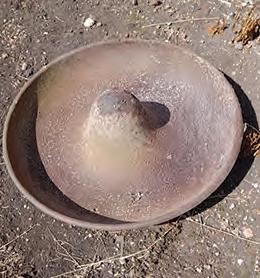
CAST iron pig troughs, four 34” & two 26”, good condition. £100 each. A Howell Tel 07528 729118 (Cambridgeshire)

CATTLE/HORSE feeder, pretty good quality - has been used but good to go. E Bunting Tel 07889 640199 (Essex)
RITCHIE 347G cattle crush, suitable for animals 6–8mnths old, c/w dehorning yolk, head strap & movement wheels, retirement sale –see other listings. Offers. Collection by appointment – cash on collection, you arrange loading/transport. F Wapples Tel 01406 330644 (Lincolnshire)

KENNEL 7’x9’, very good condition, professionally made. £3,250. R Anderson Tel 07887 484733 (Norfolk)

FERRI straw chopper, 2.2m wide, tractor PTO driven, ideal for chopping straw, game cover, light scrub, some rust on paintwork, but in good working order, buyer to collect. £350+VAT. D Driver Tel 07747 016492 (Suffolk)

SHOTBLASTING gun c/w 20kg of shotblasting grit. £50. R Sinkler Tel 01377 270251 (East Yorkshire)

FLOWER bulb hot water steriliser, 1T capacity (40 nets or 2 half tonne boxes), diesel fuel burner with digital control & circulation pump, c/w cages for lowering in pallets, always stored & operated under cover. £700+VAT ono.
W Tyrrell Tel 07985 476263 (Lincolnshire)
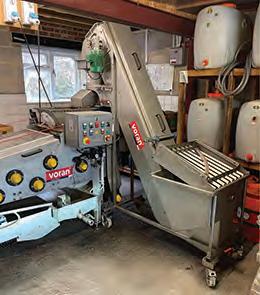
VORAN EPB 500 240V belt cider press & Voran RM 2,2 elevator mill, 2010, capacity 1T/hr.
£25,000+VAT ono. J Lawrence Tel 07968 180049 (Somerset)

AVANT A35689 1500mm bucket broom, 2022. £3,000+VAT; also listed separately an Avant hydraulic grab & Avant 1600mm. £3,600+VAT ono. H Riste Tel 01823 793676 (Somerset)

MULTIONE 10.9 loader Avant 860i, 2020, 510hrs (still in regular use), multi function joystick, 3.2m boom, 2.1t lift, will work Avant attachment, 95L/min oil flow, fully weighted, 2spd 78hp Kohler, LEDs, diff lock, anti slip valve. £38,000+VAT ono. T Freeman Tel 07826 558944 (Suffolk)
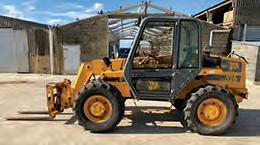
JCB Loadall 526/55, 1996, 9328hrs, 4ws, 4wd, air seat, a/c, PUH, LED work lights, tool carrier headstock, 2 sets of weld on brackets, tyres 400/70-R20 Vredestein 75% tread, Datatag, handbook & parts book, spare filters, average. £15,000+VAT ono. J Carlisle Tel 07768 008865 (Bedfordshire)

AVANT A41569 hydraulic grab attachment, 2022. £1,750+VAT; also have an Avant bucket broom attachment as well as an two Avant 1600mm heavy duty buckets also available . £2,100+VAT ono. H Riste Tel 01823 793676 (Somerset)

TWO buckets off my 2022 Avant A36535, heavy duty general bucket, 1600mm wide, straight edge, 460l volume, 150kg; also have an Avant hydraulic grab, as well as an Avant bucket broom available listed separately.
£550+VAT ono. H Riste Tel 01823 793676 (Somerset)

MANITOU 634-120 LSU Turbo Telescopic, 2010, 4100hrs, JCB Q -Fit headstock, air seat, Michelin tyres, pallet tines, PUH, bucket available, owned for 11yrs, done virtually nothing for last 3.5yrs, excellent condition all round.
£28,000 no VAT. R Lintott Tel 07799 473374/01566 471493 (Cornwall)

CATERPILLAR forklift, in good working order, 2010, 6.5t. £6,000+VAT ono. J Hurd Tel 01985 840260/01985 840039 (Wiltshire)

MANITOU bolt on brackets. £150+VAT. J Forrester Tel 07815 694758 (West Midlands)
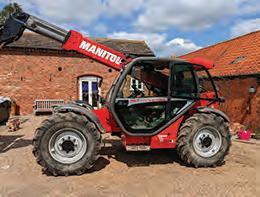
MANITOU 735 MLT LSU Turbo teleporter, 11 plate, 6500hrs, all good, air con, boom suspension.
£29,995+VAT. R Hopkinson Tel 07976 424263 (Lincolnshire)

JCB 2CX Air Master, 2100hrs, 2 pipe air compressor, 4 in 1 bucket, all good. £9,995+VAT. R Hopkinson Tel 07976 424263 (Lincolnshire)
MATBRO TS 280, 1996, in very good condition, new tyres all round, PUH, fully serviced ready to go, 7200hrs, I have the log book for it. £16 750+VAT ono. F Bray Tel 07971 589095 (Somerset)
ICE cream tricycle with electric charge fridge, in excellent condition. £1,000+VAT ono. D Browne Tel 07716 178586 (Aberdeenshire)
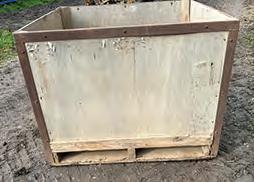
WOODEN boxes, 4’ x 4’ x 3’, has metal surround, ideal for logs, etc, 100 available, south Cambs. £15/ box. L Farrer Tel 07766 084808 (Cambridgeshire)
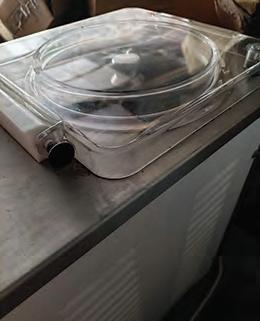
TELME Gel 9 gelato/Ice cream maker, 5L batches, with automatic unload, in excellent condition, hardly used as change of policy. £5,000 new, would like £3,000+VAT ono. D Browne Tel 07716 178586 (Aberdeenshire)
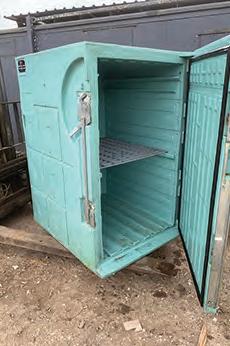
TWO Olivo 1100 type roll insulated industrial freezer/cool boxes each over £1,000 new, good order just needs freezer packs to go, w40” x 47”d x 62”h, could be stood upright or laid down. £450 the pair or £250 each ono. P MIles Tel 07769 727783 (Hertfordshire)
RODENATOR R1 burrow collapser (bunny banger), c/w lance hoses, regulators & flash back resistors, for sale due to ill health & lack of rabbits, Thetford area. £400. C Barrett Tel 07811 342050 (Norfolk)
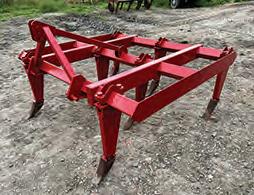
MF 7 leg chisel plough, good points, south Cambs. £750. L Farrer Tel 07766 084808 (Cambridgeshire)
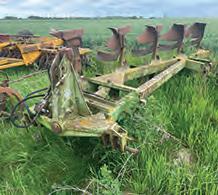
DOWDESWELL DP7E plough, in working order, 5 furrows, c/w trash boards, fair condition. £500+VAT. M Whitlock Tel 07745 819890 (Cambridgeshire)

ARWANA Premium Pumps
RS32EA water pump, 18.5’ outlet hose, auto shut off, 1.5” diameter hose. £70. R Sinkler Tel 01377 270251 (East Yorkshire)

HONDA 50cm water pump with inlet & outlet hose. £350+VAT ono. D Smart Tel 01223 861482 (Cambridgeshire)
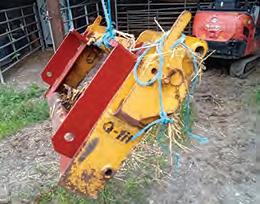
JCB Quick fit headstock converted to fit Matbro pin & cone, good condition. £750 ono. Buyer collects & pays cash. G Ulley Tel 07798 872221 (South Yorkshire)
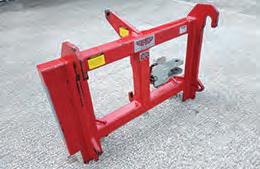
AGRIWELD Quickshift machinery mover, JCB QuickFit brackets, 5T SWL, picks up & moves any 3 point linkage machine via the top link bracket, plus a Clevis hitch for trailed implements, excellent condition. £1,000 no VAT. R Lintott Tel 07799 473374/01566 471493 (Cornwall)

FORD tractor spares, complete back window with all glass & hinges for Ford Q cab, 4 & 6 cylinder models. £500 ono no VAT. Collect from near Newmarket. B Gould Tel 01638 663310/07894 470640 (Suffolk)

HOUSEHAM AR3600, 2008, 5568hrs, 2 sets of tyres with good tread, rear camera, well maintained machine, location is Lincolnshire. £37,500+VAT. J Pears Tel 07733 033214 (Leicestershire)
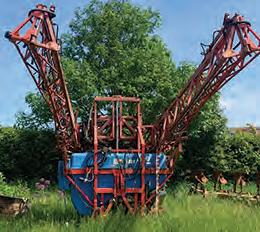
GEM Slimline 12/24m sprayer with additional tank (1000L), full working order. £1,500. L Hogarth Tel 07889 232373 (North Yorkshire)

KUHN Axis 30.1 fertiliser spreader with border control, spool valve, hydraulic on/off, manual rate setting, no costly electrics or weigh cells, vgc. £2,850. A Towns Tel 07751 917839 (Lincolnshire)
LELY 3cwt fertiliser seeder/spreader, c/w good hopper, gwo. £100 ono. A Phillipson Tel 01777 702815 (Nottinghamshire)
STRAW & HAY
HAY for sale, small bales, 2023 crop, need to clear for this year’s crop. £3.50/bale collected, can deliver locally. E Monk Tel 07885 496730 (Essex)
EIGHT acres of grass to cut in Mendlesham. Offers. R Bailey Tel 01449 766350 after 6pm (Suffolk)

SPECIES-RICH hay in round bales, 13 available, wrapped, harvested in 2023 from our natural species rich hay meadows, excellent condition, can deliver for additional cost if required (price per mile). £25. O Stanton Tel 07494 114088 (Derbyshire)
TANKS & BOWSERS
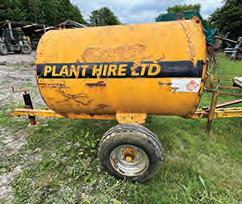

1100-LITRE fuel bowser with manual pump, south Cambs. £650. L Farrer Tel 07766 084808 (Cambridgeshire) We stock plenty of IBC tanks & fittings
of the Forest of Dean Ltd
Tank & Drum Experts
Collect from stock or nationwide delivery available

Visit www.smdd.co.uk or call 01594 833308

300-GALLON bunded fuel tank, fits on pallet tines. £120. K Pugh Tel 07977 912970/01694 771258 (Shropshire)
VICON round baler. £5,995+VAT. R Hopkinson Tel 07976 424263 (Lincolnshire)
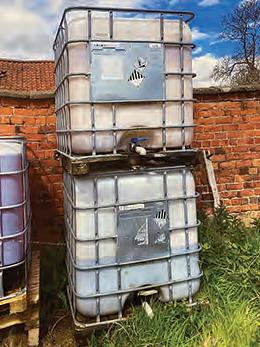
TWO IBC 1000L containers. £40 each. R Sinkler Tel 01377 270251 (East Yorkshire)
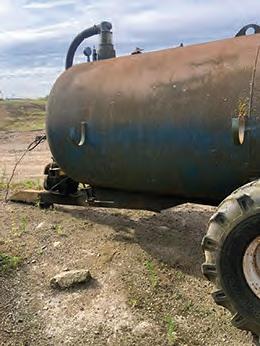
POTENTIAL VINEYARD SUBSOILER/SOIL LOOSENER:
Howard Paraplow, rare 2 leg model with rear depth wheel.A pass either way between the rows? £1,250+VAT. G DO Howell 07903 089391
LAMBORGHINI 956 (or similar) wafer weights (6). £150. A Phillipson Tel 01777 702815 (Nottinghamshire)

9000-LITRE bowser, in good working order, now surplus to requirements, average condition. S Attwood Tel 01795 880441 (Kent)
FLOTATION rear wheels (2) for John Deere tractor. £500. A Goodacre Tel 07901 917707 (Lincolnshire)
DIESEL bowser, solid steel bullet, fast 12v pump, vehicle tow hitch & lights. £850. A Goodacre Tel 07901 917707 (Lincolnshire)

BUNDED diesel bowser, 2000L, electric pump, mobile. £995+VAT. R Hopkinson Tel 07976 424263 (Lincolnshire)



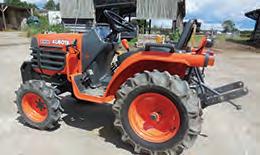
KUBOTA B1610 compact tractor, 1020hrs, used on allotments, vgc. £6,000 ono. D Smart Tel 01223 861482 (Cambridgeshire)






With a background in farming we understand the need for quality and durability in our products - we would not accept anything less for our own farm.


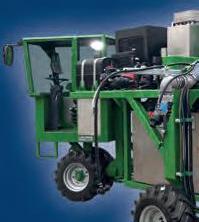













JOHN Deere wafer weights, 4 x 5kg. £160. A Phillipson Tel 01777 702815 (Nottinghamshire)
CAT 55 crawler, with front linkage. £18,000+VAT. A Haste Tel 07740 257282 (Suffolk)
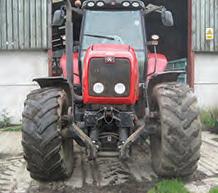
MASSEY Ferguson 6499, 2004, genuine 6300hrs, front linkage, 4 speed Dynashift Datatronic, front suspension, a genuine well cared for tractor, 2 owners from new, retirement sale. £27,500+VAT. C Hodgson Tel 07809 465333 (County Durham)
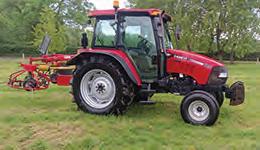
CASE IH JXU 105, 2010, 2wd, air con, air seat, 2 manual spools, full spec tractor, nearly new rear tyres, hook ends, 30K gearbox, no faults, excellent condition, very genuine tractor, 4400hrs. £22,500+VAT. S Powell Tel 07970 504749 (Gloucestershire)

NEW Holland T6050 Delta 3290hrs, 2008, excellent condition, very good Michelin tyres, manual gears, second owners, from mainly arable farm, weights not included, excellent. £32,500+VAT ono. D Brake Tel 07927 008505 (Wiltshire)
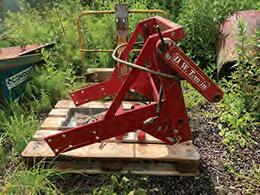
D.W.TOMLIN front linkage for NH T6, but may fit others, south Cambs. £775. L Farrer Tel 07766 084808 (Cambridgeshire)
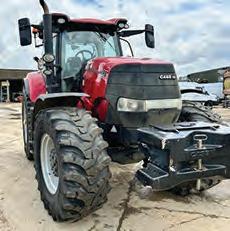
CASE Puma 240 CVX, 2020, 5200hrs, very good condition throughout. £62,500+VAT ono. L Finch Tel 07850 589060 (Essex)
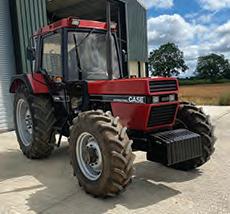
1992 Case 956XL, has been restored externally & is an excellent example of a popular tractor, working hour clock shows approx 6700hrs, new front tyres, runs & drives well. £16,500 no VAT. I Woodward Tel 07960 866025 (Leicestershire)

CASE Puma 240 AFS CVX, 2022, 1700hrs, excellent condition, tyres 60%. £56,000+VAT. L Finch Tel 07850 589060 (Essex)

NEW Holland Boomer 25 compact tractor, 2021, 143hrs, 25hp, 4wd, in excellent condition, collection from our farm in Perth, payment on collection by cash/bacs please, can deliver within 30mls FOC or at a cost nationwide. £6,200 ono. A Diehl Tel 07917 920272 (Perth & Kinross)
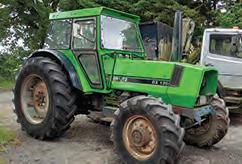
DEUTZ-FAHR DX 120, 1982, only 3800hrs from new, in working order, sold as seen, c/w spare windows, lights, paint & other bits, with some finishing touches, any questions or to view please call. £7,000 ono. S Lumley Tel 07500 266973 (Suffolk)
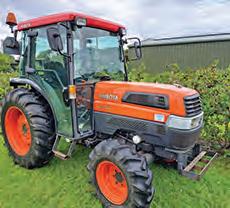
KUBOTA L5030 GST, 5418hrs, 52hp, 2006, 4wd, 12spd shuttle gearbox plus creeper box, 95% Bridgestone Agric tyres, a/c, PUH, Cat 1 lift arms, 2 spools, weight frame, 58” wide, tidy, ready for work, 15mins from Dartford Crossing. £12,250+VAT. A Tickle Tel 07900 558964/01474 871527 (Kent)
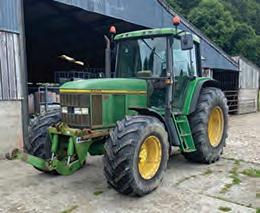
JOHN Deere 6600, 1995, 5050hrs, in good condition, 40K, front linkage, push out hitch, 3 spools, will go straight to work, ideal collector’s tractor. £198,950+VAT ono. W Rogers Tel 07951 419138 (Shropshire)

JOHN Deere 7530 Premium, 2007, good clean tractor, 5600hrs, tyres 650/540, front linkage, ready to go. £47,000+VAT ono. R Bond Tel 07866 530980 (Norfolk)
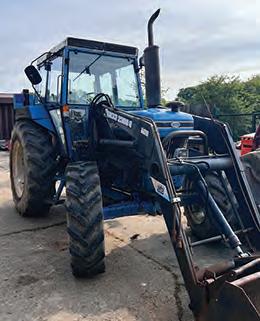
FORD Tractor 6610 4wd with Quicke loader, fork & bucket, two gearsticks on floor, low profile roof cab, D reg, low hrs, two owners from new. £12,985 no VAT. M Murphy Tel 01892 664663 (East Sussex)
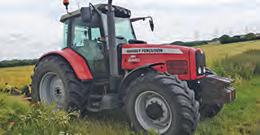
MF6480 Dyna 6, 3 manual spools, air con, passenger seat, front & cab susp, with full set of weights, on farm since new, excellent condition for age (2006), 40k, 650 rear & 540 front tyres with plenty of tread, genuine 5800hrs. £27,999+VAT ono. N Whitebread Tel 07770 365121 (Kent)

DAVID Brown Case 885 narrow, 1979 J reg, 1205 recorded hrsbelieved to be genuine, excellent starter & runner, recent full service of filters & oils, early life spent on a nursery, original downswept manifold & full exhaust included. £5,450. R Lintott Tel 07799 473374/01566 471493 (Cornwall)

MX loader C3+ loader, 2023, fitted to Boomer 40 (New Holland) can sell separately, MACH Quick release for hydraulics, joystick control, genuine reason for sale, as new. S Godwin Tel 07970 625051/07814 766718 (Wiltshire)

IFOR Williams P8G 5’ height trailer, owned from new 2014, lightly used, excellent condition, c/w original handbook & wheel lock, spare wheel never used, selling as need space & no longer keeping pigs, very useful trailer & nice to tow. £2,500. J Payne Tel 07881 503146 (Warwickshire)
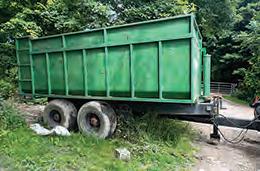
MERRICK Loggin 18t trailer, ideal muck trailer with high sides, lights & brakes work, few small holes in top of tailgate, but apart from that all good, south Cambs. £5,000+VAT. L Farrer Tel 07766 084808 (Cambridgeshire)

BAILEY 2.5/3T tipping trailer, 2018, double plated floor, trailer brakes, great condition as had minimal use, ideal as a muck trailer (livery yard/farms) or general use. £3,500 no VAT. K Carr Tel 07867 970121 (Northamptonshire)
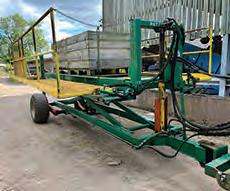
PATTENDEN Kestral hi-lift picking/ pruning trailer, self unloads apple boxes, folding sides, gwo. £3,000+VAT. B Blandford Tel 07973 424473 (Hereford)
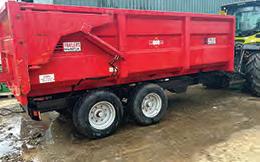
AS MARSTON 10t trailer, c/w hydraulic tailgate, in good condition. £6,500+VAT ono. D Lunn Tel 07941 072957 (Cambridgeshire)

RICHARD Western 10t grain trailer, c/w grain chute, stored under cover. £3,500+VAT. D Brake Tel 07927 008505 (Wiltshire)

3-TON hydraulic tipping trailer, strong steel construction, hydraulics in working order, tyres & sides all good, just needs a new floor, been kept under cover, retirement sale, fair condition, 1960s. D Hodgson Tel 07591 236518 (Lincolnshire)
TWO genuine Ifor Williams hub/ drum assemblies KS0827 DP120G, 250x40 brake 5 stud, brand new/ unused or fitted, bought to renew our DP120’s hubs, but had to replace the entire axle which comes with hubs/backplates attached, can be couriered. £244+VAT. G Parkes Tel 07855 288597 (Leicestershire)
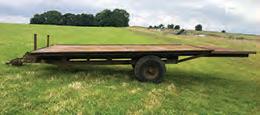
SINGLE axle bale trailer, 19’ steel bed, well built but could do with a little tidying here & there, can send more pictures by Whatsapp if required. £600+VAT. B Robinson Tel 07740 683113 (Gloucestershire)

SALOP 9t tipping trailer, tips well & has brakes, in good condition apart from couple small holes on front bulkhead, good tyres, has grain chute, south Cambs. £2,250+VAT ono. L Farrer Tel 07766 084808 (Cambridgeshire)

Brabazon, grain trailer, 2011, with rollover sheet, hyd back door, super singles, ready to go. £8,000. J Hicks Tel 07539 367336 (Oxfordshire)



JOHN DEERE 5105GF 2021, 1252hrs, 24F/12R Power Reverser 40kph transmission, 380/70R28 – 280/70R20, a/c cab, front linkage.
PREMIUM USED MACHINE
Stk No A1076654 £45,000
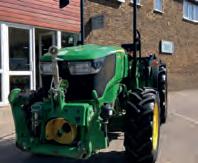
JOHN DEERE 5075GL 2018, 1438hrs, 24F/24R transmission, 380/70R24280/70R18, front linkage & PTO.
Stk No. A1068285 £22,500


JOHN DEERE 6120M 2023, 91hrs Autopower 40Kph, 540/65R34 - 440/65R24, Commandarm, front suspension, front linkage & PTO, Autotrac ready.
PREMIUM USED MACHINE
Stk No A1076670 £98,000
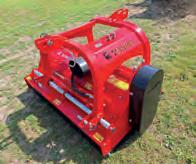
TEHNOS MU150RLW 2023, front & rear mounted, hydraulic offset. We have a large selection of toppers in stock to meet your needs.
No 21073250 POA
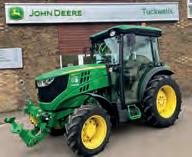

JOHN DEERE 5090GF 2019, 3329hrs, 24F/12R Power Reverser 40kph transmission, 380/70R28 – 280/70R20, a/c cab, front linkage & PTO.
PREMIUM USED MACHINE
Stk No A1072787 £34,000

JOHN DEERE XUV865M 2022, 1187hrs, olive & black, 27” Maxxis Bighorn tyres, split seats, OSR cab doors, cargo box power lift. Stk No A1074710 £22,000






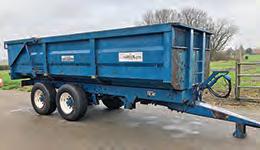
2003 12T Richard Western root trailer, hydraulic rear door, super singles, grain chute, lights, sprung drawbar, sheet rack, optional sheet, more photos available upon request. £6,750+VAT.
B Burton Tel 07775 877136 (Nottinghamshire)
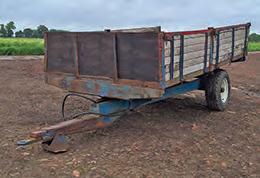
TWO-WHEEL tipping trailer, 3t, steel floor, good tyres, ram has no leaks. £800 ono. M Short Tel 07388 400519 (Cambridgeshire)
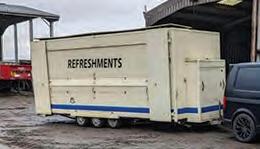
20-FOOT catering trailer, in full working order & ready to go, 2 grills, 2 fridges, coffee machine, chip fryer, pie warmer & more. £12,995. R Hopkinson Tel 07976 424263 (Lincolnshire)

FAST tow ex army 3.5t trailer, sprung axles with lockable chemical container, used behind Unimog or Land Rover to transport IBC & chem to sprayer, in good condition, great for taking diesel tank to combine, owner retiring. £350. P Williams Tel 07966 273748 (Lincolnshire)
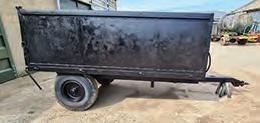
TIPPING trailer, 2T approx, with tailgate, tractor hook up, ideal for horse muck, logs, small loads, etc, manual tailgate. £750. R Rayner Tel 07808 066655 (Cambridgeshire)

MARSHALL 8t tipping trailer, has new floor, tips well, good tyres, travels well, lights work. £2,550. L Farrer Tel 07766 084808 (Cambridgeshire)
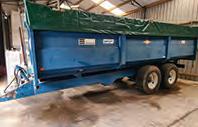
AS Marston 14t grain tipping trailer, new thick rollover cover, hydraulic lifting, good tyres, hydraulic brakes, manual swinging tailgate, front ladder, good condition. £6,950+VAT. R Rayner Tel 07808 066655 (Cambridgeshire)
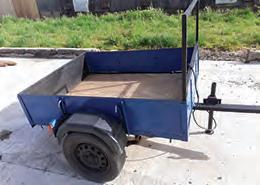
TRAILER 4’x5’, steel sides, front & back, new floor, lights, good tyres. £150. R Anderson Tel 07887 484733/01366 728583 (Norfolk)
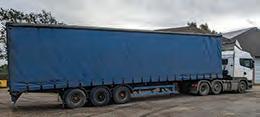
45-FOOT taughtliner trailer. £2,495. R Hopkinson Tel 07976 424263 (Lincolnshire)
TYRES & WHEELS

FULL set agricultural wheels & BKT LG-306 tyres, back tyres: 33x15.5-16.5, fronts: 23x8.5-12, both wheels & tyres in fabulous condition, from my Mitsubishi Captain but will fit other tractors. £850 ono. S Attwood Tel 07450 255232 (Worcestershire)

PAIR 230/95-R44 wheels, 90% tread. £300+VAT. M Hammersley Tel 07971 909256 (Staffordshire)

TRELLEBORG flotation wheels & tyres, preowned set of two 400/55-22.5 & set of two 600/55-26.5, hardly used, came off a Landini Alpine 85, all hold air & have plenty of tread left. £1,200 ono. E Johnston Tel 07968 177214 (Perth & Kinross)

SET of John Deere rims, came off 7530 or similar, will fit a lot of models, front rims to suit a 540/65-R30, rear to suit 650/65R42, in excellent condition. £300 ono no VAT. L Cuddy Tel 07966 115509 (Northamptonshire)
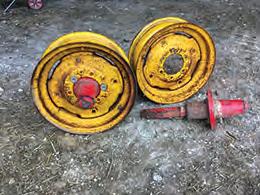
PAIR of wheels & axles, 7.5” x 16”, good condition. £100+VAT ono. D Driver Tel 07747 016492 (Suffolk)

GOODYEAR 16.9-R34 tyre, about 40% tread, lots of surface cuts, but generally sound, stored inside. £80. R Peak Tel 07860 165381 (Essex)
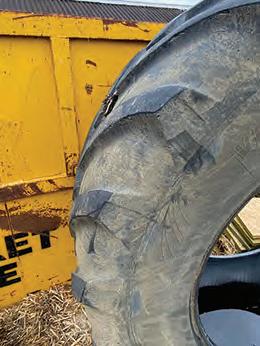
MICHELIN VF 710/60R42 tyres, fair condition. c Clarke Tel 07711 404371 (Suffolk)

PAIR of Firestone tyres, holding air when taken off, 30% tread, 650/65R/42. £100+VAT ono. B Beesley Tel 07803 266361 (Leicestershire)

FLOTATION wheels (4), 650R7530 Michelin Axiobib tyres, 40% good, no cuts or repairs, strong, heavy duty wheels by Specialist Wheel Services Ltd, all in good condition. £2,000 ono. P Williams Tel 07966 273748 (Lincolnshire)
TWO Loadall tyres, 15.5/70-R24 @51% tread. £137. K Pugh Tel 07977 912970/01694 771258 (Shropshire)

1995 Land Rover Discovery 300TDI, 149,848mls, runner with issues, MOT’d Jan 2024, ran short of water since, engine tight, moves in 4wd, for spares, repair or breaking, needs trailering or towing away, more pics online. £1,000 ono. G Parkes Tel 07855 288597 (Leicestershire)
LAND Rover Defender 110 TD5 pickup with cover, 2002, 128000 miles, any questions please call Dave 07913 722085. £11,750+VAT. J Usher Smith Tel 07527 938077 (Kent)

TOYOTA Hilux Extra Cab, 2023/73 reg, 1 owner, metallic blue, 6300 miles, air con, remote lock, tow bar, excellent. P Wheeler Tel 01452 223322 (Gloucestershire)

LAND Rover Discovery 5 SW 3.0 SDV6 HSE Luxury 5dr auto, long MOT, recently serviced, two new tyres, 34,000mls. £33,500. S Parrish Tel 07785 502436 (Essex)
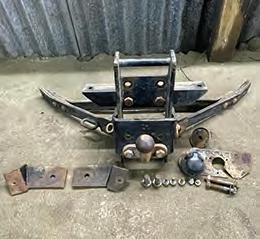
DEFENDER adjustable tow bar, genuine Land Rover one, good condition, came off an 06 Defender, c/w all fixings. £120 ono no VAT. A Clarke Tel 07708 205708 (Norfolk)

VOLKSWAGEN Transporter long wheel base Caravelle 2L TDI automatic, air con, parking sensors, 45000mls. £17,500. R Hopkinson Tel 07976 424263 (Lincolnshire)

MAN 440 26 TGA Taughtliner, 6 wheeler, drawbar spec, auto, long MOT. £5,000+VAT. R Hopkinson Tel 07976 424263 (Lincolnshire)
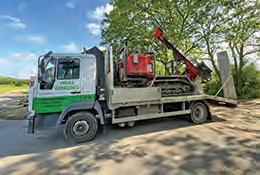
MAN LE12-180hp 12t beavertail lorry, 2004, 414kms, 7t payload, MOT end March 2025, aluminium body, manual ramps, v good tyres, cruise control, towbar with 12v electrics, been on 6-weekly inspections, owned over 5yrs & been very reliable. £3,600 ono. L Hull Tel 07908 861993 (Essex)

LISTER J type stationary engine, been stored in shed for quite some time, all wheels turn. £150. A Howell Tel 07528 729118 (Cambridgeshire)
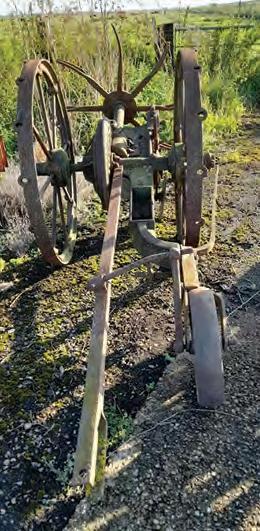
HORSE-DRAWN potato spinner, gwo. £150. A Howell Tel 07528 729118 (Cambridgeshire)
WOODEN grading riddles (6), handheld, various sizes, sold separately, fair condition. £25 each ono. A Howell Tel 07528 729118 (Cambridgeshire)
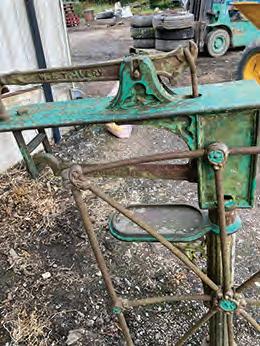
TRADITIONAL cast iron scales, ideal refurbishment project. £80 ono. J Cowie Tel 07743 702897 (Moray)

MARSHALL 702 2wd tractor, 1984, 2967hrs on clock, had light working life, excellent starter/runner. £3,250 ono. P Thompson Tel 07952 149629 (Northamptonshire)

VINTAGE Lister stationary engine for restoration, non runner, but is complete & turns over freely. £100+VAT ono. D Driver Tel 07747 016492 (Suffolk)

LISTER Start’O’Matic 240 volt 2.6KVA, starts & runs OK, c/w control box, etc, must weigh a tonne, can load. £500. J Pickett Tel 07973 177623 (Kent)
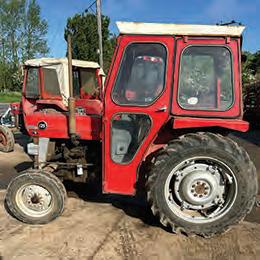
MASSEY Ferguson 135 with QD cab & PAV wheels in tidy condition, 1975, 6752hrs, mechanically all seems good.
£6,500+VAT ono. D Lunn Tel 07941 072957 (Cambridgeshire)
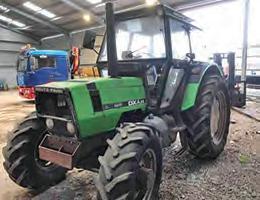
DEUTZ-FAHR DX 4.50, 1984, in full working order, 8000hrs, any questions or to view please call.
£7,500 ono. S Lumley Tel 07500 266973 (Suffolk)
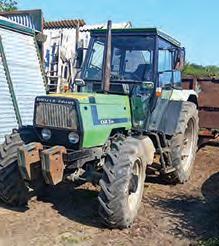
DEUTZ-FAHR DX 3.90, 1989, 8000hrs, in full working order, had top half engine rebuild recently, any questions or to view please call. £8,500 ono. S Lumley Tel 07500 266973 (Suffolk)

BENTALL cement mixer, needs attention. £100+VAT. I Fowler Tel 01245 227494 (Essex)

INTERNATIONAL 955 4wd, 1980, W reg, for work or play, runs well. £7,000+VAT ono. B Beesley Tel 07803 266361 (Leicestershire)
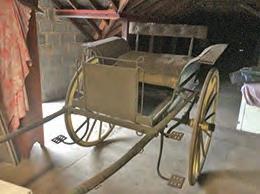
HORSEDRAWN 2 wheel rally cart/ trap, Buggie lance wood sprung shafts, 1920s, good working order, barn stored. £650. M Murphy Tel 01892 664663 (East Sussex)

FERGUSON TEF20 tractor, diesel, f/w banana loader in working order, 1955. £5,500+VAT ono. J Hurd Tel 01985 840260/01985 840039 (Wiltshire)

DUAL Feed sack weigher, weighs two 25kg sacks, 25kg dead weight on rear platform, grey slide diverter to switch outlets; also antique collectable wooden sack weigher - deal for the two! (See separate listing). £95. R Rayner Tel 07808 066655 (Cambridgeshire)

VINTAGE electric power hacksaw, full working order. £100+VAT. D Driver Tel 07747 016492 (Suffolk)
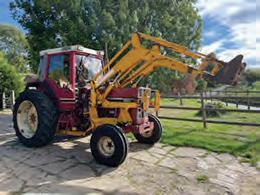
INTERNATIONAL 956XL 2wd, 1983 on same farm since new, Grays Lynkon loader, pallet forks, muck fork, bale spike, full set IH weights, had new clutch, 7431hrs, mechanically sound, but need tidying, no longer required. £9,000 ono no VAT. N Mrozek Tel 07498 545990/07899 840902 (Suffolk)

ANTIQUE wooden sack weigher, wood treatment done & stained, add a 25kg weight on one side & pop a sack on the other, fill the sack until the base moves & the three pieces at the top are in line, good condition. £75. R Rayner Tel 07808 066655 (Cambridgeshire)
KONGSKILDE Vibro-Flex 4300 Series, 4 rows of tines, slung underneath, with Rotacrats or tickler tines on the back please. J Weston Tel 07803 270448 (Lincolnshire)
FINGERBAR hedge cutter for small 50hp tractor required, must be in good condition & good working order, East Anglia only. P Waspe Tel 07462 472289 (Suffolk)
KONGSKILDE TRL fans required.
L Pugh Tel 07968 170848/01568 611338 (Herefordshire)
Especially looking for: Kubota B2100/B2400 Mitsubishi MT200HD or 301HD
JCB 526-55 upper & lower doors required for a 1995 Farm Special. A May Tel 07714 028000 (Essex)
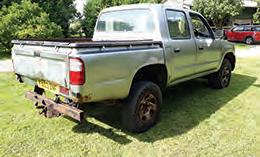
PICK-UP trucks required by Suffolk grower, prefer older types & running, but they don’t need to be tidy! Cash on collection. Please call with details of what you have, ideally East Anglia region. J Long Tel 07711 079821 (Suffolk)
HAY required (or haylage), must be good quality & weed free, cash on delivery, Market Rasen. M Chapman Tel 07971 940087/01673 843663 (Lincolnshire)
CLEAN & genuine Case 956XL or 1056XL tractor wanted, to be worked & looked after for nostalgic reasons, if you would like your tractor to go to a good home please get in touch. K Potter Tel 01223 290349 (Cambridgeshire)
STORE cattle, any breed, prefer over 12 months, TB tested or untested off TB farms; also store lambs or hoggetts. K Pugh Tel 07977 912970/01694 771258 (Shropshire)
LOW mileage Land Rover 90 Defender or any 4x4 for private use only. K Pugh Tel 07977 912970/01694 771258 (Shropshire)
COUNTY Crawler with linkage. J Doe Tel 07860 314240 (Suffolk)
HOWARD Rotovator. J Doe Tel 07860 314240 (Suffolk)
CASE Maxxum 5140/50 required by farmer, will be used to work on the farm, so show condition not necessary, ideally good mechanically, but would consider a damaged tractor, as have one for spares. B Harris Tel 07990 741527 (Warwickshire)
BOMFORD Superflow cultivator wanted. S Bygraves Tel 07973 117993 (Cambridgeshire)
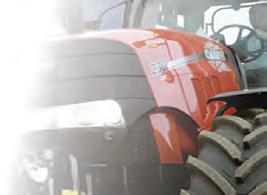

Tel: Charles on 07850 210256 Email: charles@microplant.net


WANTED by Suffolk grower, old farm pickups & 4x4s in Anglia region, prompt collection & cash payment, prefer runners, but anything considered. J Long Tel 07711 079821 (Suffolk)
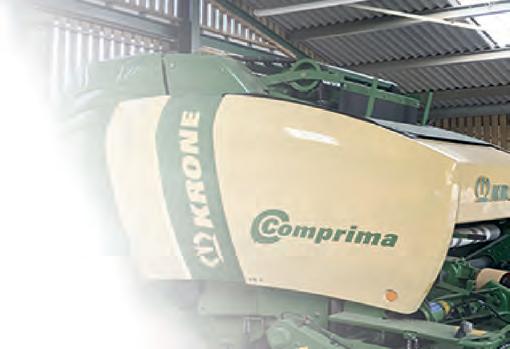



10-FOOT flat roll, prefer 30” diameter, but must be good condition. A Crawley Tel 07974 748588 (Hertfordshire)









Q. What are the key challenges facing growers?
A: There’s no doubt it’s been a tough three years for British apple and pear growers. In particular, they have struggled with high cost in ation and low returns from supermarkets, which has put their nancial viability at serious risk. As a result, we have seen growers cutting back on tree planting and this could pose challenges for future supply. However, in recent months things have started looking up. We’ve seen some positive signs that retailers are listening and starting to recognise the value of long-term partnerships and investment in British orchards and our farmers.


Despite a tough three years for growers, things have started to look up in recent months. We spoke to Ali Capper, executive chair of British Apples & Pears, for some insight.
and fair contracts with supermarkets. We would also like to see the government deliver on the recent commitment of £10 million for orchard investment.

Q. What would you like to see from retailers?


Q. What are the future opportunities?
A: A key opportunity for us is to increase the percentage of British apples on sale in UK supermarkets. We have the ideal climate to grow the best apples in the world and, with high-tech storage solutions, we could have year-round supply of British apples. There would be no need to import fruit, with the associated environmental impact and food miles that brings.

BAPL has an ambition of 60% of all apples sold in the UK being from the UK by 2030. With supermarket support, that’s something I’m con dent we can achieve and even surpass.
Q. What would you like to see from the new government?
A: We’ve set out a clear manifesto from British apple and pear growers. There are 10 clear actions that would help to secure the future of our industry. Two important actions relate to access to seasonal labour to help us pick our fruit
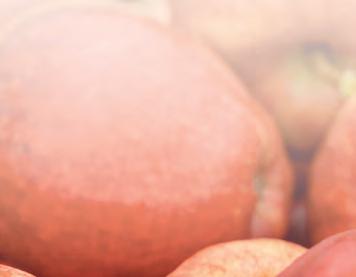
A: We continue to ask retailers to support growers with fair returns and longer-term contracts that help our farmers balance the risks they take to supply fruit. In terms of longer-term contracts, we are doing some work to help support the sector with frameworks for the legal and cost of production terms that should be considered. In addition to that, we need retailers to show their support for British apples and pears, especially during the start of the season. This year we want to see retailers undertaking more TV advertising, social media promotions and big in-store xture celebrations for the new season fruit. We know UK consumers are keen to buy British fruit, we just need retailers to join in on the celebrations and promote British apples and pears, making them the easiest to nd in-store and online.

Q. What campaigns are BAPL working on?
A: We’re very busy campaigning on behalf of our growers. This involves liaison with government and retailers, as well as promoting our wonderful apples and pears directly to consumers via our social media channels. Our key consumer messages are “superfood” (the health bene ts of apples), “an apple a day” and “OrchardWatch” which brings to life the hard work of our growers. Right now [in July], we’re focusing on getting ready for start of season 2024 and liaising with

SEDEX and others over proposed changes to its ethical audit that will have big potential consequences for the industry.
Q. What have been some recent ‘big wins’ for the sector?



A: The seasonal worker visa scheme has historically been organised on an annual basis with the details con rmed at the last minute each year. This has caused huge challenges for our growers. We were delighted when our campaigning resulted in the government announcing a ve-year scheme. We do need the new government to continue this commitment. Another big win for us has been the healthy retail competition we’ve set up. By publishing our monthly apple and pear sales data, we’re able to showcase which supermarkets are best at supporting British. This transparency has really got retailers competing with each other to sell the most British apples.

Q. What three things would you like to say to growers?
• Remember that you produce some of the tastiest and highest quality fruit in the world – please take pride in your hard work

• Your crop association is here for you –ring or email me directly if you need to discuss an issue
• If you want to get more involved in our work, please get in touch.




Ali Capper grew up on a farm in Herefordshire and spent 18 years working in advertising and marketing agencies in London. She married Richard Capper in 2006 and is a partner in Stocks Farm, which has been in the Capper family since 1962. For more than 200 years, the farm has grown hops and fruit on the Herefordshire/Worcestershire border. Since around 2012, Ali has also worked hard to help represent the sector through the NFU and, latterly, BAPL.
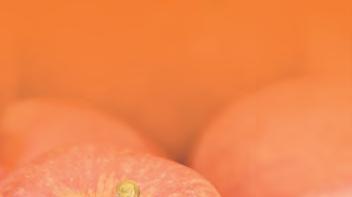

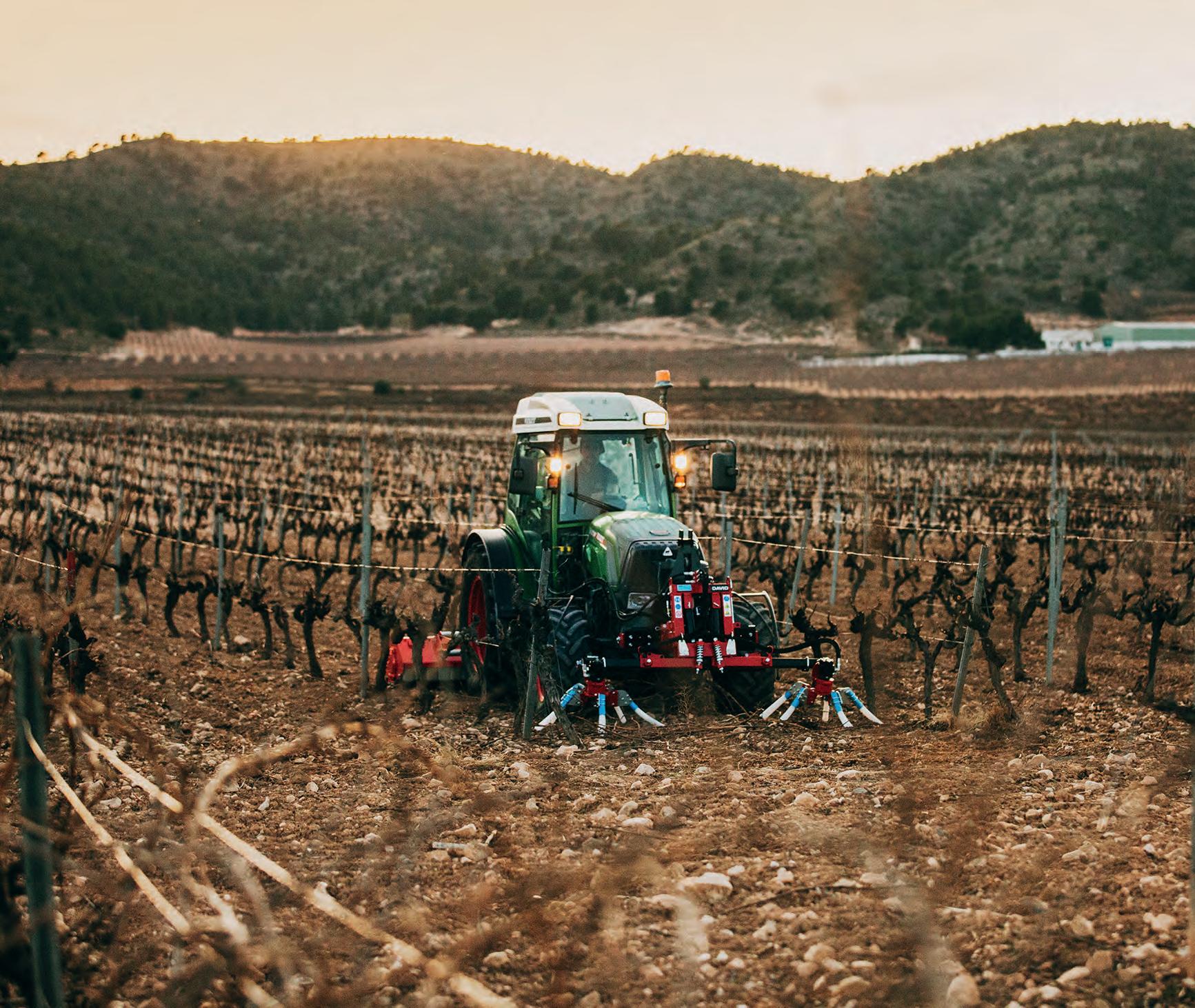
Proudly supporting the future of viticulture and fruit farming.
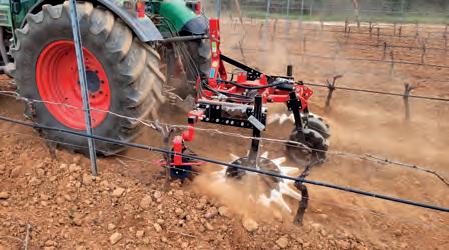
Crawfords Group is proud to be appointed as your authorised ID David Dealer. We are committed to bringing you a wide range of specialised and innovative solutions designed to support the viticulture and fruit sectors. Our expert team is here to provide you with the latest in cutting-edge technology and reliable service, ensuring your operations run smoothly and efficiently.
Discover how our ID David products can enhance your vineyard and fruit farming with unmatched precision and performance.
Visit us today or contact us to learn more about how Crawfords Group and ID David can help you succeed!




